
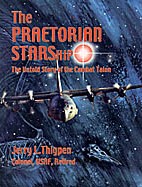
Operation EAGLE CLAW
1980. Iran.
Americans are still being held hostage after incompetent marine corps pilots in navy RH-53D helicopters fail in the desert. A collision with a parked EC-130 Hercules modified to be an expedient tanker craft for the MC-130E Combat Talon Is and helicopters leaves 8 dead.
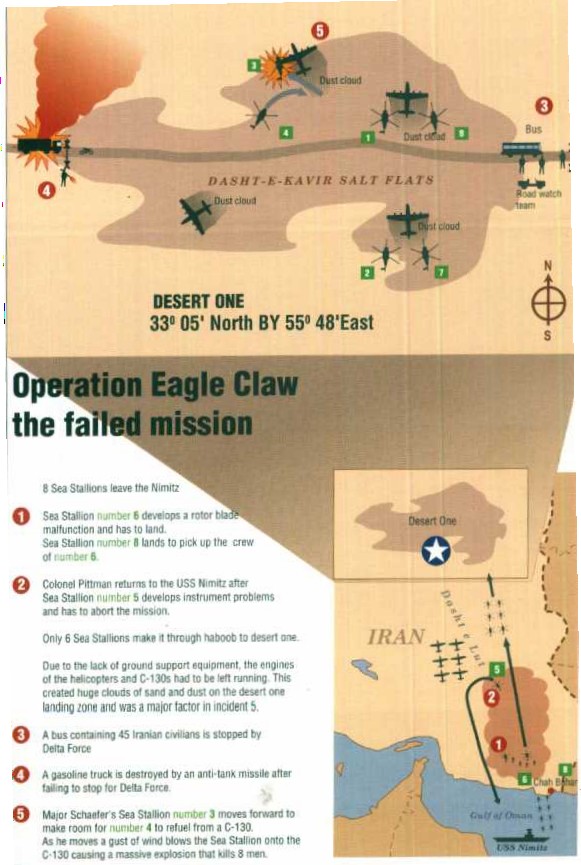
(Click on picture for full-size image)
What about Los Banos?
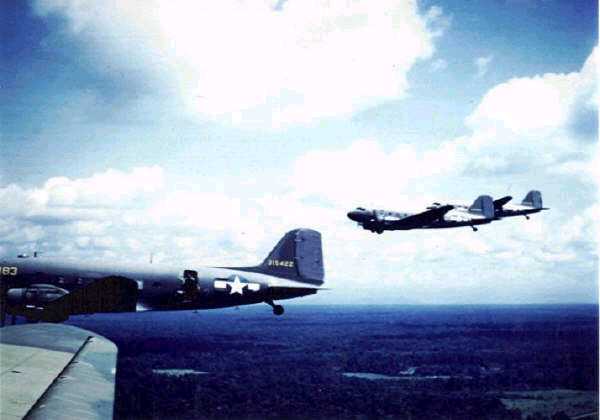

Clearly, the Iran rescue mission's failure was the fault of the USMC helicopter pilots, but the RESPONSIBILITY for the failure rests with Army Colonel "Charging Charlie" Beckwith--a straight-shooting guy we admire.
Its time we face some unpleasant facts because the whole helicopter leisurely transporting SOF units IN and OUT has been biting us in the ass for decades now and represents a "gene" of technotactical incompetence that keeps growing back. The best open-sources are Colonel Kyle's book The Guts to Try, Beckwith's Delta Force and CSM Eric Haney's book Inside Delta Force.


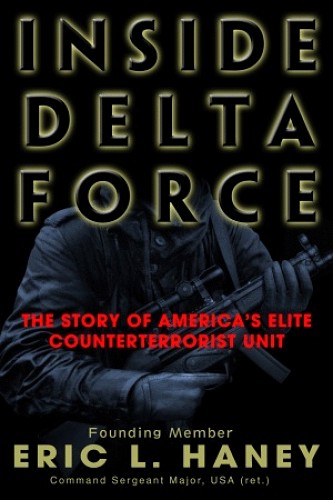
First off, its entirely possible that Beckwith DID NOT EVEN KNOW ABOUT THE HIGHLY SUCCESSFUL 1945 WW2 POW PARACHUTE AND AMPHIBIOUS TRACKED ARMORED PERSONNEL CARRIER RESCUE/RAID AT LOS BANOS IN THE PRE-INTERNET ERA of 1980. This is entirely the fault and responsibility of the dumb-ass, anti-intellectual, non-professional, corporate bureaucracy, U.S. military that wants blind-obedience, 19th century lemmings that does not even know what itself has done in the past because military professional reading is NOT required for EVERY Soldier. Hollywood has yet to make a movie on the Los Banos raid to force professional awareness on the part of our military.
Moreover, in 1980 the WW2 generation was still physically capable enough to PARTICIPATE in a hostage rescue; WW2 Ranger veteran Colonel Arthur D. "Bull" Simons who in fact lead the nearly successful Son Tay Vietnam war POW rescue mission Beckwith modeled Eagle Claw after was available to consult or even participate directly and even did-it-yourself by rescuing two of Ross Perot's EDS executives from Iran as described in Ken Follett's book, On the Wings of Eagles and the TV Mini-Series by the same name with Burt Lancaster as Simons. Son Tay Raider Major Dick Meadows was called back to active duty and in fact on the scene in Tehran doing recon of the embassy waiting for the assault forces to arrive.
It gets even better. Captain John Ringler, the leader of the Los Banos raid in WW2 was available in 1980 for consultation, because the hard-charger is still active TODAY in 2008. Ringler could have been discreetly located in some Army IBM punch card data base or through the Airborne veterans associations and brought in for advice on how to do Eagle Claw by parachute insertion.
So why didn't Beckwith parachute IN his Delta rescue force?

Beckwith was a Vietnam war vet spoiled by the artificially created helicopter mobility construct there. ALL Army helicopters in Vietnam were under the logistical support of one organization and the place was covered in mechanics and spare parts and fuel to keep short-range Huey helicopters hopping and hovering. Beckwith apparently did not see that flying THOUSANDS of miles by helicopters in a long-range raid deep behind enemy lines is NOT THE SAME THING as flying in a Huey a few dozen miles from a forward operating base (FOB) awash in logistical support. Even the Son Tay Prison Raid in 1970 was routine long-range penetration flying for USAF helicopter pilots who rescued pilots daily from North Vietnam--to fly long-range from an aircraft carrier deep into Iran "cold turkey" by unskilled marine helicopter pilots is not the same as doing long-range helicopter penetrations continuously for YEARS from Thailand into North Vietnam by pros. Next, his ASS UMption that paratroopers jumping in will suffer 10% injuries on landing reveals an anti-Airborne bias of a big man (Beckwith was well over 220 pounds) and simply not true. Had Beckwith had a better grasp of helicopters through personal experience and/or advisors and been a smaller man not averse to parachute jumping even without knowing about Los Banos, he would have chosen a parachute insertion for the plan and it would have probably been successful becoming America's "Entebbe" miracle.
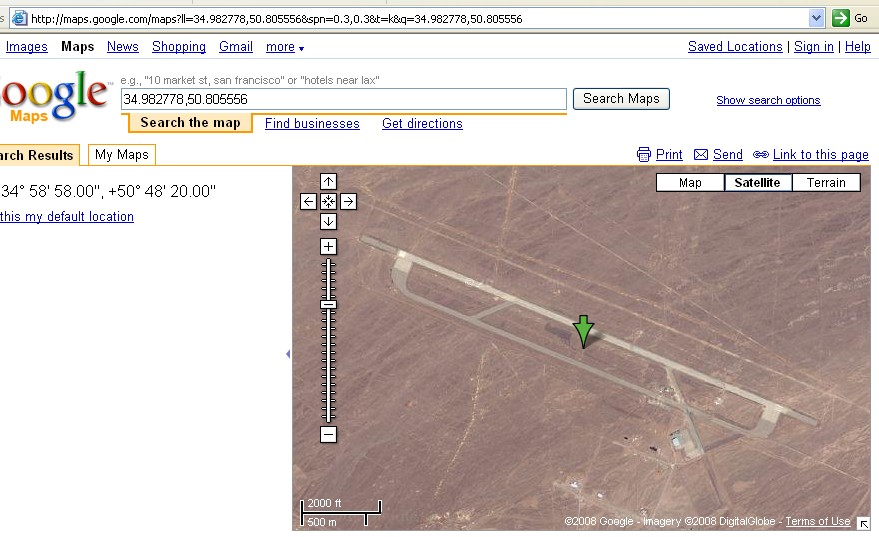
Had Delta Force parachuted IN--then infiltrated into Tehran for the embassy take-down, the helicopters to fly them OUT would and should have been flown in themselves inside reliable fixed-wing USAF aircraft to Manzariyeh air base 50 miles to the southwest that Army Rangers were to seize and hold and wait nearby as a quick reaction force (QRF) if needed. If bullet-resistant UH-60 Blackhawks were available in 1980, they could have been stuffed inside some C-5 Galaxy jet transports and flown under their own power into the Tehran discrete FOB. Even large CH-53-type helos could have been flown inside C-5s--but more would have been required. Another option would be to modify UH-1 Hueys with extra fuel and stuff them inside C-141 Starlifters and C-5s to fly out Delta force from the nearby soccer stadium after they had sprung the hostages free from their captors.
There would have not even been a "Desert One" refueling stop had the mission been as described above; the vast distances would have been covered by long-range fixed-wing aircraft--not attempted by fuel hungry, mechanically unreliable helicopters. Sadly, this truth is not understood even today as the overly complicated helicopter gene is being mutated into the monstrous V-22 tilt rotor and American light infantry and SOF units continue to overly on helicopters that are easily shot-down: even if they can make it to the target area.
Operation HONEY BADGER
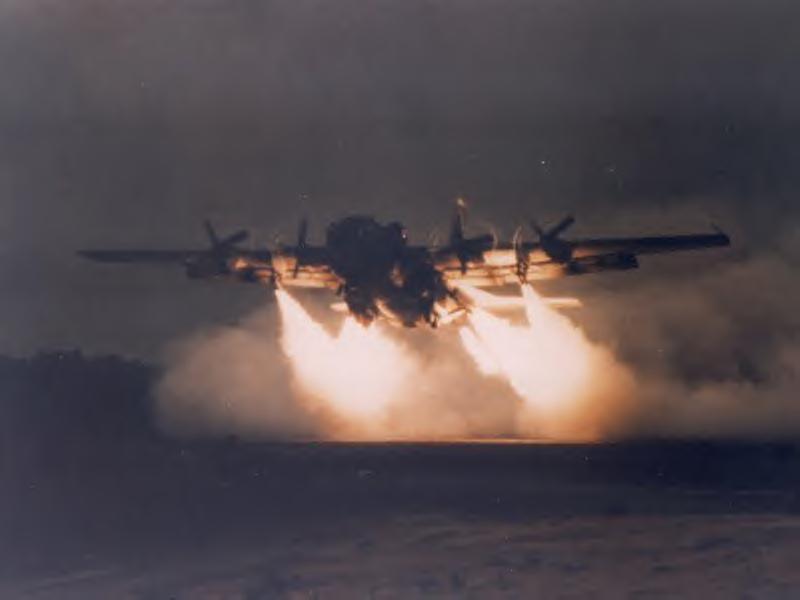
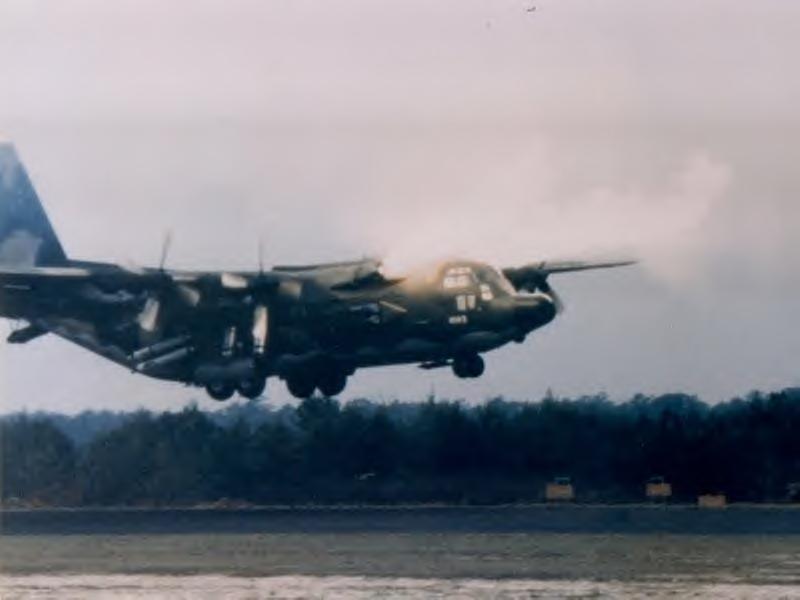
After the marine-created Desert One debacle (planners wanted qualified USAF SOF pilots but had marine pilots forced on them due to politics), helicopters are no longer an option. We can parachute IN a rescue force like we did in the 1945 Los Banos prison raid and helped the Belgian Para-Commandos rescue hostages from the Congo for Operation Dragon ROUGE/NOIR, but cannot afford to seize an airport in the middle of downtown Tehran to fly everyone out. So rescue planners like the legendary USAF specops pilot General Richard Secord turn to the dependable, legendary C-130 Hercules fixed-wing Short Take-Off and Landing (STOL) aircraft for answers. And the " Credible Sport" approach worked--as you'll see in the video--rockets enabled a C-130 to do VTOL or "extreme STOL" (ESTOL). Using bicycles for ground mobility to ease the requirements of where to land or take-off was also considered.
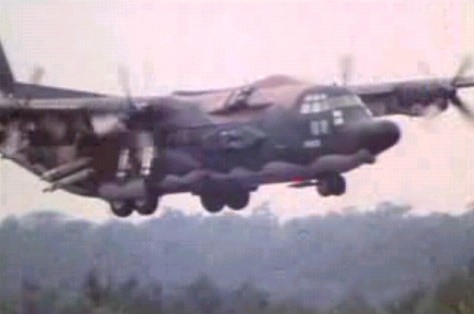


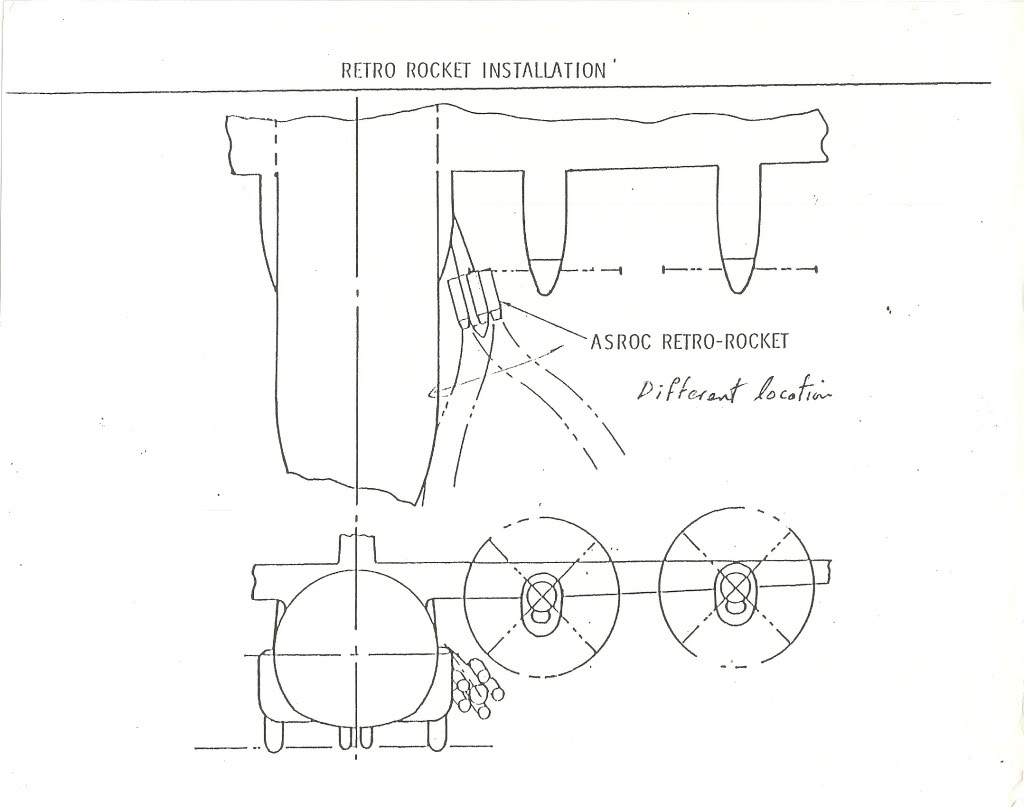
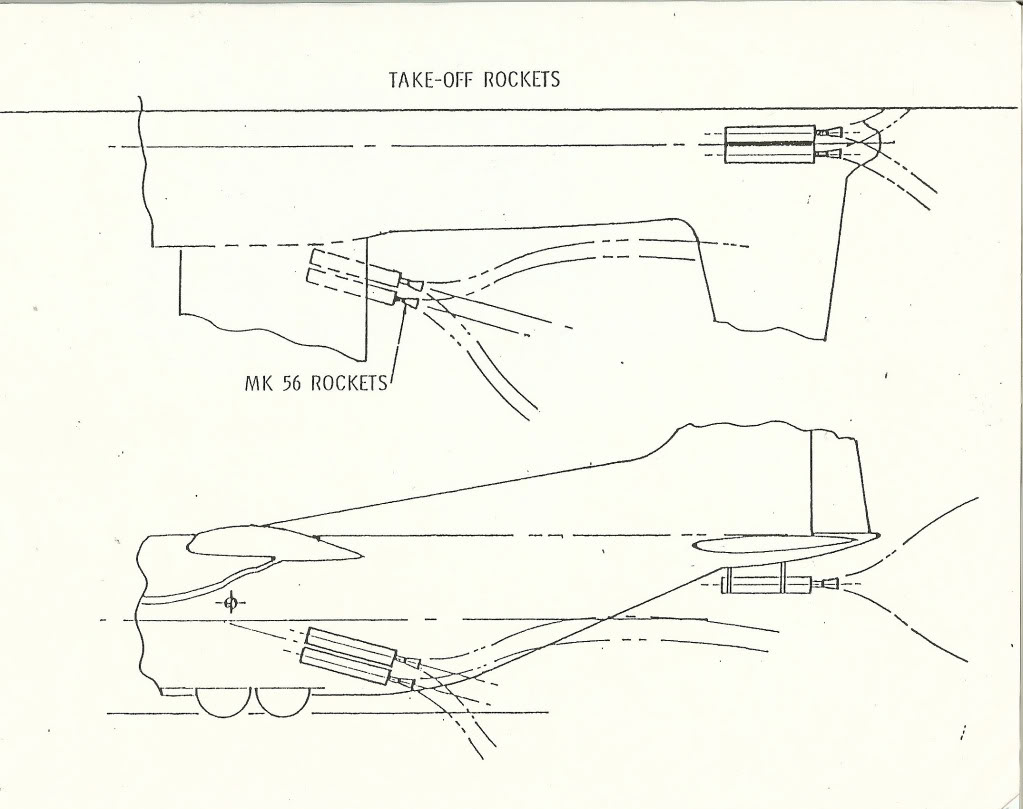
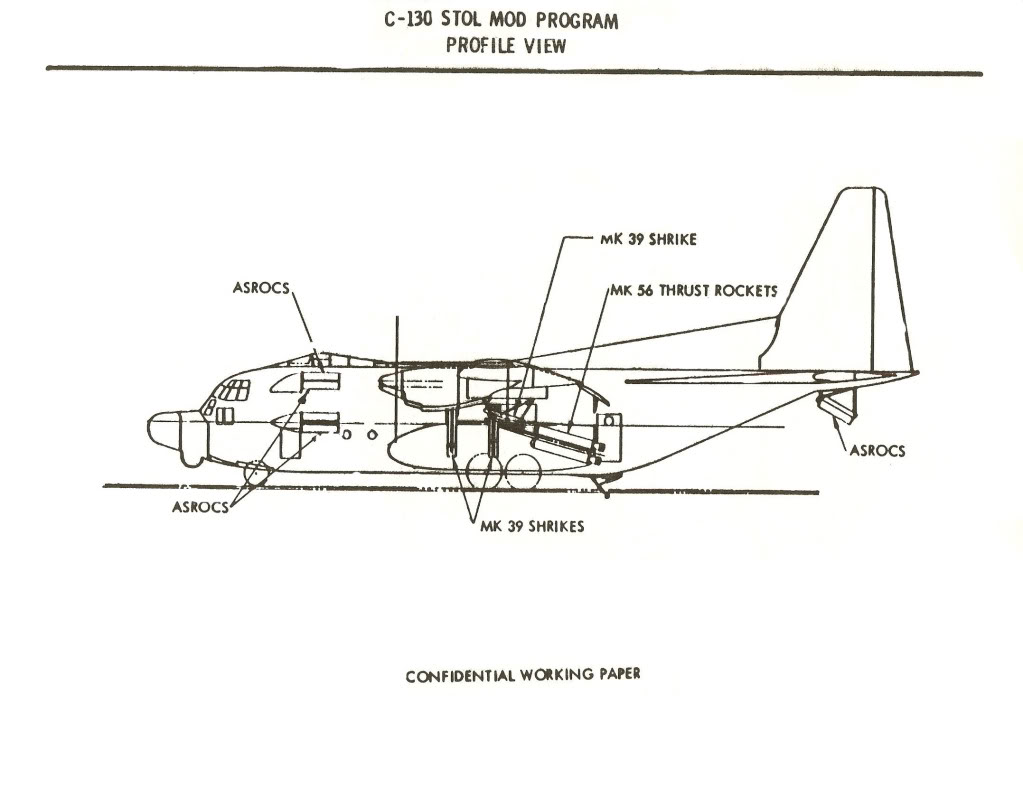
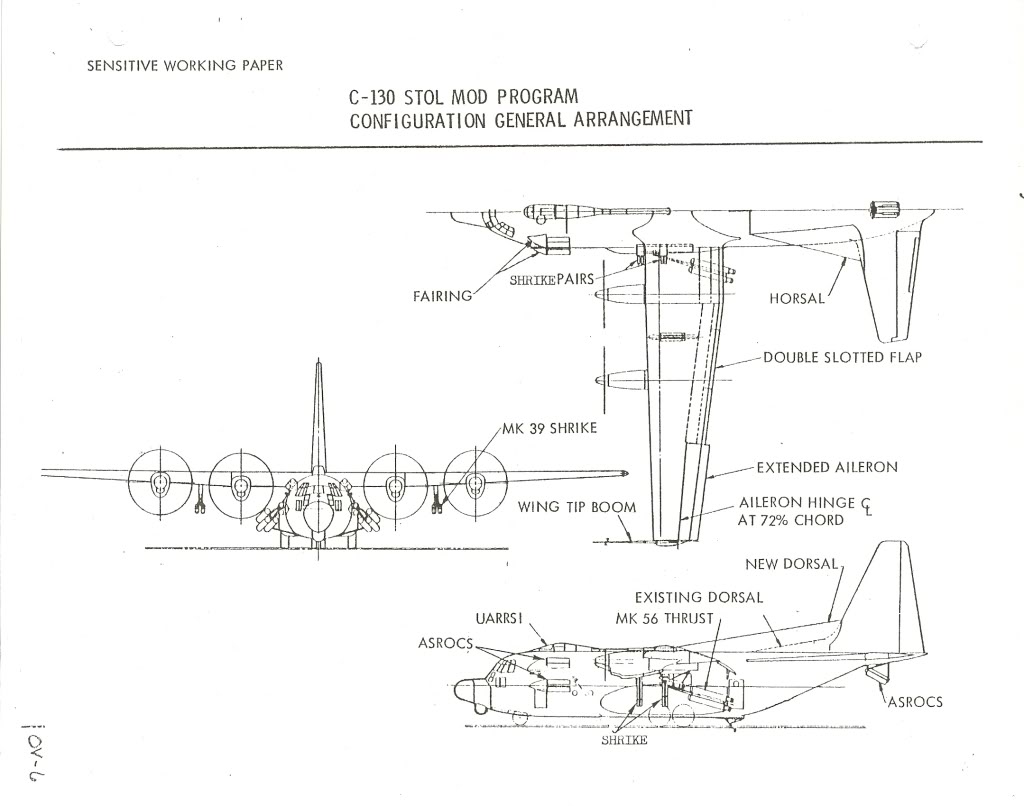

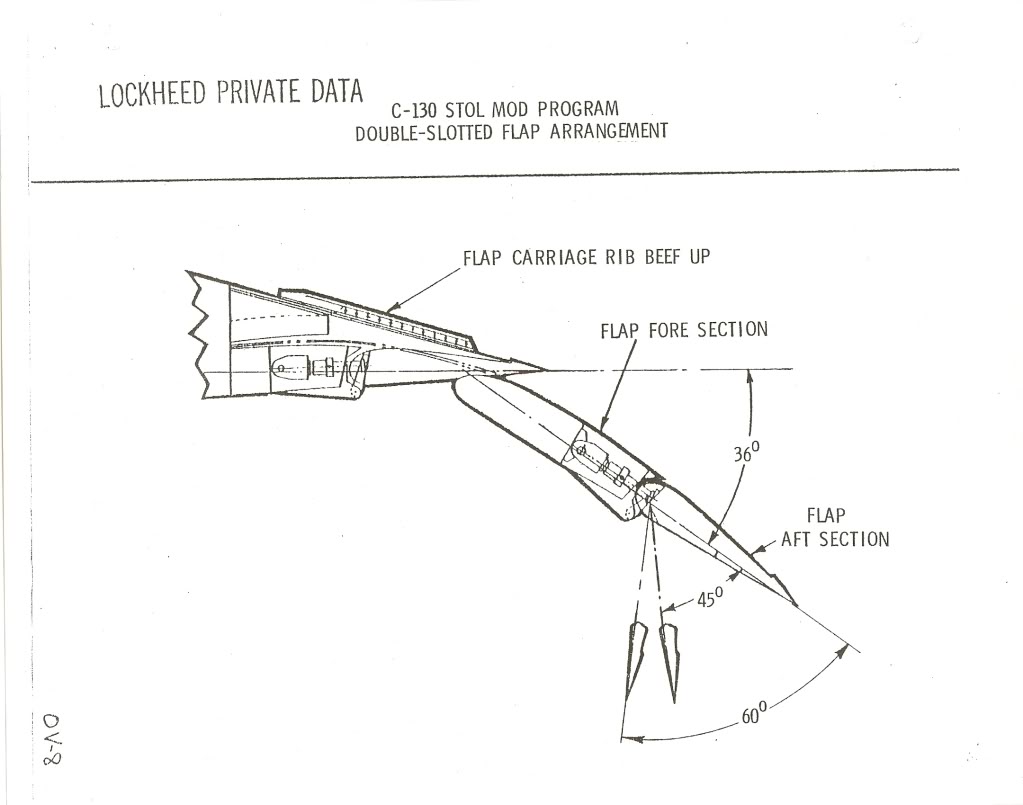
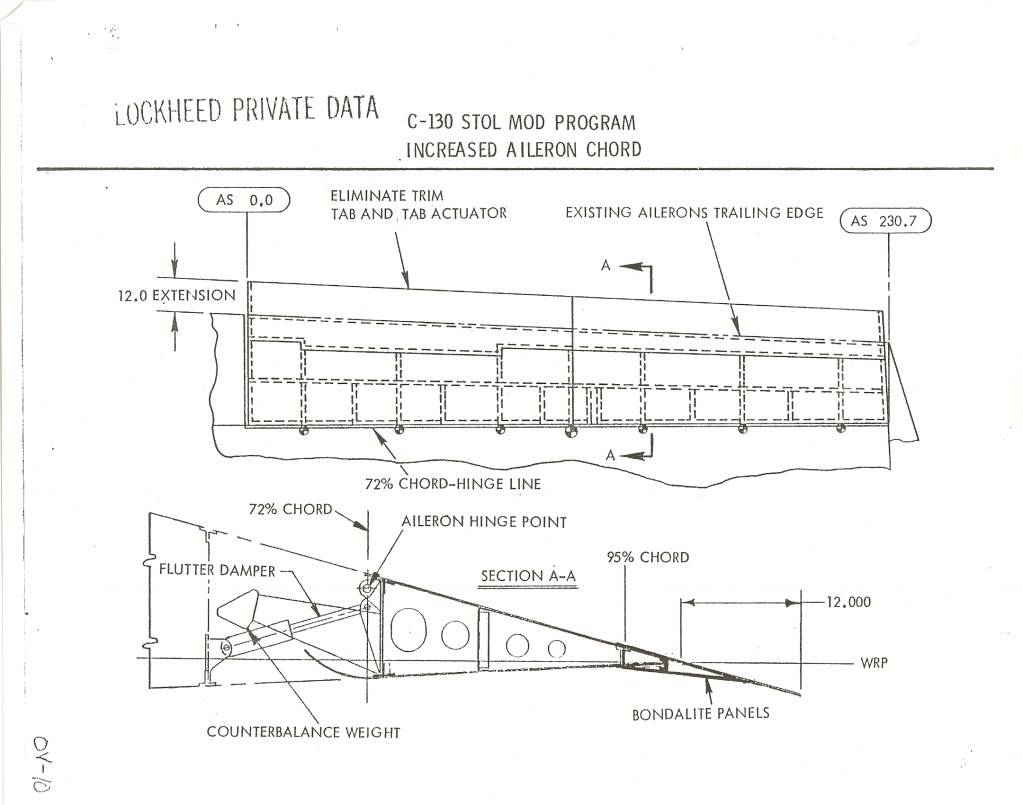
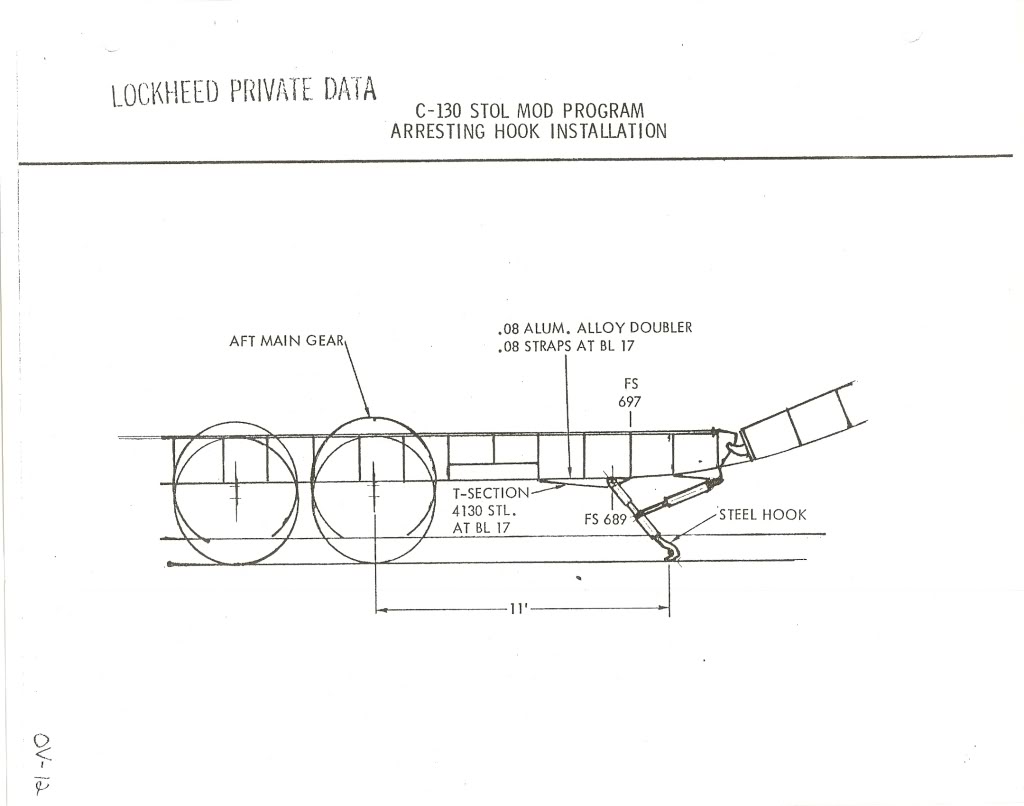
New pics supplied by Military Futurist BlacktailFA!
Notice the TAILHOOK with which to possibly land the Credible Sport Herk on aircraft-carrying ships or short airfields with wires laid across flight decks/runways...
 youtube.com/watch?v=fSFjhWw4DNo
youtube.com/watch?v=fSFjhWw4DNo
They realize they need an EXTREMELY short take-off and landing or "ESTOL" capability. So they add a host of rockets to a C-130 so it can not only land literally on a "dime" inside the soccer stadium nearby the seized U.S. embassy in Tehran, but also lift off from there with the rescuers and hostages together!
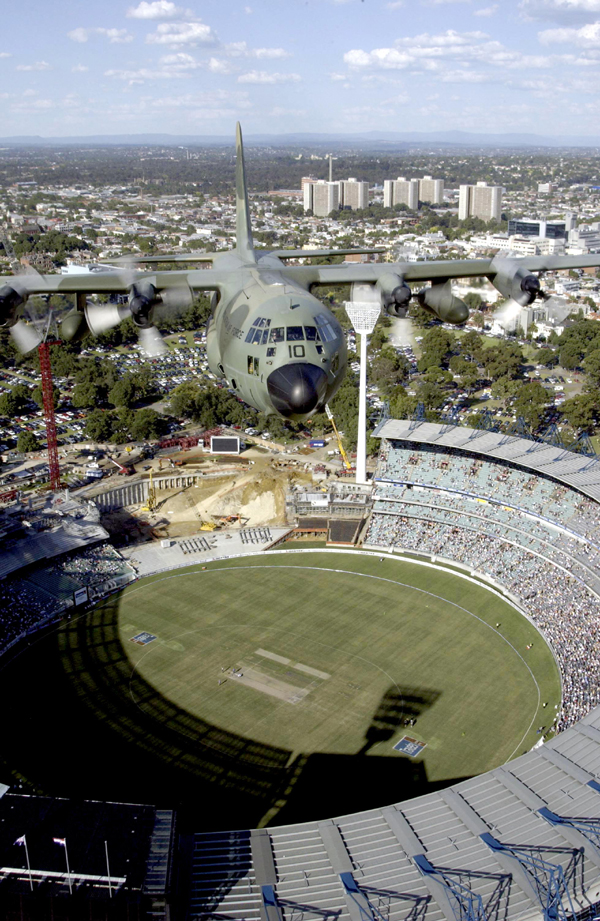
Actual flight tests proved the technique, code-named "Credible Sport" or XSC-130 H, YMC-130H, YSC-130 H, etc. SUPER STOL PROGRAM can work. This is essentially a "supersized" version of Zero Length Launch (ZEL) proven feasible with smaller fighter-bombers.
Tilt-Wings...ESTOL Lift Devices...
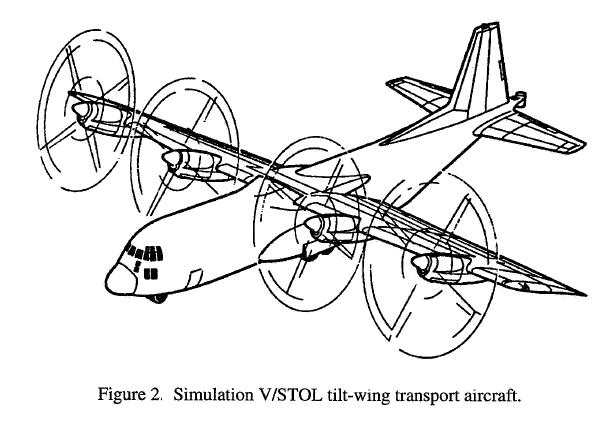
Unlike tilting rotors, tilting WINGS are a PROVEN effective way to get vertical take-off and landing capabilities--but NOT humming bird constant hovering that the rotorheads demand to play aerial crane...the whirlyheads should be over-ruled and tilt-wing aircraft that can do VTOL obtained by modifying C-130s...
Another option yet to be pursued is detachable vertical lift engine pods...
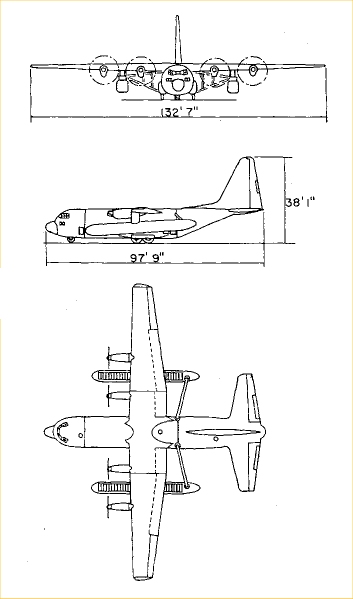
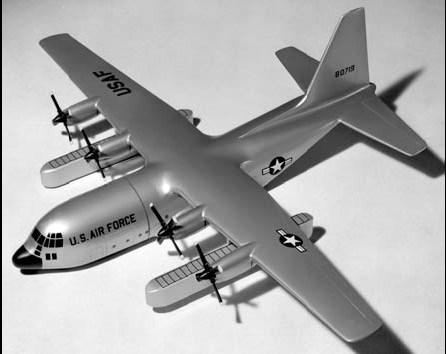
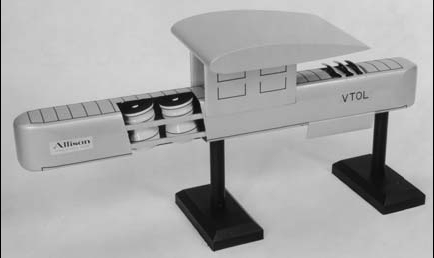
secretprojects.co.uk/forum/index.php/topic,2701.0.html
"Engine manufacturers are understandably eager to leverage their investment in new engine models by finding as many airframe applications as possible, and this was no different for the XJ99. The launch application for the XJ99 was the US/FRG fighter. Although this aircraft development program was subsequently canceled, the XJ99 development continued,. The XJ99 had become an engine without an aircraft to use it. One idea put forward was to turn the C-130 into a V/STOL transport. Figure [...] shows a model of the V/STOL C-130 and the details of the lift engine pod."
AIAA 2007-5340
Rolls-Royce and Allison Lift Engines
Daniel T. Jensen1 and John M. Leonard2
Rolls-Royce Heritage Trust Allison Branch, Indianapolis, Indiana 46206
Coanda Effect: Like the YC-14 or AN-74 Coaler...
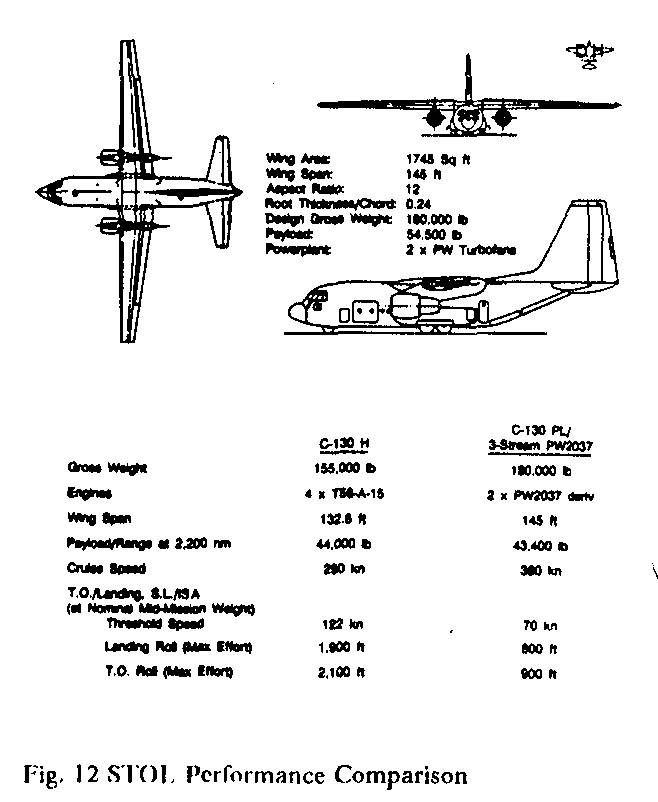

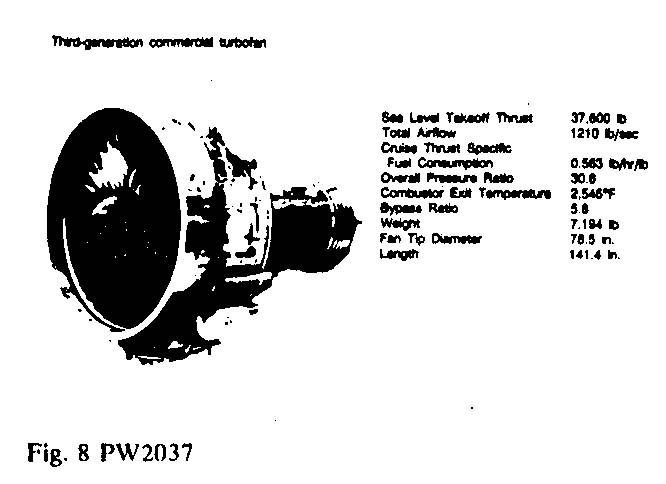
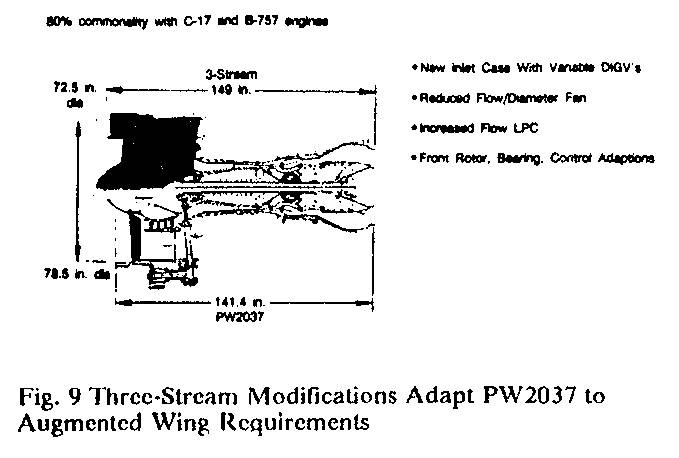
If you blow air over the top of the wing you can greatly increase lift...the Russian AN-74s do this routinely...we played with the idea and fail to exploit it...
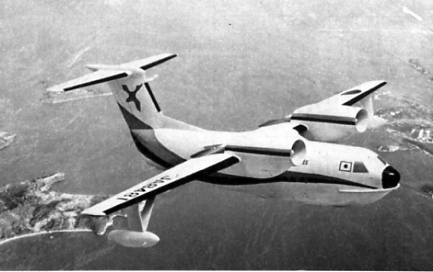
Here's what a Herk would look like with Coanda effect engines and how the Japanese firm Shin Meiwa considered it for a jet seaplane transport...

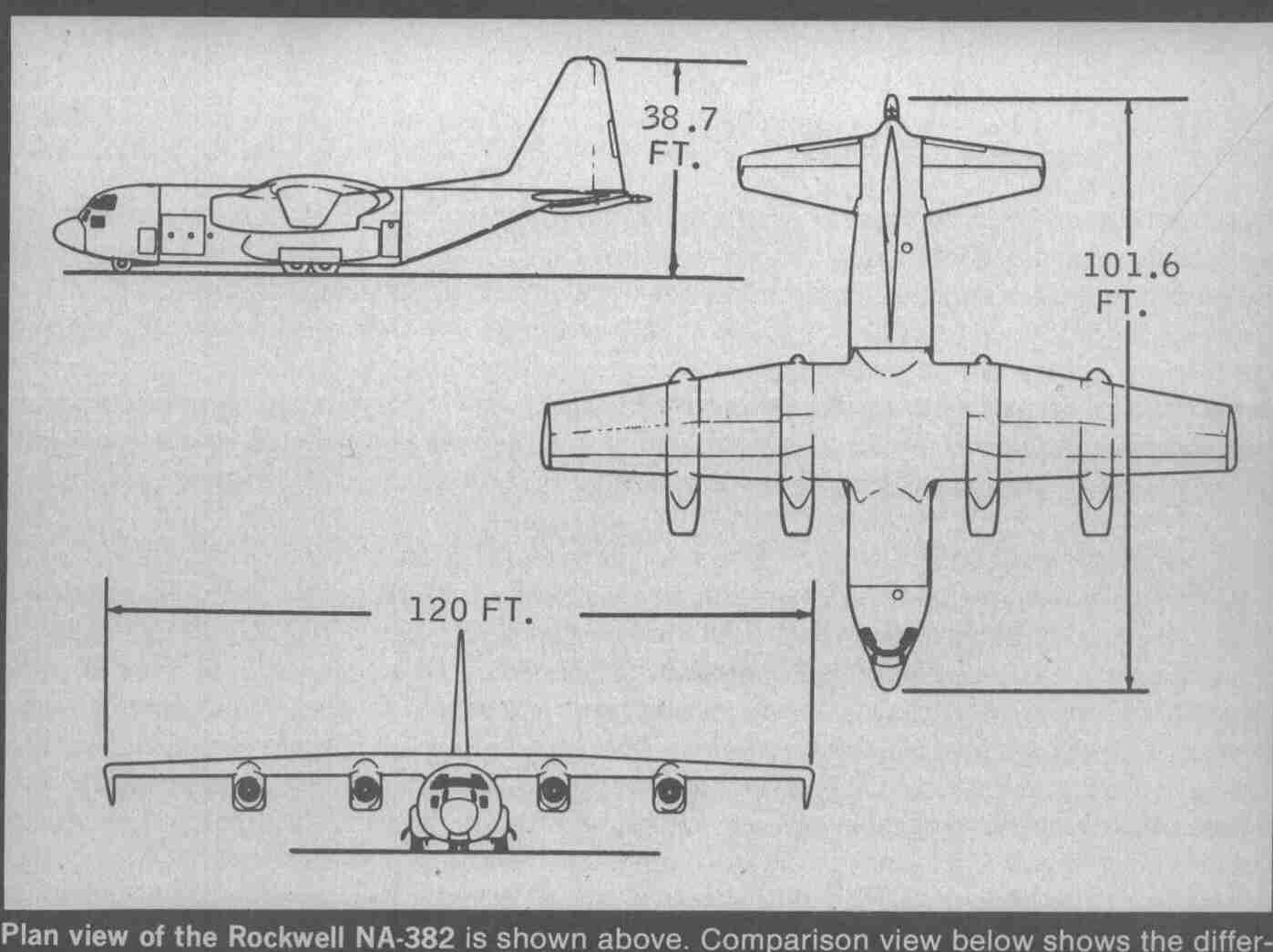
(Click on picture to enlarge)
The dumbass USMC was even offered a VTOL C-130 that would have put them into the SPECOPS game--but they opted instead to subsidize their moronic Iwo Jim re-enactment amphibious ship racket with gadget-helo V-22s.
However, the election of no-non-sense, take-no-guff Ronald Reagen and the imminent threat of war yields a return of our hostages and this type of ESTOL technique is not put into operation. There are other ESTOL techniques which we will discuss later, ranging from landing gear modifications to new design Burnelli-type aircraft. If we need VTOL to go directly to the objective, we can fly-in small helicopters like A/MH-6 Little Birds and OH-58D Kiowa Warriors by C-27J, C-130 and C-17 STOL fixed-wing aircraft....or even inside ISO air/sea/land shipping containers....by airdrop or airland....
GETTING THERE...
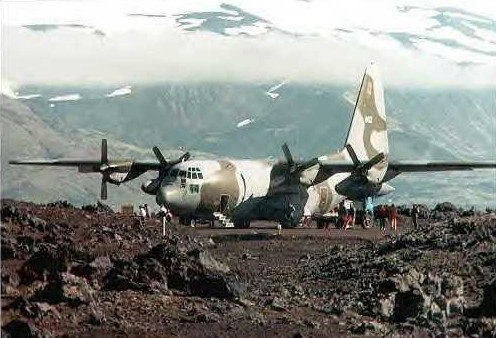


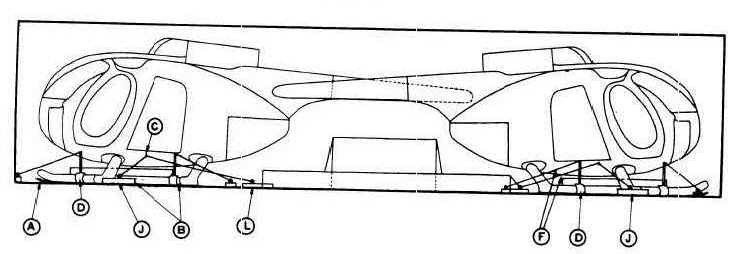
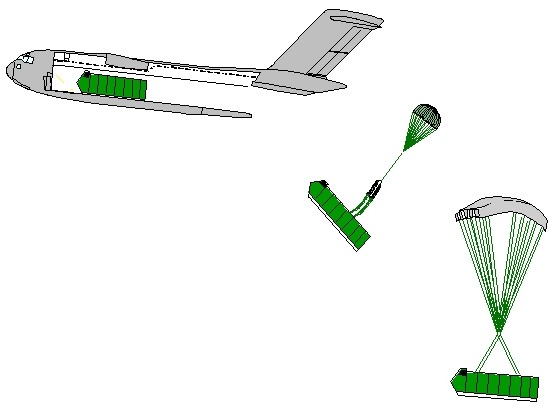

 youtube.com/watch?v=5qdHqBKbaAI
youtube.com/watch?v=5qdHqBKbaAI
DOING THE JOB ONCE YOU'RE THERE....
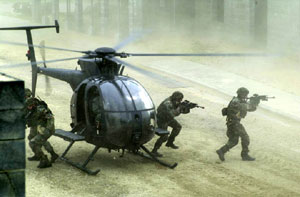
 youtube.com/watch?v=NG5sqFuqZNk
youtube.com/watch?v=NG5sqFuqZNk
HELICOPTER & TILT-ROTOR MYTHS AND TRUTHS

When most people think of what helicopters (powered rotary-wing aircraft) can do, they imagine a single helicopter, basically able to land in any opening large enough to accept it and its rotor blades. At Son Tay POW camp in North Vietnam, the creative mission planners took advantage of this and crash-landed a HH-3 "Jolly Green Giant" helicopter into the center of the compound to take down the prison guards suddenly; basically using it as a defacto rotary-wing "glider". However it was a one-way use, the helicopter was too large and damaged to take off after the raid and was destroyed by demolitions charges as the Special Forces raiders exfiltrated through wall breech holes and into USAF HH-53Ds waiting a short distance outside the camp.
In other situations, if the enemy resistance is small, a single helicopter like a MH-6 "Little Bird" can land with 4-6 "shooters" onto a rooftop or small area and rescue a person like Kurt Muse in Panama. The single-ship NIGHT helicopter rescue gives maximum space for the pilot to land his helicopter and should have been used to rescue downed USAF pilot CPT Scott O'Grady in 1995 Bosnia, instead of packing two CH-53E Super Stallions full of low-grade ad hoc rescue skill mortar marines and trying to land both in an unsurveyed zone, where a farm fence trapped an entire chopper load of men inside. Later, when two French pilots were downed, AFSOC Pave Low IVs went into Bosnia to search with Pararescuemen or "PJs" aboard (not packed full of potential victims) and armed-to-the-teeth but, the pilots were already captured before they could get to them. On two other occasions years later during the civilian infrastructure bombing of Kosovo in 1999, AFSOC single-ship rescues saved a F-117 Nighthawk pilot and a F-16C pilot from at best imprisonment and at worse summary execution by irate Serbs. However, you cannot rescue hostages and fight wars with a large enemy opposing you with just a single helicopter's worth of men. These are bigger missions requiring more troops, weaponry and combat vehicles.
A big disappointment studying helicopter PATHFINDING is that to get multiple airlanded helicopters into a zone requires a lot of space that needs to be surveyed beforehand, and time to offload and fly away. This slow, piecemeal build-up of combat power by noisy helicopters flying into and out of the Landing Zone (LZ) gives the enemy time to react to our insertion, in a hostage rescue, it would mean the loss of surprise, in a major war, the enemy could "melt away" and be long gone before we assemble ourselves into fighting units and begin to foot-slog (Vietnam).
We have tried to overcome this by the direct delivery of assault troops onto the target by helicopters by airlanding or if there is nowhere to land hovering and having troops slide down ropes. Both techniques have resulted in disaster: the 1975 usmc-led debacle on Koh Tang island and the 1993 raid to capture Somali warlord leaders in Mogadishu; in both cases helicopters were literally shot out of the sky trying to deliver troops directly to the objective. The survivors later hanging on and fighting for their lives until THEY could be rescued. Even when direct helicopter air assaults work, during the Kurt Muse rescue, their helicopters got shot down. Part of a real solution would be to actually have better foot mobility than our enemies by a holistic field living/load bearing system and to use human powered vehicles (HPVs) like folding All/Extreme Terrain Bikes and All-Terrain, All-Purpose Carts so we can insert away from enemy detection range and close by SPEED MARCH as the Israeli paratroops are fond of doing, and have been successful many times. At the very least helicopters used in direct assaults need max armor and smoke grenades/generators to protect them from aimed enemy fire while inserting/extracting troops. Another technique would be to use light tracked armored fighting vehicles like the German Wiesel, Swedish BV-206S or American M113A3 Gavin to insert into an offset LZ or by parachute DZ and then close on the objective with superior armored protection and firepower. Stealth provided by band-tracks, infared camouflage and hybrid-electic drives. This capability to "Air-Mech-Strike is described in detail by former SOF General David Grange's AMS-Study Group's book, "Air-Mech-Strike: Asymmetric Maneuver Warfare for the 21st Century".
The advent of the marine-contrived V-22 Osprey tilt-rotor helicopter with the ability to fly fixed wing flight does not solve these basic short comings in the zone, and actually increases our problems because it cannot carry the common HMMWV 4X4 vehicle inside. Marine corps pathetic attempts to adopt an unarmed "sports truck" or "dune buggy" that can be turned into a flaming wreck by a mere burst of enemy small arms fire as depicted below do not fix this handicap.
Yet another USMC FUBAR in the making: THY NAME IS HOWLER, EHH GROWLER
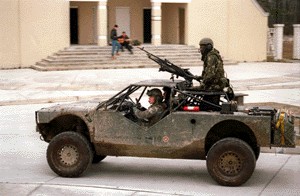
 youtube.com/watch?v=9PBA6j87NkI
youtube.com/watch?v=9PBA6j87NkI
This assumes the V-22 can even be made to work safely which is questionable. Its a deathtrap that will eventually be cancelled as a troop transport. The question is how many dead and burned-up American bodies will have to be lost before DoD bureaucracy acts?
Frankly, the V-22 is finished.
If AFSOC pursues the CV-22, ITS FINISHED.
Read why and you will see test program or no test program the V-22 as a troop transport is finished.
Col Dunn USAF (R) rebukes lying USMC V-22 Program manager
The Dunn Report's Main Revelations:
V-22s Cannot:
*Fly above 10,000 feet, so much for turboprop flight range/speed
* Are not pressurized--cannot fly in NBC environment
* Cannot hover in mountains with more than 5 troops
* Cannot fly into storms (no de-icing) without icing and crashing
* Cannot crash land with any chance of survival in airplane mode unless engines/rotors rotated up 60 degrees
* Cannot autorotate in event of engine failures
* Doesn't have crash worthy fuel cells
* Cannot make abrupt maneuvers when landing in helicopter mode or could flip over on its back from Vortex Ring State asymmetric lift loss
* Cannot be armed with multiple defense weapons to suppress enemy in LZ
* Cannot hover insert troops by rappel/fast rope: too much downwash, limited to predictable open-area LZs
* Huge radar target bigger than helicopters akin to two 747s
* Cannot carry ANY armored vehicles inside, my God its only 5.45 feet high! Its too small for us humans!!!!!!!
Its toast.
Its only going to get worse if we try to field this deathtrap to our men.
Its a bad turboprop and a very bad helicopter, the very worst of both worlds.
If I were Bell I'd stop before its too late, save the company and pitch a slimmer V-22 as a two-seat attack/observation aircraft with EJECTION SEATS and call it a decade. Then you are not asking it to act like a hovering and landing helicopter in an enemy-held combat zone with men packed inside like sardines surrounded by fuel, just to take-off and land from forward operating bases to support ground units with observation/fires manned by just 2 humans not two dozen.
Even if V-22s worked, it would take more time and more men to get effective combat power using the CV-22 than to use a slightly slower C/MH-47D/E/F Chinook, which can deliver 3 times the men in a lift AND carry armored HMMWVs or far better yet TANKS---3-ton Wiesel or a 7-ton BV-206S (armored SUSV) Ridgway or M113 "Mini-Gavin" light tracked Armored Fighting Vehicles with battle dominating auto-cannon, rockets, recoilless rifles and missile to the fight.
Full-Size M113 Gavins cab be carried by Fixed-Wing STOL Aircraft Like C-27Js, C-130s and Minis inside CH-53E Super Stallion and CH-47 Chinook helicopters
 youtube.com/watch?v=HCB6QirkX5E
youtube.com/watch?v=HCB6QirkX5E
 youtube.com/watch?v=ddnntGA8vEs
youtube.com/watch?v=ddnntGA8vEs
What matters is the END RESULT ON THE GROUND, not the means. As Sun Tzu said:
"what matters in war is VICTORY, not prolonged operations, however brilliantly executed".
Even with a potent mobile fighting vehicle force packed into Chinooks, or MH-47Es such an option would still have the time/distance and fuel factors to contend with to get to the target area and return to safety.

While we can and must address the weak areas of helicopter Air Assault techniques, the fact remains YOU CAN GET MORE COMBAT POWER INTO A GIVEN AREA FASTER BY PARACHUTING---AND AT LOWER RISK TO THE HIGH PERFORMANCE AIRCRAFT THAT DELIVER THEM THAN BY SLOWER, AIRLANDING HELICOPTERS.


WHERE CAN WE LAND?

As Colonel Kyle explains in his book, the ground at Desert One had to be first surveyed for firmness if it would accept rubber-tired landing gear C-130s. To do this a small Twin Otter turboprop plane was flown in and infared runway marking lights covertly emplaced. This small plane would have far less ground pressure than a 150, 000 pound C-130. The U.S. Army used to operate Twin Otters as UV-18s.
Thus, the main problem is getting the AIRBORNE force OUT once it is there and its tasks accomplished. General James. M. Gavin wrote in his book, Airborne Warfare that we need grassy field STOL transport aircraft.
In WWII, small fighter aircraft and transports could land on grassy fields.
Sometimes....you can use rockets to blast your way out of the snow (JATO)

C-47 using JATO to blast off!
However, if you are really stuck in the mud...you are STUCK!

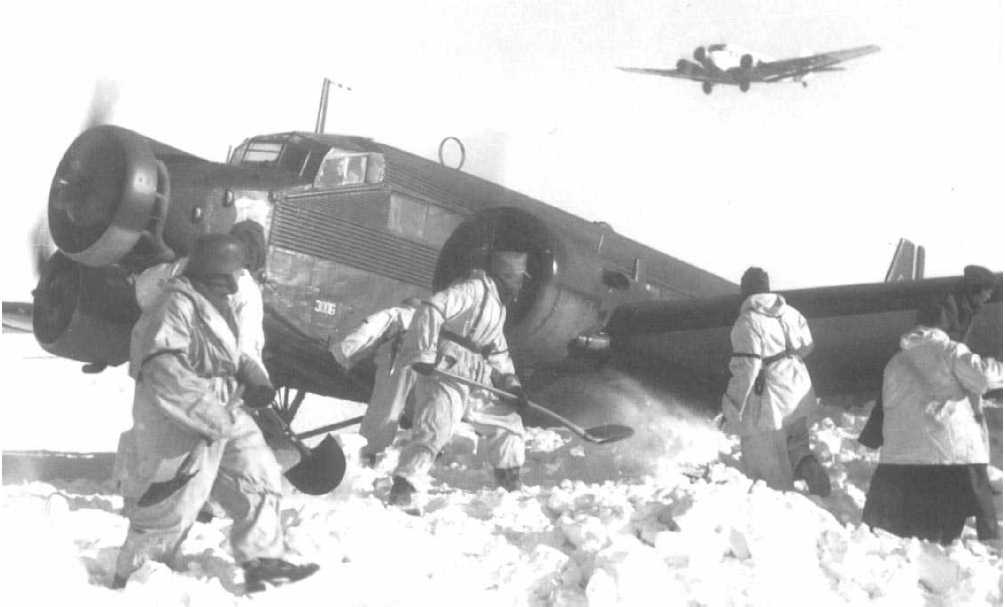
Another reason why we need tracked and air cushion landing gear...is that the C-130 is simply a very heavy, 4-engined aircraft. While it may be able to land on a sufficiently long, flat and wide area ASSAULT ZONE (3,000 feet long, 90 feet wide) the ground UNDERNEATH it might not be able to support its 150K weight!
 youtube.com/watch?v=_730n6N0yHw
youtube.com/watch?v=_730n6N0yHw
This is what Combat Control Teams (CCTs) do when surveying a possible AZ---test the ground surface to see if it will support the Mighty Herk's weight concentrated into narrow rubber tires. The following caption was sent in with these pictures, describing how corrupt VIPs in love with the deathtrap V-22 tried to land C-130s onto lightly asphalted Bell Textron runways and ramp space.
"If you are top brass, you don't have to listen to facts...
You think people would listen to reason....
Four very heavy 150K C-130 transports, full of dignitaries and other stuff, were flown to Textron's airfield outside Dallas, for the roll out of the CV-22 aircraft. The people arranging the ceremonies were warned that the runway could not handle an aircraft as heavy as the C-130. These warnings were ignored.
See what happened...."

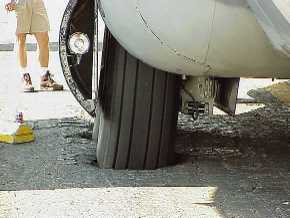
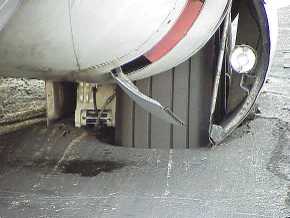


How to Build a Dirt Runway in 14 Days to Pamper Wheel Landing Gear C-130s without Really Trying...
 youtube.com/watch?v=blyZUbKvfeI
youtube.com/watch?v=blyZUbKvfeI
RETURN OF TRACKED LANDING GEAR!
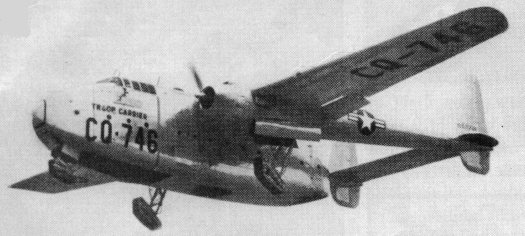
"The ideal troop-carrier combat transport would appear to be a large transport of the twin-boom type for which personnel, artillery, and vehicles could be dropped. It should have a range of two thousand miles and should be equipped with self-sealing tanks, pilot armor, and a retractable track-laying undercarriage. This last feature would permit its landing and take-off in pastures and cultivated areas. It would thus be able to enter the airhead early in an operation, landing and taking off from areas normally suitable only for gliders".
A Retired USAF C-130 pilot writes about the C-82 with tractor gear experiment shown above:
"Mike...the C-82 with tractor gear. Only one was produced, but the idea was to reduce the pressure exerted from 60 psi to 20 psi and give it the capability to land anywhere."
THE STORCH
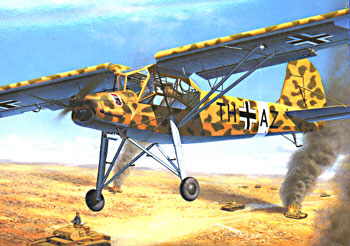
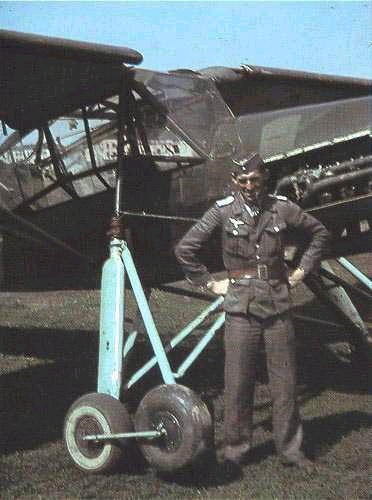
During WWII both the Germans and the British experimented with double-wheel and tracked landing gear to further improve their already capable Fieseler Fi-156 "Storch" and Lysander STOL aircraft. Ping's Storch page notes on the "E-O" model:
www.piteraq.dk/flight/storch.html
E-0 1941/42 As.10P Like C-1, but with special tracked landing gear. 10 made
F-0 or P 1942 As.10P Counter insurgency ("Polizei") C-3 with machine guns in side windows and bomb-racks/smoke laying
Since the Storch could take-off within twice its own length (165 feet) and land withing 50 feet, tracked landing gear was not vitally necessary. The Germans and the Army had small airplanes that could meet General Gavin's cow pasture STOL goal, but not large transports.
WWII Tech Pubs reports on the Lysander:
This Lysander carried out experiments with unusual undercarriage installations. One trial featured castoring wheels for crosswind landings. Another test used tracked landing gear for rough landing grounds.
Post-WWII Developments
EB-50 Bomber with tracked landing gear
The first production B-50B (S/N 47-118) was retained for special test projects and given the (Exempt) designation: EB-50B. One EB-50B test project involved the modification of the landing gear. The wheels and tires were replaced by a caterpillar-type track system. Tracked landing gear systems were installed on a wide variety of aircraft during the 1940s and early 1950s including the Curtiss P-40 & Convair XB-36. These systems were designed to reduce the overall pressure exerted on the ground by spreading the aircraft weight over a larger ground contact 'foot print.' The reduced ground pressure would, in theory, allow the aircraft to operate from more airfields and even unimproved strips. The problem was particularly evident in the XB-36. With its initial single-wheel main landing gear, the XB-36 could land at only 3 airfields in the entire United States!
P-40 with tracked landing gear!
B-36 with tracked landing gear!
37597 AC - TEST TAKEOFF OF BOMBER EQUIPPED WITH CATERPILLER-TYPE LANDING GEAR.
The first takeoff and landing of the Air Force's experimental XB-36 bomber equipped with a caterpillar-type track landing gear was made on March 29, 1950, at the Fort Worth Division of Consolidated Vultee (Convair) Aircraft Corporation. With the track-type gear, the weight of the XB-36 rests on Bogie Wheels rolling on two endless belts on each main landing gear strut. Two smaller endless belts are installed on the nose gear strut. The gear, which is retractable, is the latest step in the Air Force's program of track-type gear development. The track on the main landing gear is designed for a maximum average of 57 pounds pressure per square inch on the landing strip, as compared to a pressure of 156 pounds per square inch exerted by the conventional wheel-type gear on a B-36 at the same gross weight. The Bogie Wheels around which the track travels are made of a new magnesium alloy containing zirconium, giving the wheels an especially high impact resistance. Friction is reduced to a minimum by the use of 185 tapered roller bearings weighing approximately 500 pounds.
Released Washington, D.C. April 12, 1950.
The caterpillar-type landing gear was fitted primarily to gather test data when fitted to a very heavy aircraft. The original main landing gear design with a single large wheel and tire was redesigned in the late 1940s and fitted to all production B-36s and retrofitted to the XB-36 and YB-36. The new landing gear arrangement had a two wheel nose gear and 4 wheel mains.
BOTTOM LINE: tracks can reduce ground pressure over wheels by 2/3ds!
According to: 1 June 1997 AFPAM 10-1403 AIR MOBILITY PLANNING FACTORS
ACN2,3 (Rigid Pavement Subgrades)
Runway L (ft) W (ft) High.....Med.....Low.....Ult Low.....High
C-130 3000/30........8-34.....9-37.....11-41.....12-43.....6-30
C-141 6000/50........16-48.....18-58.....21-68.....25-75.....17-49
C-17 3000/50........22-52.....22-52.....22-52.....24-70.....18-52
C-130J Combat Talon III with tracked landing gear?
C-130J CTIII 1000/30........2.8......3......3.5.....4.....2
Wouldn't this be such a significant reduction that C-130Js could practically land like Piper Cubs almost anywhere there is enough room irrespective of surface firmness?
Orders of Magnitude: What if You Have No Place to Land? Is your Plane Too Big?

The entire 1980 Desert One debacle was driven by the basic problem of where do you land in hostile territory?
The solution chosen by Colonel Beckwith to use VTOL helicopters to get Delta Force and the rescued hostages out from the soccer stadium nearby the seized U.S. embassy in downtown Tehran as we all know was fatal when left in the hands of the unprofessional, incompetent boob marines. However, even if the RH-53D heavy helicopters were instead specially-modified MH-53J Pave Low IIIs flown by uber professional USAF pilots, the facts are that super-sizing the 1970 Son Tay rescue mission profile still depends on machines that are 10x the order of magnitude in complexity compared to forward-thrust driven fixed-wing aircraft just to get vertical thrust take-off and landing capabilities through powered rotary wings. As the minimum number of helicopters needed to extract Delta and the hostage broke down en route to Desert One, the mission was aborted--and due to USMC incompetence a tragic collision and fire took place ruining any chance of coming back and trying again with the same approach.
In the immediate aftermath, Operation HONEY BADGER planners realized that the 4-engined, fixed-wing STOL C-130 Hercules aircraft delivering Delta force and fuel bladders for the inefficient helicopters coming from the aircraft carrier USS Nimitz in the Arabian sea to refuel, saved the operation from becoming a complete debacle by adding more hostages that needed rescue. Planners realized that C-130s could be modified with rockets to fly in and out of the soccer stadium to have ESTOL capabilities. Trying to make a very large, 150, 000 pound, 4-engined C-130 land in and out of a stadium required a lot of rockets and though it worked was only at great danger. Was there a better way to do this with say a smaller fixed-wing aircraft?
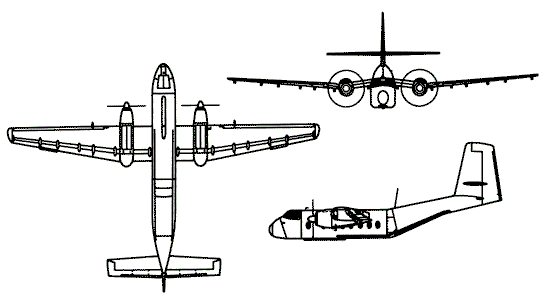
The answer was and is yes--by using a smaller STOL transport plane at least one order of magnitude lighter and smaller--something like the 2-engined CV-2 Caribou that up until 1973 was still in the USAF inventory after being stolen from the U.S. Army in 1968 by conning Congress that they would operate them for resupply of Army small forward operating bases (FOBs) in Vietnam. A retired U.S. Army Major recently revealed to me that in 1965, he participated in a test of a Caribou flying into and out of Florida Field (now called Ben Hill Stadium) at the University of Florida--the aircraft just needed a football field. Below are pics of what the stadium looked like back then.

So the ramifications are tragic. Because of USAF inter-service rivalry in 1980 when we needed twin-engined STOL transport planes to fly into and out of a small stadium that a small rescue force could temporarily defend with things like HK21 light machine guns; we didn't have them because a bureaucracy refused to operate them. Had the Army kept operating Caribous by 1980 they could have been vastly improved by turboprops--a "CV-2T" variant or bought C-8 Buffalos from the factory--or even got 4 engines in the space of two with the Mamba contraprops used in the British Fairey Gannet aircraft carrier-based ASW plane. My source indicates that an Army U-2 single-engined STOL grasshopper plane during the tests took off and landed from a baseball infield; already airborne by second base. The 11th Airborne did a jump in WW2 using grasshoppers--but it was difficult to deliver a lot of paratroops beyond a small recon/raid team this way. For a large number of people to be transported, just double the number of half-sized aircraft needed to land in the smaller space. If 2 x C-130s were the minimum to transport 150 people, use 4 x CV-2 Caribous instead. As it was, 5 x RH-53Ds were the minimum number thought necessary to transport 150 people from the soccer stadium--the same number of Caribous could do the same job with less propensity of Murphy causing malfunctions. A turboprop Caribou aka Buffalo has proved an air cushion landing system (ACLS) so even if the smooth and flat soccer stadium wasn't available for wheeled landing gear, nearly any open area could have accommodated extraction had the Army SF community in possession of Caribous had developed the capability.

In fact, the Caribous could have flown off the USS Nimitz Doolittle raid-style [Folding wings would enable below-deck storage for OPSEC from enemy spy satellites] or from a nearby land base and then parachute-dropped Delta force directly into the outskirts of Tehran where Major Meadows had panel trucks with hidden compartments waiting for them, then flown on to Desert Two and sat under camouflage nets awaiting the call to go to the soccer field and fly everyone out. If they needed to refuel at Desert Two, two Caribous could have carried fuel in bladders--or better yet buddy in-flight refueled the main body of Caribous, eliminating the dust hazards of ground refuel FAARP night operations. There wouldn't have been a Desert One--because there would have been no fuel-hungry, short-range helicopters needing an intermediate stopping point!
Doolittle Raid Deck Difficulty Due to Aircraft Carrier Island Blocking Wings of B-25 Twin-Engined Bombers--Same Problem Exists Today
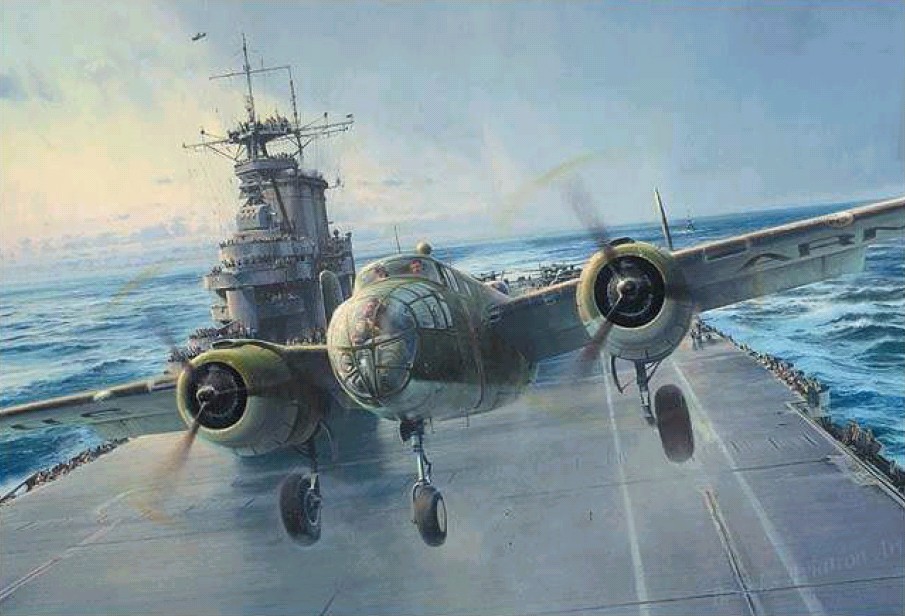
 youtube.com/watch?v=fgt8PMoRGG8
youtube.com/watch?v=fgt8PMoRGG8
Regardless of the fact that the USN are pompous idiots who want to fixate on aircraft carriers re: the flush-deck USS United States etc., if we are going to have them, their island superstructures need to FOLD DOWN or somehow clear their flight decks so their full width can be used by larger planes like even 4-engined C-130s.
This is Not a New Problem...
If you are dropping Paratroopers--or high explosive or incendiary bombs--having to airland in hostile territory is not a problem. The Paratroopers are generally there to stay--and you don't want your bombs back. However, airlanding is often a necessity in special operations like rescues and VIP snatches--or if you must recover your recon element spying on the enemy.
It's not like the USAF hasn't faced this problem before. In WW2, as the USAAF still a part of the U.S. Army, B-29 Superfortress bombers even with their long range, needed bases with which to bomb drop Japan. Bases in China along the coast were suggested by General Chennault but his fighter-bomber "Flying Tigers" and Chinese Nationalist army backers were unable to secure them from the million-man Japanese army which had occupied the continent since 1937. To avoid the Japanese army, USAAF B-29s first flew from the distant Chengtu base in central China making it very difficult to fly-in supplies to sustain a bombing campaign against Japan. In all actuality, WW2 began in 1937 with Japan invading China. Carl Berger's book B29: the Superfortress reveals some extremely interesting--and disturbing facts most are unaware of. The B-29 was NOT created in 1942 when it was somehow realized that B-17s lacked the range to bomb Japan as typical portrayals describe it. The very long-range (VLR) B-29 bomber was created in 1939 when it was realized Britain might fall to the Nazi Germans--and we might have to bomb them from North America. President Franklin Delano Roosevelt (FDR) said in 1939--this is 2 years before Japan was baited into attacking Pearl Harbor--that he wanted to bomb the Japanese to punish them for the atrocities they were committing against the Chinese. Read that again. Thus, the USAAF knew--before America even entered the war--that the 2, 000 mile range B-17s lacked the endurance to cross the Atlantic to bomb Germany and ordered the 7, 000 mile range B-29. The B-29 was born in 1939 from the pre-meditated actions of FDR and others that insured America would enter the war--and it took 4 years to reach combat flying from China--not from an innocent reaction to the lack of B-17 range discovered after war was forced upon us.
Berger's book also reveals that German Nazi dictator Hitler contemplated seizing the Azores islands in order to have bases to attack America with long-range bombers--but decided against it. FDR got a promise from Soviet dictator Stalin to provide B-29 bases in Kamchatka--but he dragged-his-feet because he wanted to remain neutral towards Japan--at least until Germany was defeated. Why America simply didn't take some or all of the Kurile islands from our own nearby Alaskan Aleutian islands shows we were in no hurry to end WW2; least of all defeating Japan. $ Billions of dollars were made building a staggering 4, 114 x B-29s of which an even more disturbing 414 heavy bombers were lost; mostly by mechanical failures. The original Kilner-Lindbergh report called on mass production of medium and heavy long-range bombers. Why were the B-29s so mechanically complex that 10% were lost every time they went up into the air? Why not just buy and use less complex 2 x twin-engined medium bombers instead of one 4-engined heavy bomber? Was it necessary to have a 4-engined bomber to carry enough fuel to get 7, 000 mile range?
No, of course not. We know a single-engined plane can be made to carry an enormous amount of fuel for long range, but its payload would not be much other than the crew. The thing that drives plane size is the payload it must carry--which is dead weight, whereas fuel represents potential energy for thrust from engines. Carrying over 16, 000 pounds of compact and dense bombs, the B-29 fuselage was tubular and to carry the fuel for 5, 000+ mile range needed thrust from supercharged radial 18-cylinder engines that didn't get enough air to cool them at low speeds during take-offs and landings and were prone to catch fire. To fly at over 300 mph to evade enemy fighters, the B-29's wings were thin to reduce drag resulting in a lack of lift at the critical time during take-off when the engines needed air flow. Loss of an engine during B-29 take-off was often fatal. To get enough lift to take-off the B-29 needed over 8, 500 foot runways and these had to be built 19 inches thick to withstand the bomber's weight in China--and defended from the Japanese army. Switching B-29s to island air bases secure from Japanese army attack was the consequence of not building the quality Chinese army that General Stilwell insisted we needed to at least keep the Japanese army at bay. The failure of emphasizing air power in China at the expense of the Nationalist army resulted in after the war, China falling under Communist control--a problem plaguing us to the present day. A lot of people got rich making bombers in WW2 and has corroded American perceptions of warfare that wars can be won by aircraft firepower bombardment alone.
With 3, 700 x B-29s surviving WW2, there were plenty to fly from secure air bases with concrete runways U.S. Army Special Forces to parachute drop agents behind Communist lines from bomb bays:
combatreform.org/axisandalliedspecialoperationsaviation.htm
...but no one thought of using them to help the Army's 82nd and 101st Airbornes get light tanks to the fight by parachute drop or glider towing:
combatreform.org/lighttanks.htm
Since B-29s were not going to be asked to STOL airland to pick anyone up why not develop a twin-engined plane with thick wings that can land in less than 3,000 feet or ESTOL in less than 300 feet that is at least 1/2 as complex and give it long range by drop tanks and in-flight refueling? General Gavin's KIWI pod-equipped planes with tracked landing gear come to mind.
combatreform.org/airbornewarfare.htm
As much as we love the C-130 it still is a 4-engined plane--like a B-29--that weighs even more--a loaded Superfortress tipped the scales at 105K--the C-130 is 155K--this is a lot of weight pressing down on the ground. In fact, during a demonstration to Secretary of Defense McNamara in the early '60s a C-130 got stuck in a dirt landing trying to replicate what the half-sized Caribou did a few moments before. The size of an Army FOB is driven by the size of the runway in its center--if it must have a 3, 000 foot runway to accommodate a 4-engined USAF C-130, then Soldiers will be forced to defend an outer perimeter 6x runway length just to keep enemies outside of machine gun range. Soldiers defending the base cannot go out and project combat power anywhere else.
 youtube.com/watch?v=T6ZeZdQqrFQ
youtube.com/watch?v=T6ZeZdQqrFQ
Major Neil Chaffee in his CGSC master's thesis: "Expanding Fixed-Wing Aircraft Capability in U.S. Army Aviation Operations" makes a great case for the Army to own and operate twin-engined fixed-wing transports to fill the capabilities gap in-between helicopters and large 4-engined USAF fixed-wing aircraft.
combatreform.org/ExpandingFixedWingAircraftCapabilityinUSArmyAviation.pdf
The large battlespace in Iraq and Afghanistan has exposed an existing time and distance intra-theater airlift gap within the Department of Defense that cannot be met with Army tactical helicopters like the CH-47 Chinook and UH-60 Blackhawk or larger Air Force cargo airplanes like the C-130 Hercules and C-17 Globemaster III. This study explores the logic behind expanding Army fixed-wing aircraft roles and missions. Acquiring, integrating, and operating a larger number of C-27J Spartan cargo airplanes to assume or supplement existing utility and cargo helicopter missions is a more capable, flexible, efficient and economical solution to meeting Army intra-theater airlift mission requirements. This thesis reviews what has historically prevented the Army from acquiring and employing a larger number of cargo airplanes. The thesis then explains why it is necessary for the Army to increase airlift capacity to better support a more modular and expeditionary ground force while conducting Full Spectrum Operations in the current and future Contemporary Operating Environment. The thesis provides justification as to why the Army should employ a greater percentage of cargo airplanes as opposed to utility or cargo helicopters with respect to capability, flexibility, efficiency, and cost. The thesis concludes with a recommendation to better balance the Army's fixed-wing and rotary-wing fleet that meets the needs of the Interim and Future Force.
The tilt-rotor CV-22 Osprey is Caribou-sized to have a small landing foot print--but is actually twice the order of magnitude of complexity as a helicopter--20x--just to get VTOL--compared to just keeping forward thrust means facing forward as in a fixed-wing aircraft like the STOL C-27J Spartan. VTOL at 20x the complexity delivering small payloads of just men on foot that can only fight the AK47 + RPG enemy at a M16 disadvantage is unsound when a C-27J can parachute vertical airdrop or tow a stealth glider with commandos and a M113 Gavin light tank with 30mm autocannon or ATGM or recoilless rifle HE weaponry overmatch bristling with machine guns behind armor protection that is cross-country mobile--and potentially stealthy with hybrid electric drive and band tracks.
combatreform.org/reconinforce.htm
To recover the light mechanized commando force, the C-27J has Caribou-like STOL capabilities that could be enhanced to ESTOL using rockets and/or ACLS.
ACLS: An Idea whose Time Has Come...
Here is another solution. No, its not about using rockets, or tracks instead of wheels, which is still a GREAT IDEA that should be pursued... but it is about being able to like General Gavin said LAND anywhere where it is relatively flat. We are talking about not needing a runway. Zero (0) PSI ground pressure.
AIR-CUSHION LANDING SYSTEM HERCULES: FOLLOW THE LEAD OF EGGINGTON/EARL'S XC-8A BUFFALO


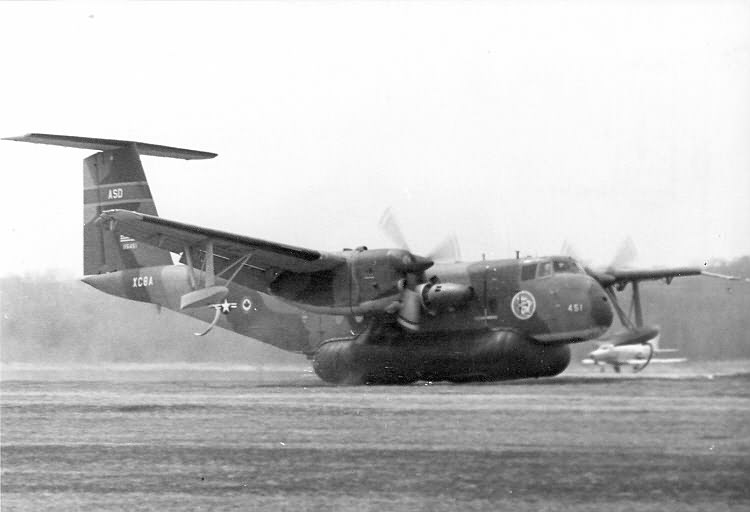
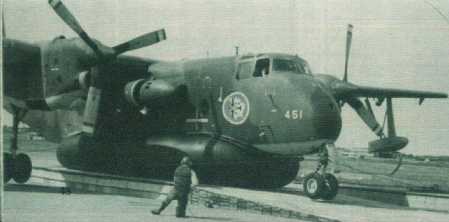
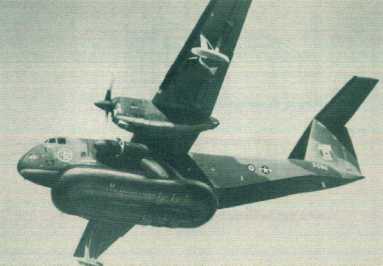

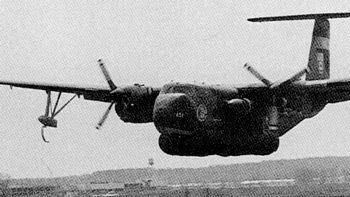
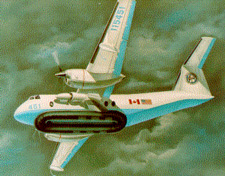
 youtube.com/watch?v=TTeiHP2XVt0
youtube.com/watch?v=TTeiHP2XVt0
A 1:144 scale model of the Bell-modified XC-8A Buffalo with Air Cushion Landing System (ACLS) is now available!
www.squadron.com/ItemDetails.asp?item=IBA14419
ACLS is a vital land-anywhere capability--to include water that is long overdue by someone with some desire to live up to LTG Gavin's "cow pasture" transport landing capabilities to land on water and on land even if the surface is uneven and not paved....THOUSANDS OF MEN AND WOMEN ARE DEAD TODAY BECAUSE THEY WERE NOT ABLE TO BE RESCUED AT SEA OR IN PRIMITIVE LAND LOCATIONS BECAUSE ACLS TECHNOLOGY HAS NOT BEEN FULLY APPLIED BY MILITARY & RESCUE FORCES SO THEY COULD HAVE LAND-ANYWHERE AMPHIBIOUS SEAPLANES--WE ARE STUCK IN THE CURRENT RUT OF SHORT-RANGE VTOL HELICOPTERS OR LONG-RANGE FIXED-WING PLANES THAT CANNOT LAND AT WILL.
During the '60s, Bell Aerospace perfected air cushion landing systems onto first a Lake single engine amphibian

TIME Magazine
www.time.com/time/magazine/article/0,9171,841078,00.html?promoid=googlep
Landing Without Wheels Friday, Aug. 25, 1967Everything seemed normal when Test Pilot David W. Howe eased the LA-4 "Lake" amphibian toward Niagara Falls International Airport earlier this month. So he radioed a highly abnormal report to the tower: "Bag down and inflated." Seconds later he landed-without wheels-on a cushion of air.
Howe was testing a new air-cushion landing gear (ACLG) developed by Textron's Bell Aerosystems Co. of Buffalo. Based on the British Hovercraft principle (TIME, June 2) and conceived by Bell's T. Desmond Earl and Wilfred J. Eggington, the system employs an elastic bag made of laminated nylon and rubber attached to the underside of the plane. For takeoffs and landings, the bag is inflated through louvers in the plane's underbelly by a fan on board. Air is forced through hundreds of openings on the underside of the bag, producing an air cushion that holds the aircraft off the ground for silky take-offs and gentle touchdowns.
Bell's ACLG permits landings on the most rudimentary runways and also on ice, water, sand, swampland, and terrain dotted with obstacles, such as rocks half the height of the inflatable bag. Deflated in flight, the ACLG hugs the bottom of the aircraft without causing aerodynamic drag. "We consider the ACLG a complete technological breakthrough in landing systems," says David Perez, civilian project officer in the Flight Dynamics Laboratory at Wright-Patterson A.F.B., Dayton. And so last year, the Air Force awarded Bell a $99,000 contract for wind-tunnel tests of the ACLG. Now Bell has won a second contract for $98,700 to study possible use of its ACLG on the Air Force's C-119 "Flying Boxcar" transport.
...and then a twin-engine DeHavilland XC-8A Buffalo STOL aircraft. Basically this is a rubber skirt that traps directed air to form an "air cushion" so the craft doesn't touch the ground, but "hovers" instead.

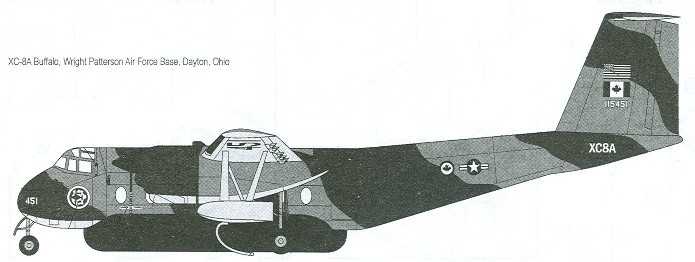
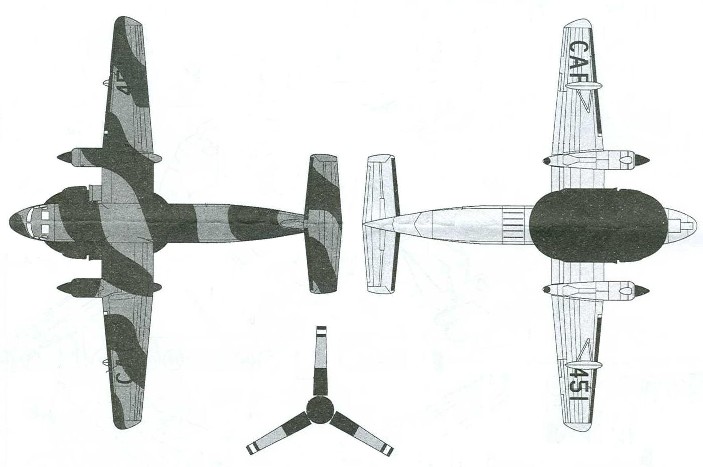
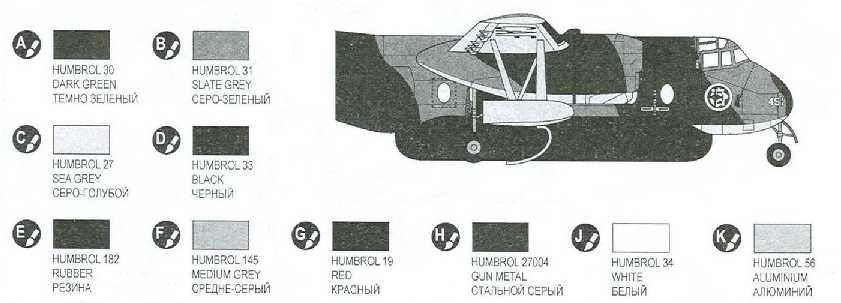
This aircraft was first flown on May 17, 1967, registered as CF-LAQ and subsequently delivered to the RCAF Aerospace Engineering and Test Establishment as a CC-115, s/n 9451, re-serialed as 115451 with the CAF on May 27, 1970. It was leased back to the manufacturer on July 15, 1970, again registered as CF-LAQ. Returned to the CAF it was loaned to the USAF Flight Dynamics Laboratory (FDL) as test vehicle for the ACLS (Air Cushion Landing System) program.
The ACLS concept was invented by T. Desmond Earl and Wilfred J. Eggington of Bell Aerospace at Buffalo, New York, USA, and a company-funded effort was initiated on December 1, 1963, soon joined by the Flight Dynamics Laboratory. The ACLS was first demonstrated on the Lake LA-4 Buccaneer amphibian, flown from Niagara Falls International Airport, New York, in 1967. The LA-4 performed take-offs and landings on water, ice, snow, grass and conventional runways.
In 1970 the USAF and the Canadian Department of Industry, Trade and Commerce jointly issued a contract for Bell Aerospace to design, install and flight test an ACLS on the CC-115, redesignated XC-8A, and 115451 was delivered for conversion to Bell Aerospace on November 15, 1971. The first flight in the ACLS configuration was made from Buffalo in early April, 1975, the first landing was made on April 11. Flight testing was done by the 4950th Test Wing, Aeronautical System Division, USAF, at Wright-Patterson AFB, Ohio.
The aircraft returned to the CAF on April 30, 1979 and was converted back to a CC-115 and used for SAR operations and is currently operational with 442 (T & R) Squadron, CFB Comox, British Columbia.
www.sae.org/technical/papers/760920
The Development and Flight Testing of the XC-8A Air Cushion Landing System (ACLS)
Document Number: 760920
Author(s):
David J. Perez - Air Force Flight Dynamics Lab., Wright-Patterson Air Force Base
Abstract:
The Air Cushion Landing System is based on the ground effect principle which employs a stratum of air instead of wheels as the aircraft ground contacting medium. The concept has experienced an evolutionary process from Air Cushion Vehicles (ACVs) to an air cushion equipped, 41, 000 lb (18 589 KG) Buffalo aircraft, designated the XC-8A. The XC-8A has demonstrated the ability to operate from a variety of landing surfaces and across many types of obstacles. This paper summarizes the XC-8A development and preliminary flight test results.
Product Status: In Stock
PDF File:
TIFF File:
Photos of report:

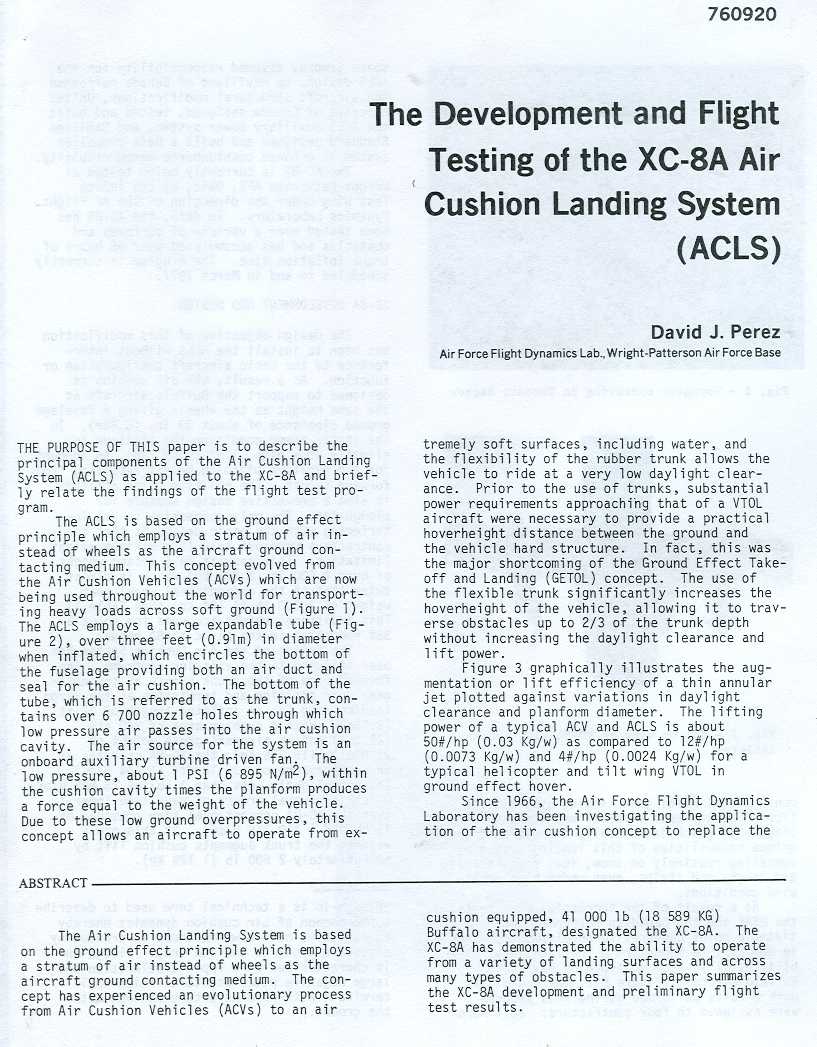
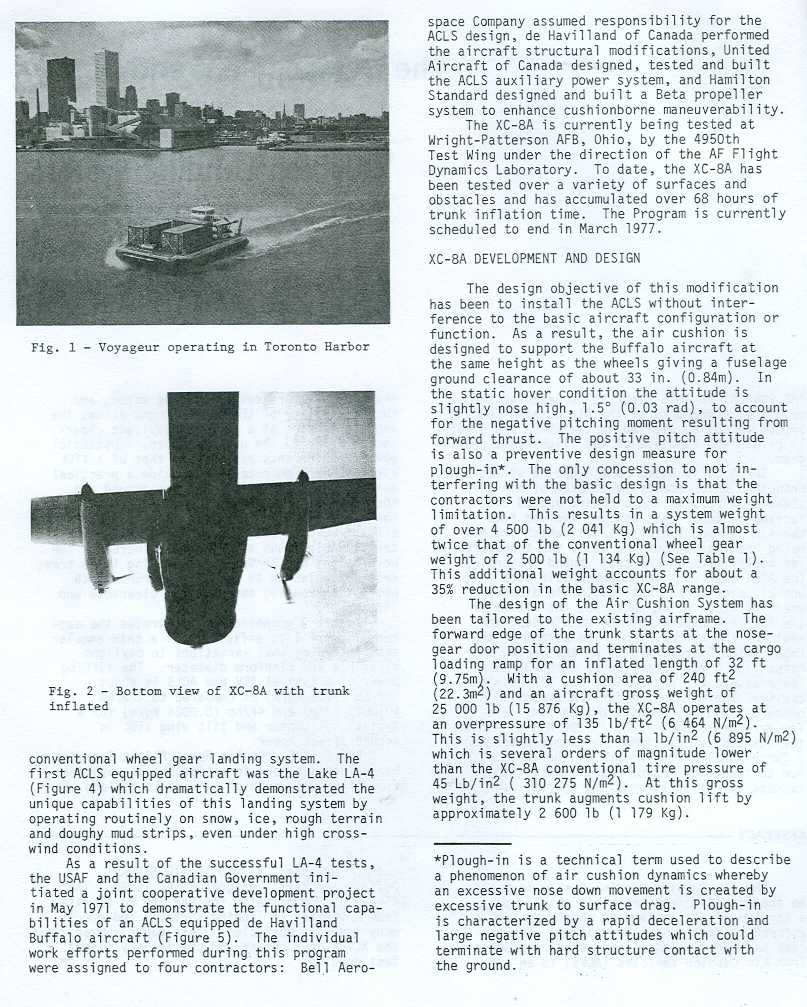
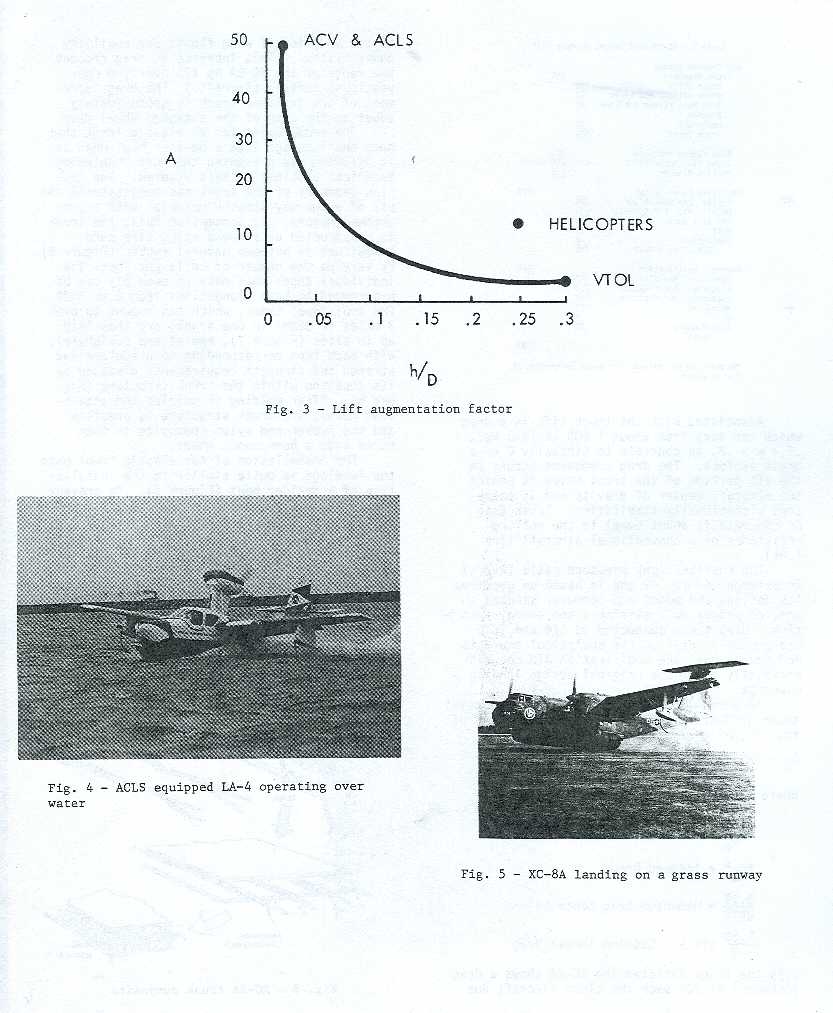
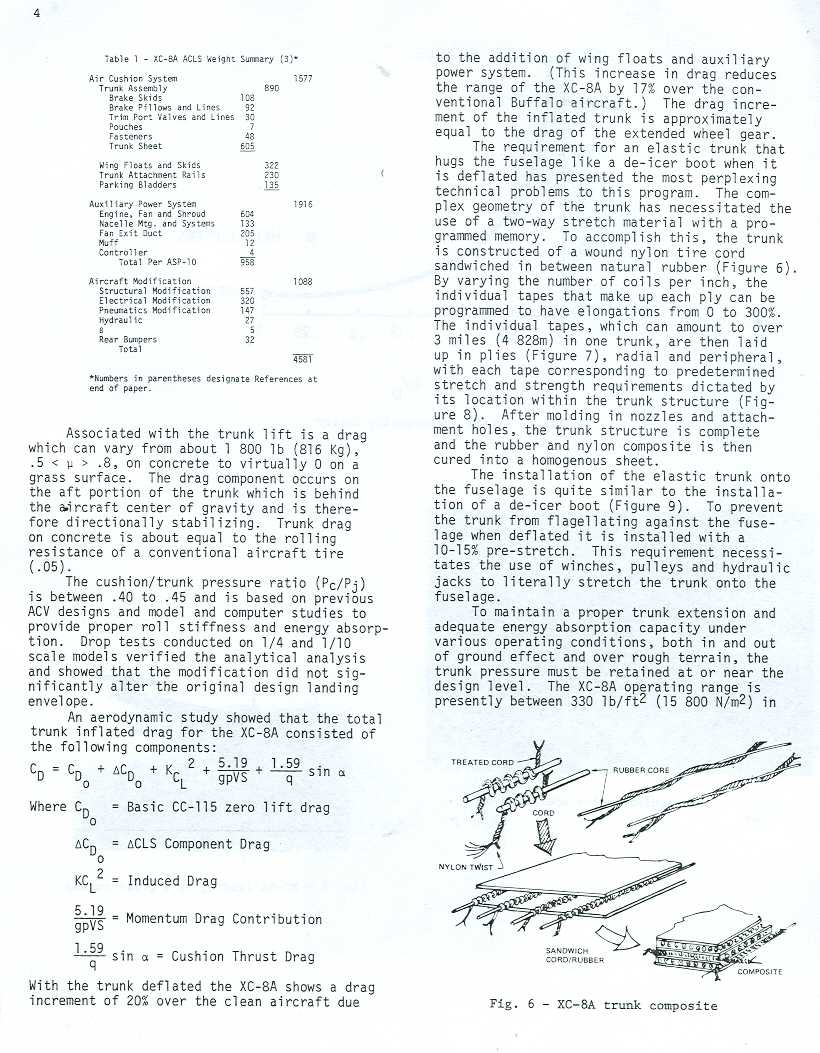
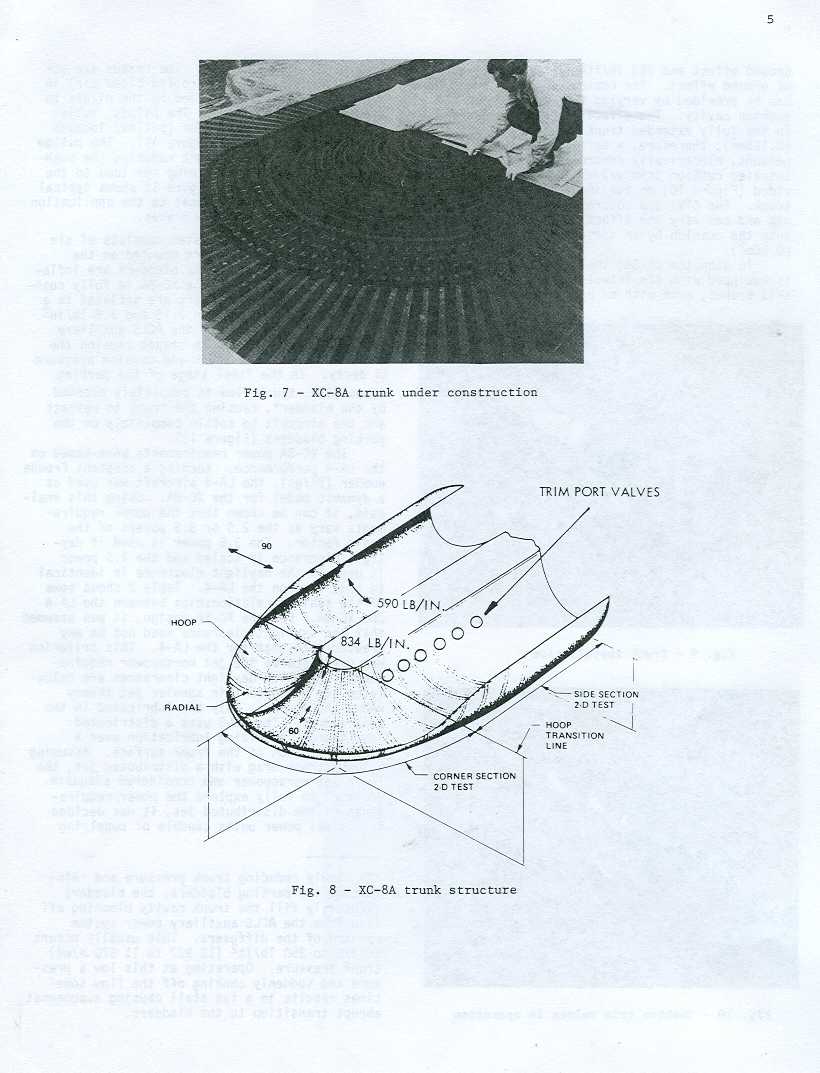

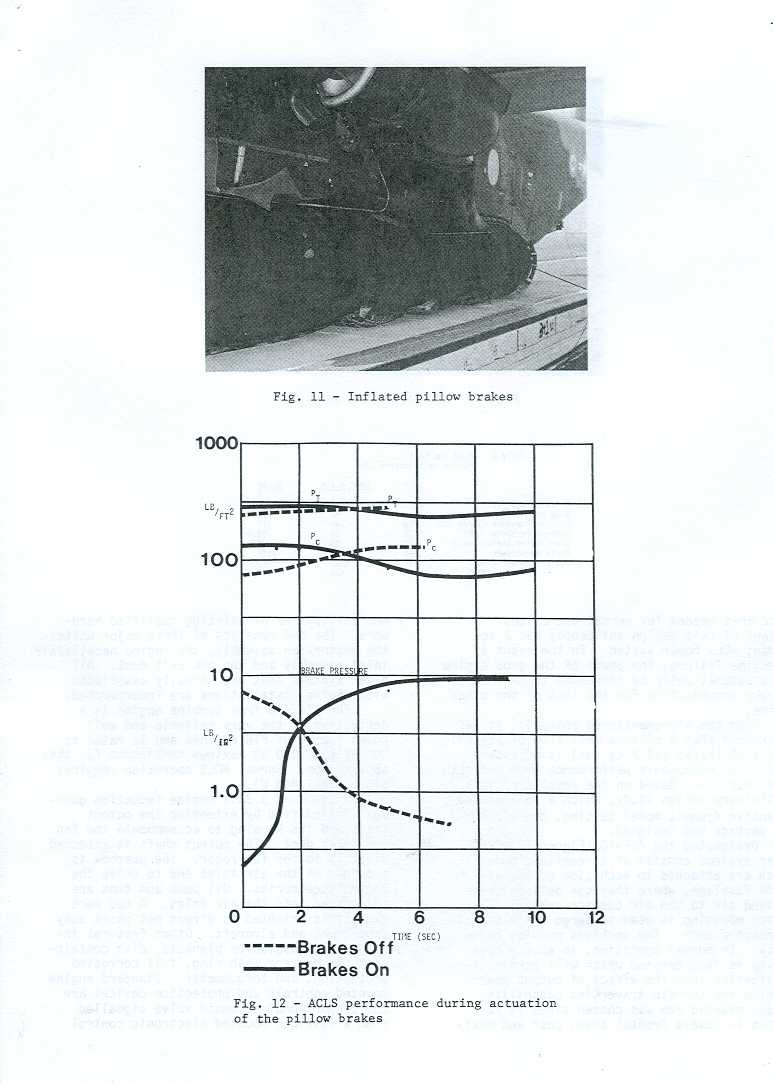
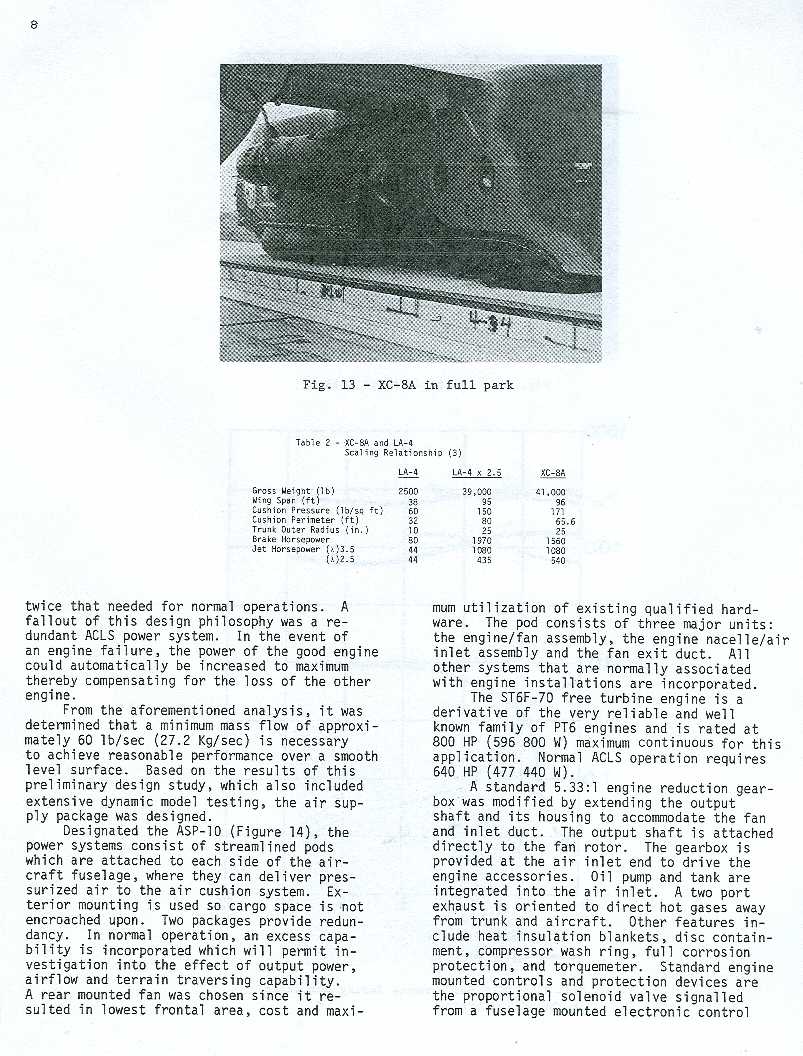
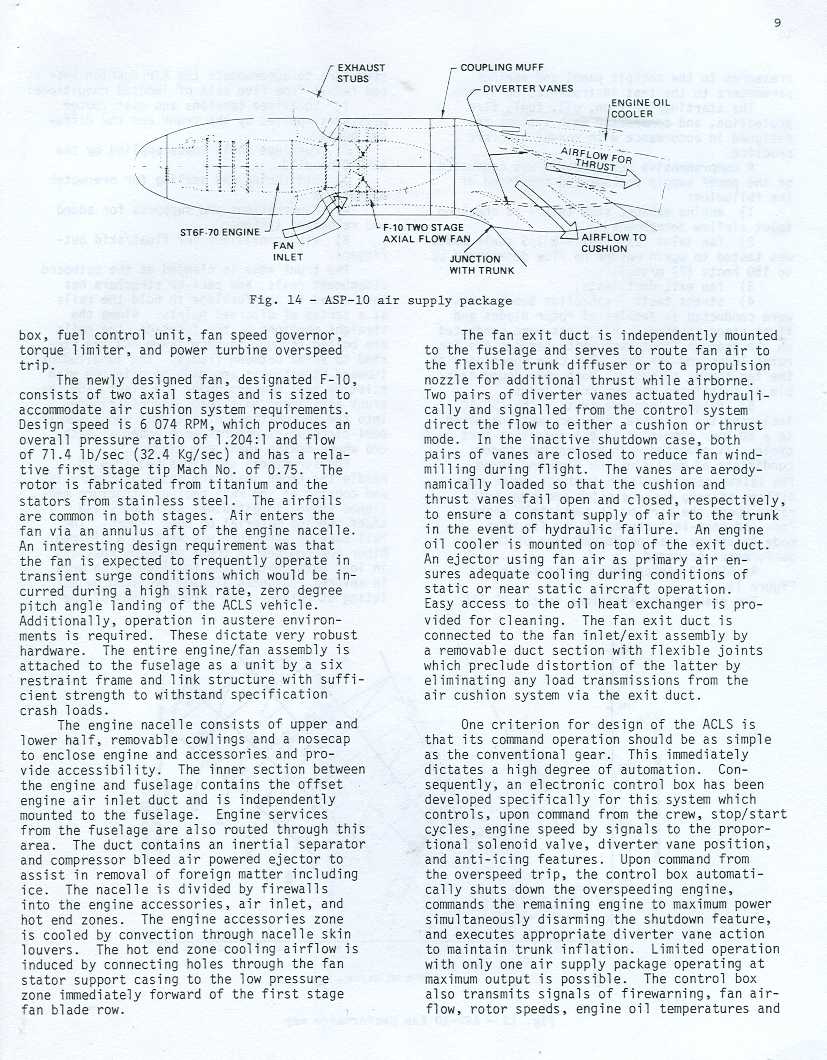
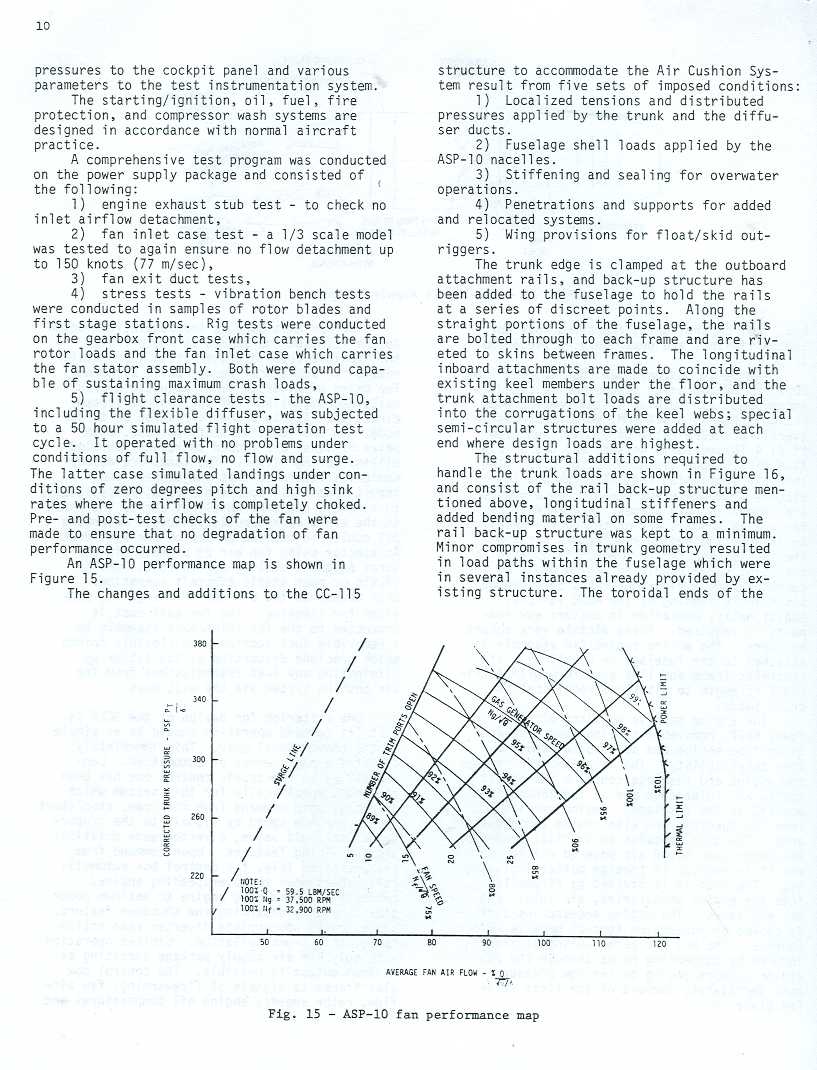
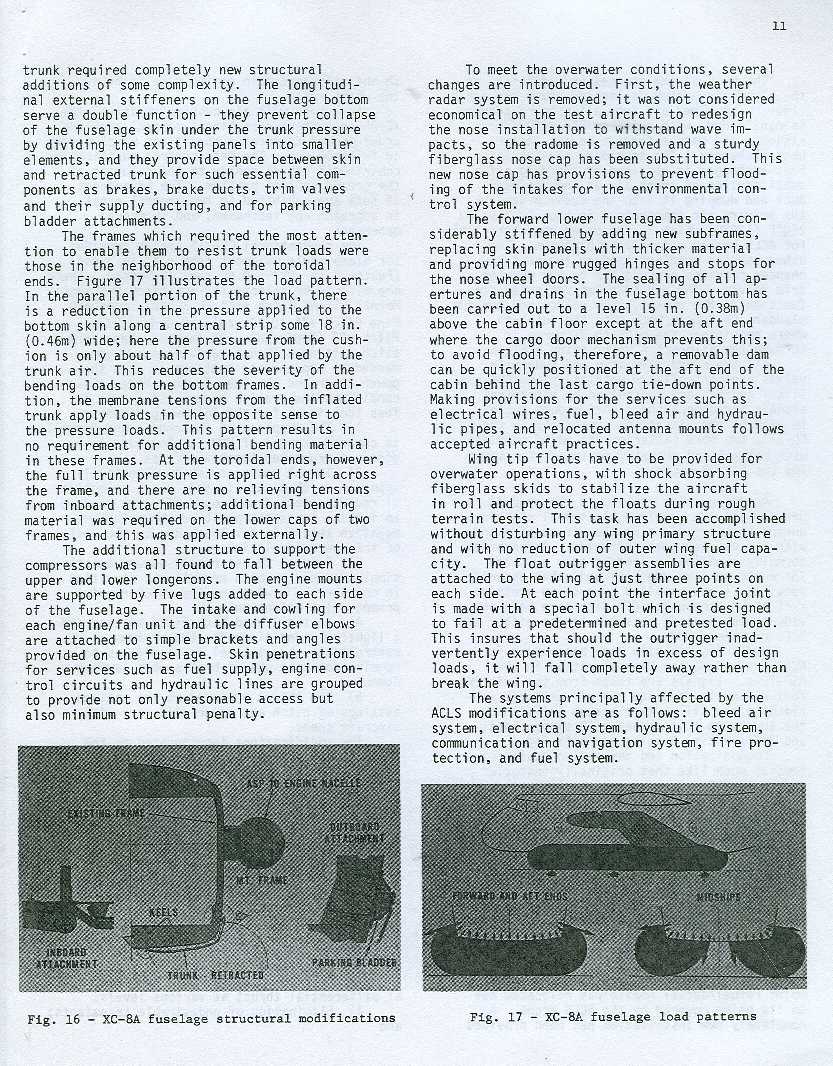

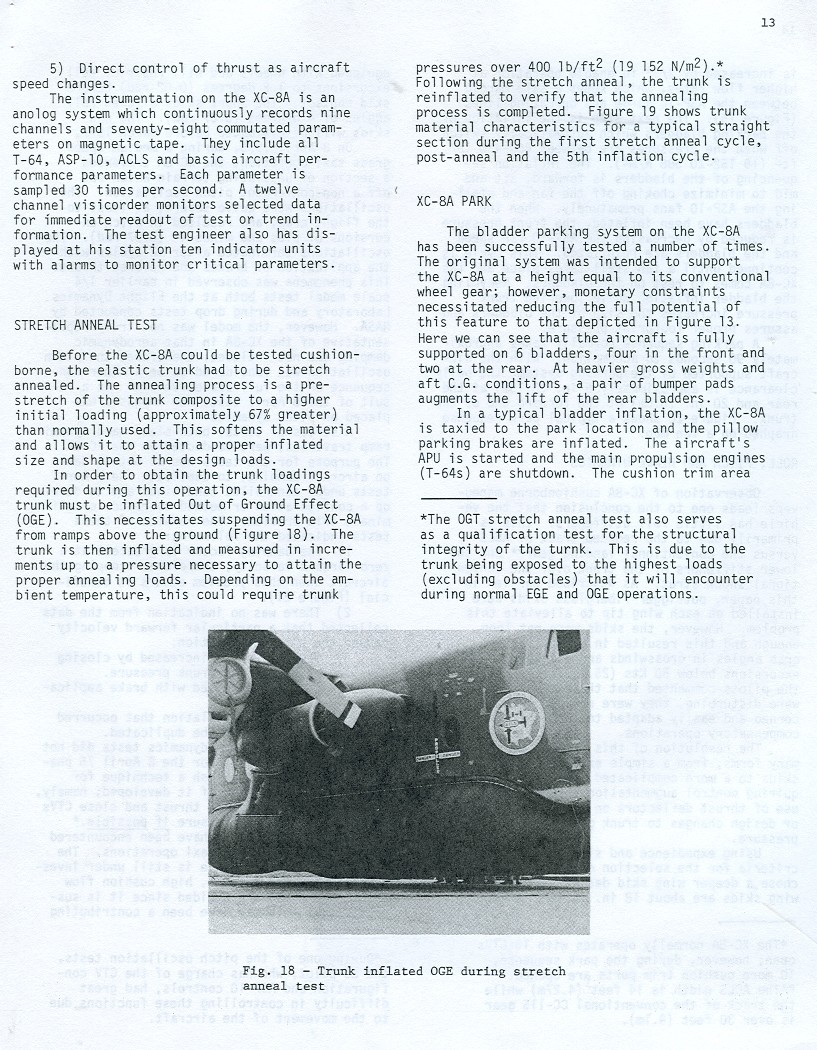
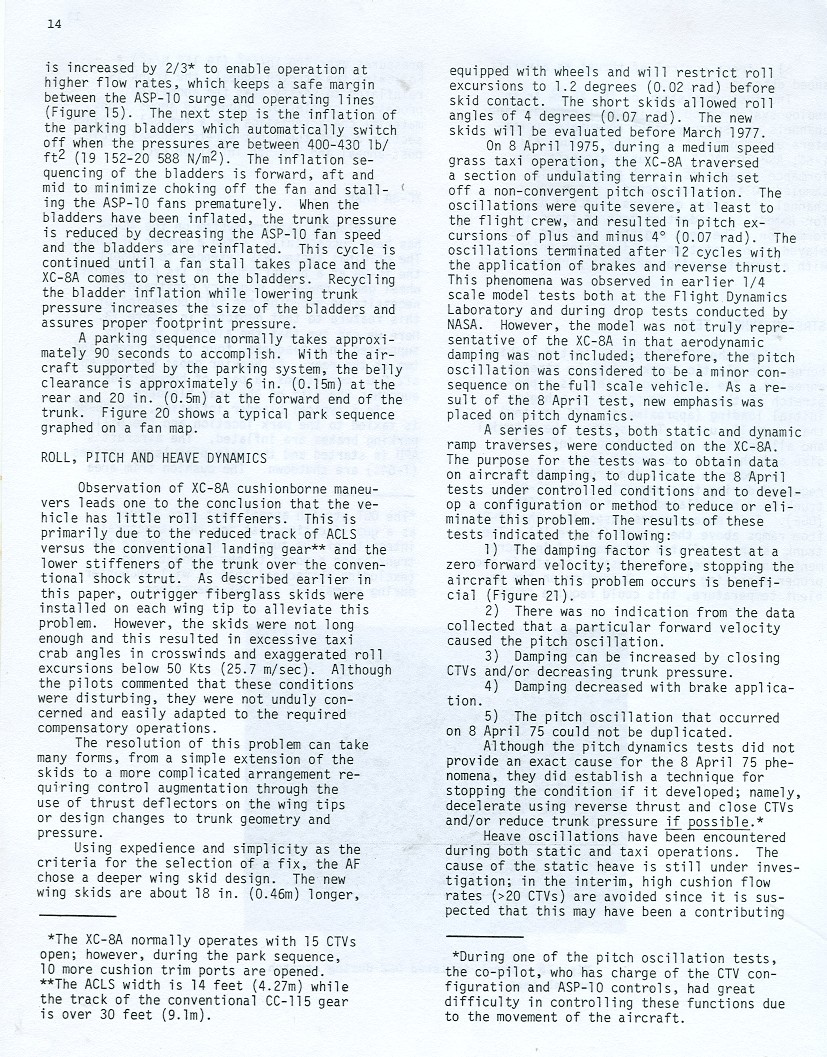
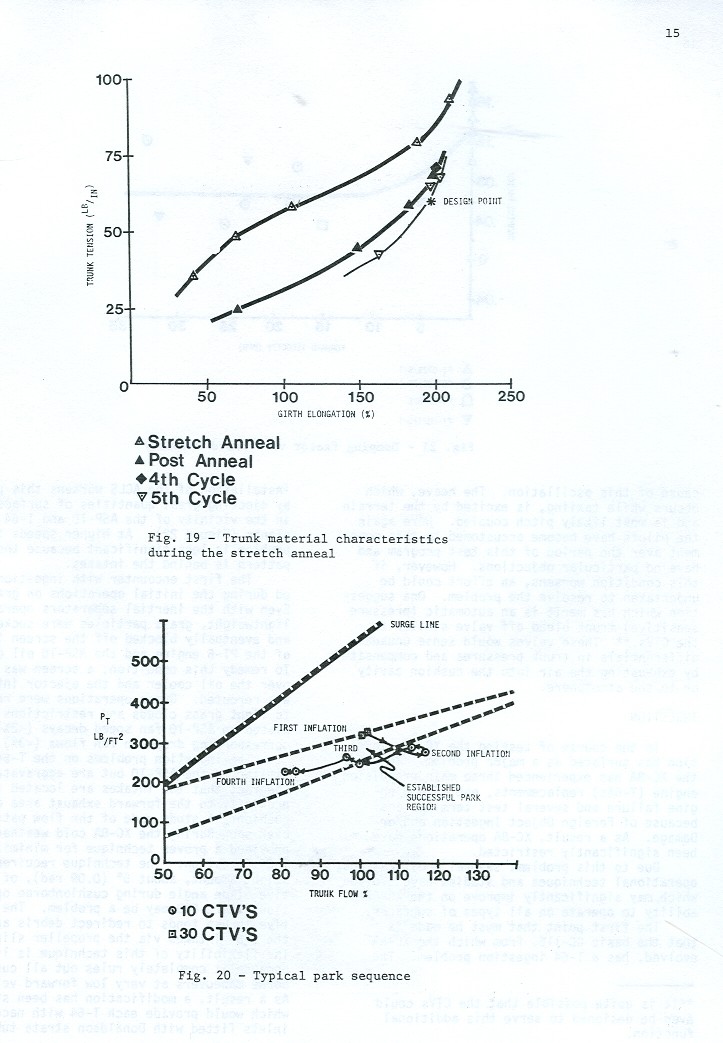



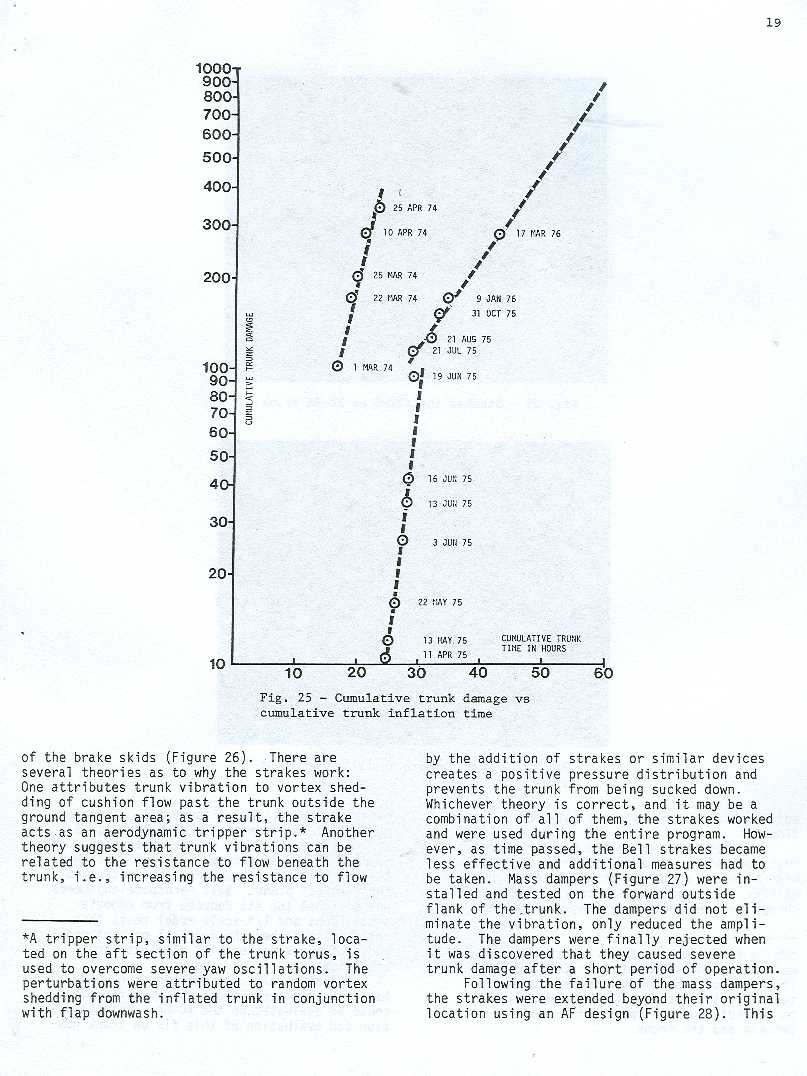

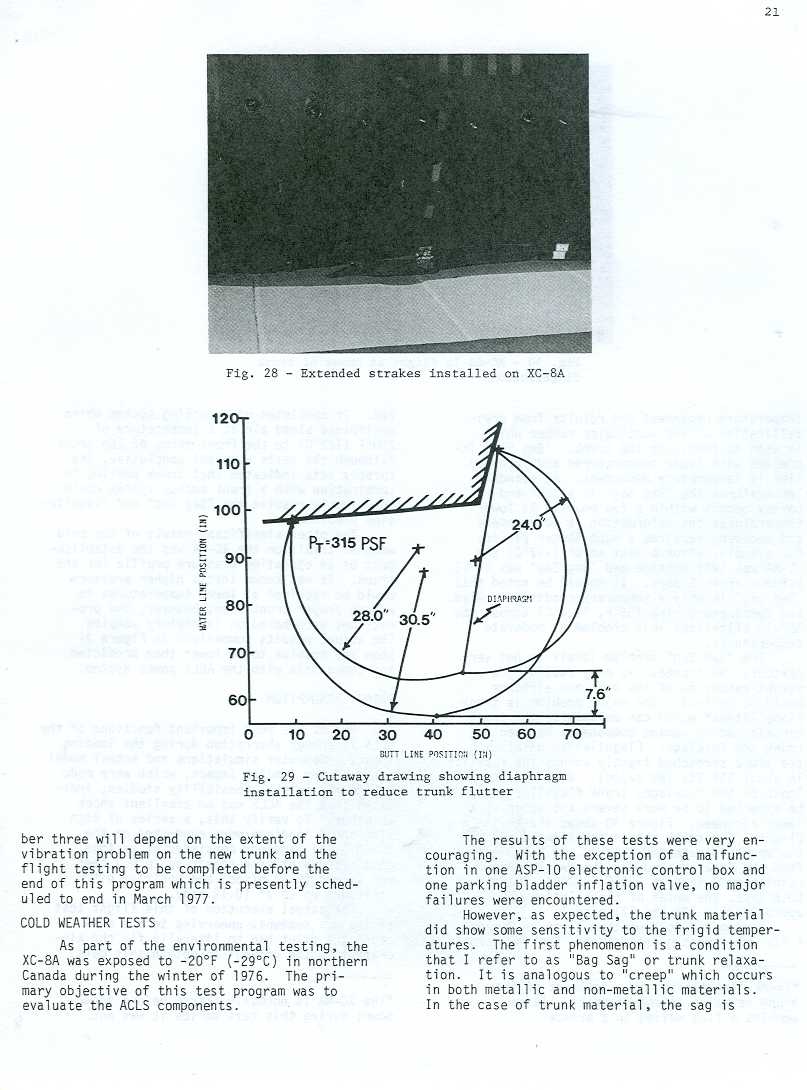
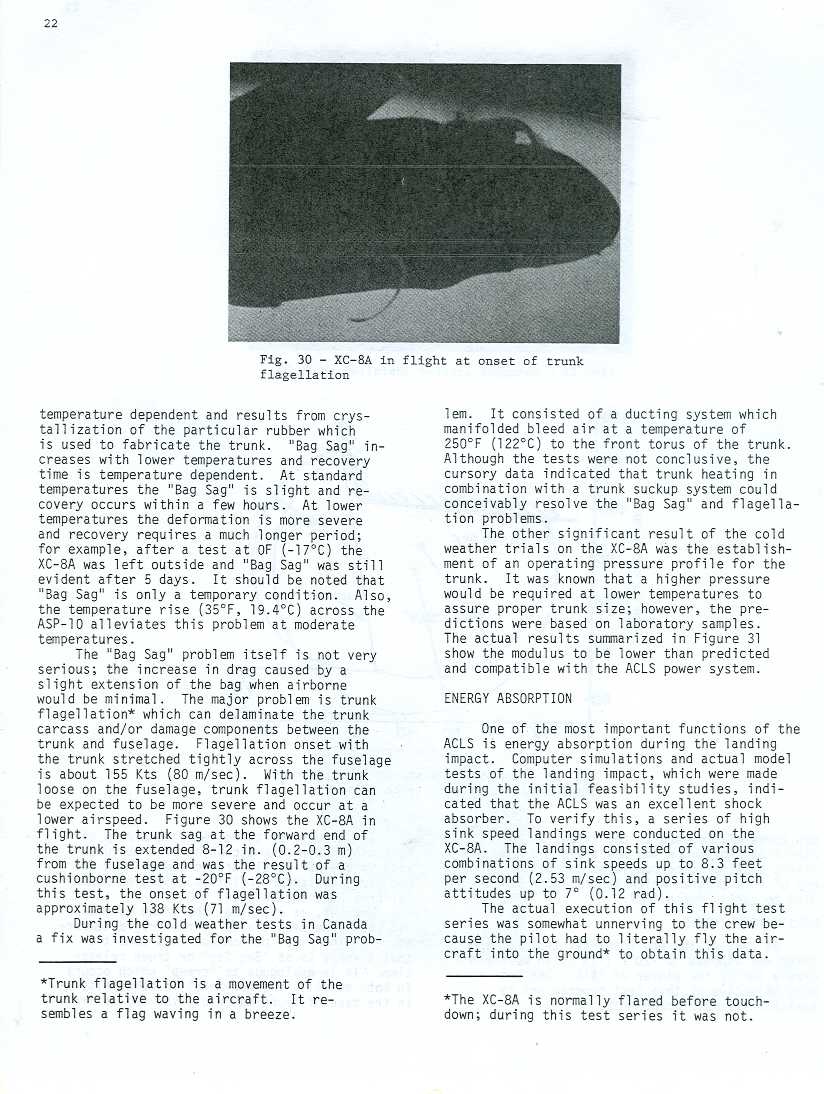



Earl and Eggington's Patented ACLS design work for the C-130 pre-existed the XC-8A demonstrator as seen below:
www.google.com/patents?vid=USPAT3275270&id=XthtAAAAEBAJ&jtp=1#PPP1,M1
AIRCRAFT WITH GROUND EFFECT TYPE LANDING GEAR
Wilfred James Eggington (1965)
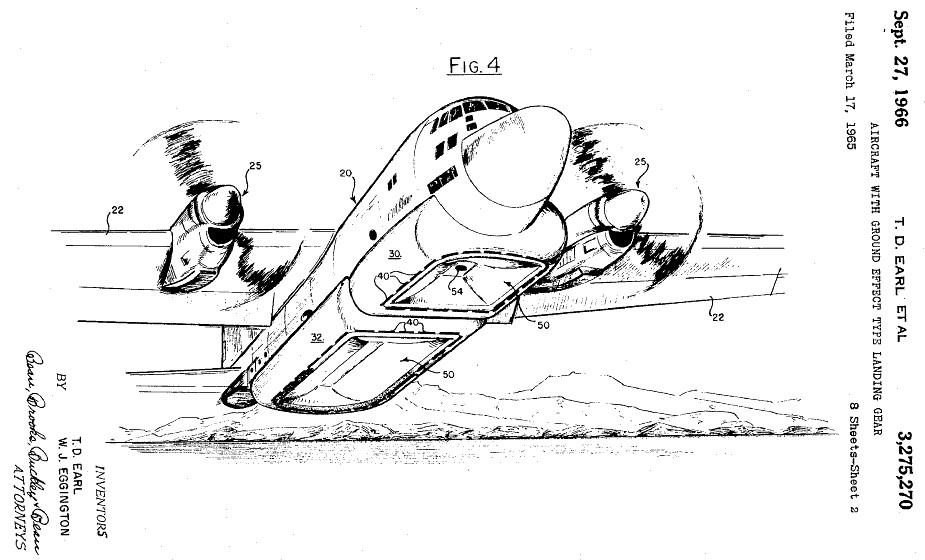

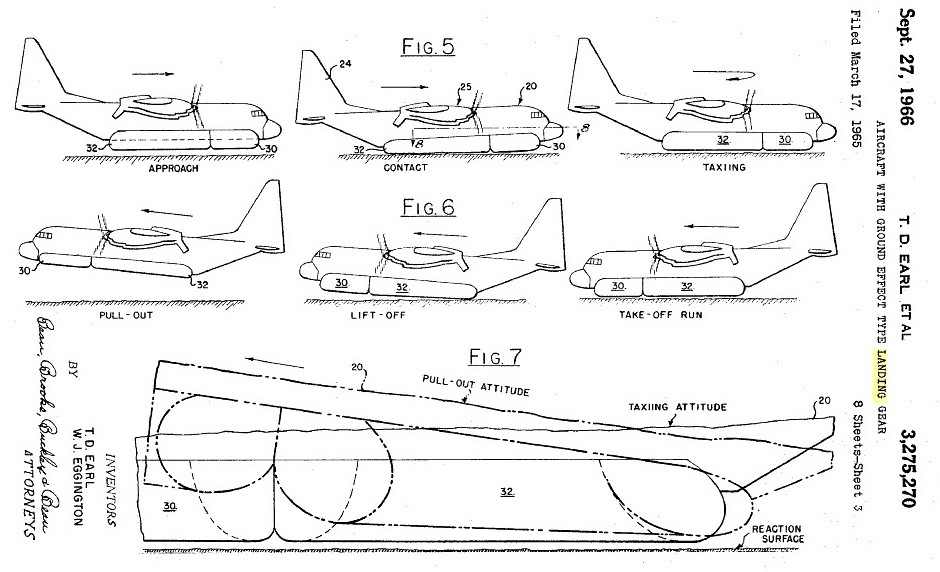
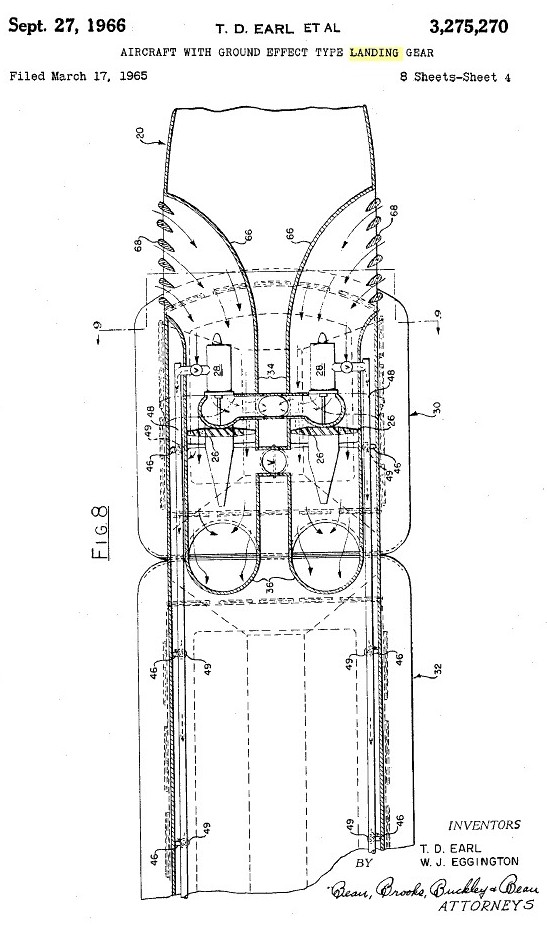


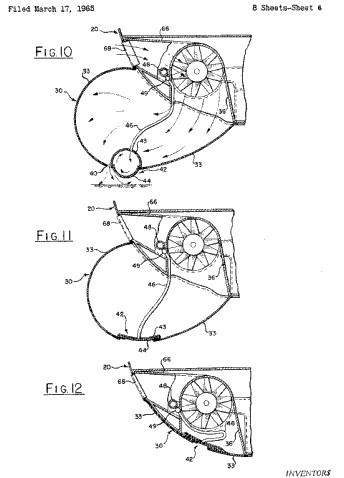
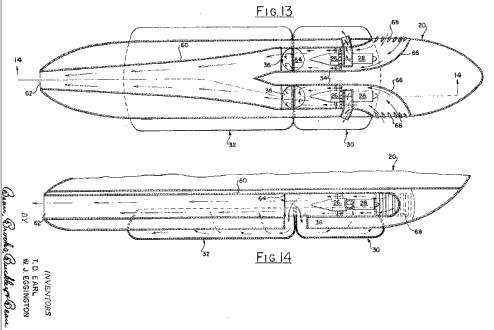
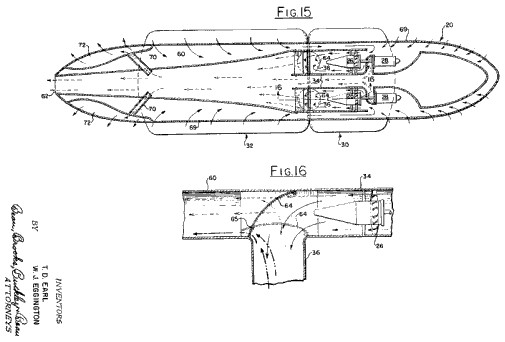
The Russians already have a seaplane in production with air cushion landing gear:

Aeroric Research and Production Enterprise: DINGO
2 Sibirskaya St, 86
603089
Nizhny Novgorod
Telephone: 8 (8312) 44 1965
Jane's All the World's Aircraft 1995-96 says:
"Basically conventional low-wing twin-boom pusher engined configuration: unique air cushion landing systems, permitting operation from any kind of ground surface, water, snow and ice; able to overcome hummocks and tussocks up to 30 cm (1ft) high, edges or projections up to 50cm (1ft 8in) high, ditches up to 1.0m (3ft 3in) wide and slopes of up to 7 degrees
This principle is in use worldwide on hovercraft like the U.S. Navy Landing Craft Air Cushion (LCAC) pictured below offloading a U.S. Army FMTV 5-ton truck (this is its cargo carrying capacity---truck actually weighs 22,000 pounds--the same as a M113A3 Gavin AFV) towing a M198 155mm howitzer. So why do we need an entire separate service bureaucracy for a marine corps that should be part of the U.S. Army?
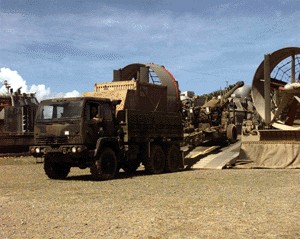
VIDEO:
 youtube.com/watch?v=F2A8GuURzr8
youtube.com/watch?v=F2A8GuURzr8
What is not commonly known is that the LCAC can travel a good distance inland on its air cushion, even clearing obstacles up to 8 feet high.
The beauty of the Air Cushion Landing System (ACLS) on an aircraft is that it would no longer have to worry about the ground soil being flat and able to accept the weight of the vehicle. The wheels being down on in even the air cushion should momentarily lose lift and so it can bounce back on cushion, and long-term parking of course. For the first Iran Rescue mission, a light UV-18 Twin Otter aircraft had to be flown into "Desert One" so the soil there could be tested for its ability to accept the 167,000 pound weight of C-130 Hercules aircraft that would fly in and refuel the helicopters that would fly the assault force and rescued hostages from the Tehran soccer field.
With an Air Cushion Landing System (ACLS) fitted to Lockheed-Martin MC-130J Combat Talon IIIs
( "J" model Propfans with Combat Talon II infiltration electronics, Combat Talon I FULTON STAR II systems and improved seating configuration to fit the same number of Paratroopers as airlanded Soldiers = 92, not 64), the rescue force could be parachuted in quickly to include mobility devices like HPVs and AFVs like the M113A3 Gavin so it can rapidly converge on the enemy from an unexpected direction and if necessary fight its way out to the Extraction Zone using vehicle level firepower to avoid being trapped like SEAL TEAM 6 was in Grenada at the Governor's house or the Rangers and Delta operators in Mogadishu. Or, the rescue force could parachute and link up with buses/trucks as the latter was the infiltration means for the first Iran Rescue. No loitering in the zone with helicopters or tilt-rotors. No parachute jump injuries via parachute ankle braces, elbow/knee padding, and better descent rate T-21 static-line or MC-4/5 Ram-Air parachutes that can be flown into the wind and flared for a standing up landing.
At the EZ, USAF Combat Controllers would have readied a suitably flat but not necessarily firm area at least 3,000 feet long and 100 feet wide for the Combat Talon IIIs to land and be there waiting to pick up the AIRBORNE rescue force. A deployed drogue parachute and/or braking rockets could cut down the landing roll further. The C-130 Hercules STOL test bed was supposed to have been able to land in under 600 feet. These devices should come standard on Combat Talon IIIs. The entire force arrives by M113 Gavin or Mini-Gavin TAFVs and/or HPVs and rolls up into the rear ramp of the Combat Talon IIIs for take-off and exfiltration back to safe areas.
With space-based intelligence means, it is possible to plan with great precision AIRBORNE operations to include extraction by air cushion equipped Combat Talon IIIs to such a degree that the difficulty of conducting an AIRBORNE versus an AIR ASSAULT become equivalent. The formation of helicopters needs an open area just about as large as could accept a Combat Talon III, though the latter has benefits of faster ingress/egress, ability to deliver/recover greater combat power coupled with minimal loss of surprise.
"Space Command and the NRO (National Reconnaissance Office) have made significant strides in blending the control of black (classified) and white (unclassified) systems; and more importantly splitting and routing the right information to the right users,Although the hardware in space, at ground stations and in the hands of warfighters driving planes, tanks and ships has improved; the most significant gains have been made in getting the right information to the right people at the right time.
"The key to winning a conflict now and in the future, is moving information to people who can do something with it,"
--GEN Howell Estes, Commander of Air Force Space Command."Although space is critical to winning any battle today, many times that fact is forgotten"
--MG Gerald Perryman, Commander 14th Air Force.
COMBAT TALONS IN THE WATER? YES!
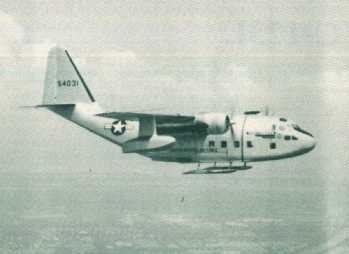
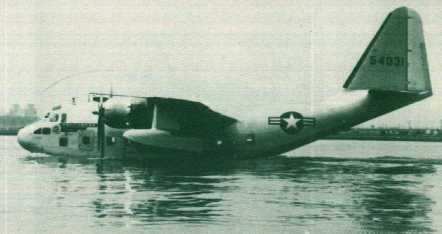
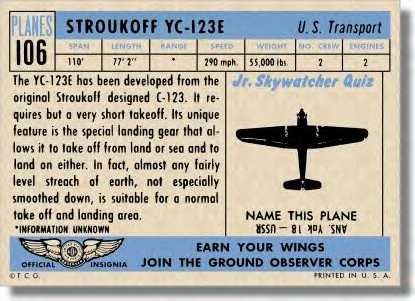
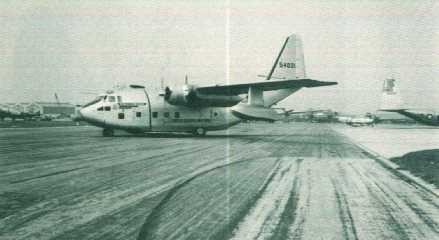
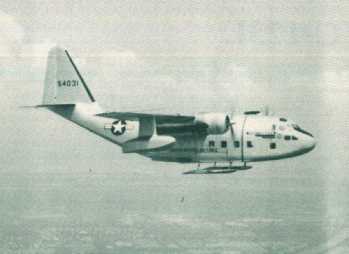
DETAILS: Seaplane Transports
How? HydroSkis & Boat Hulls = Hercules-On-Water That's H-O-W

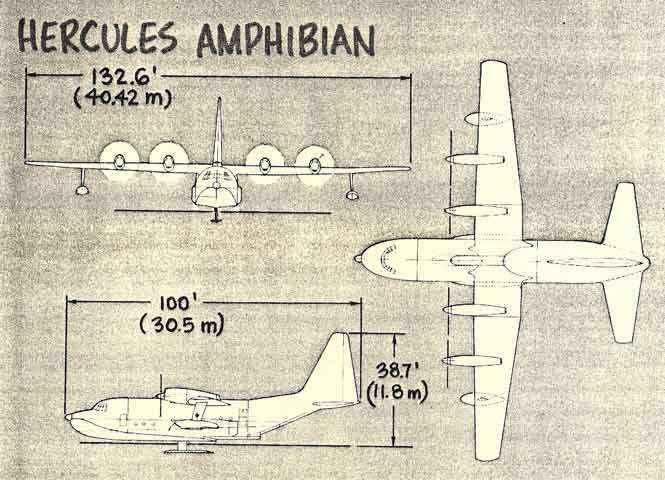
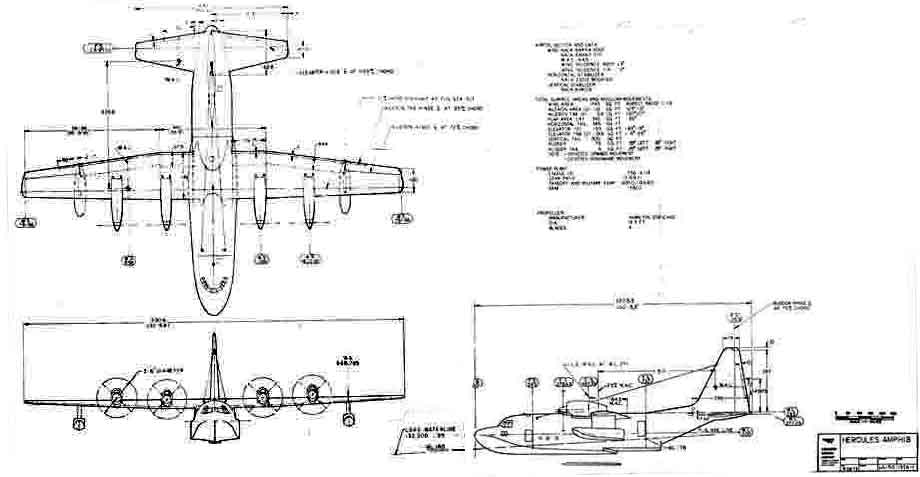
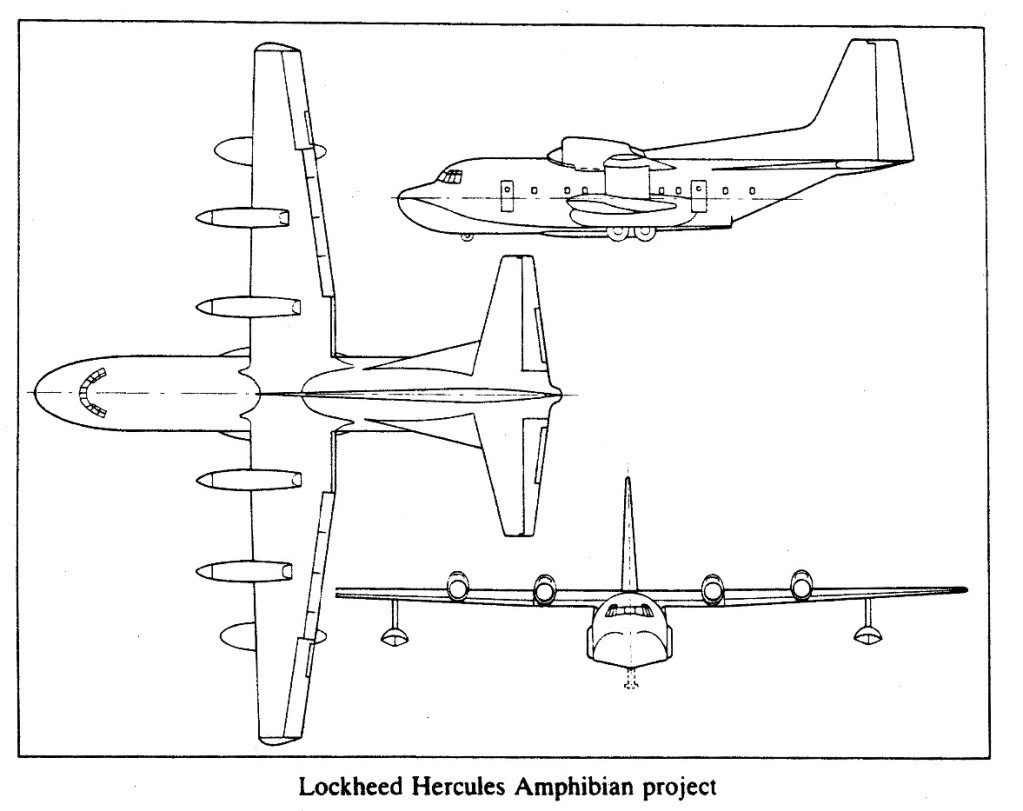
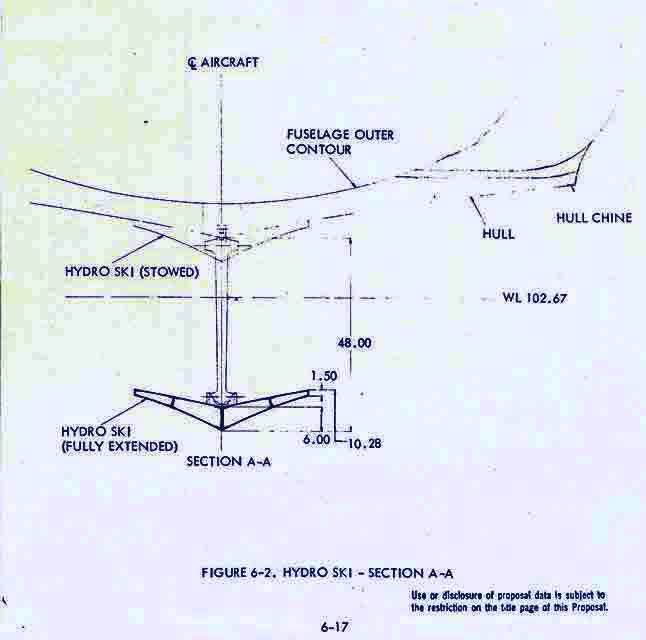
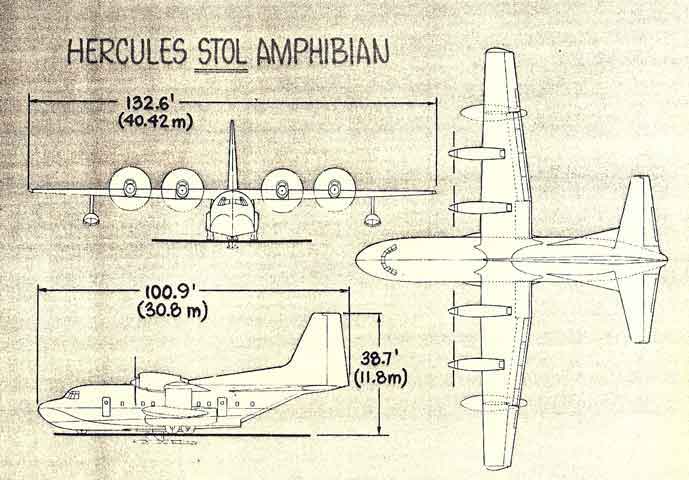

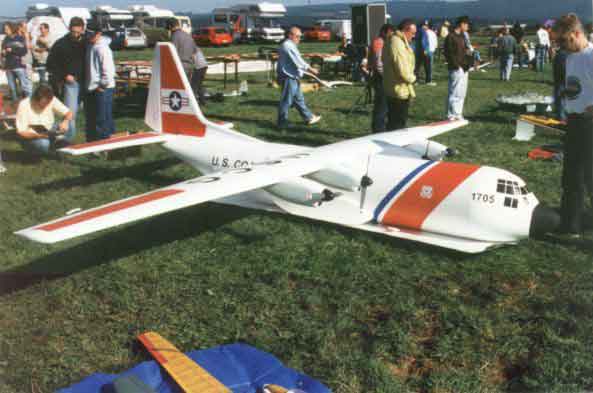
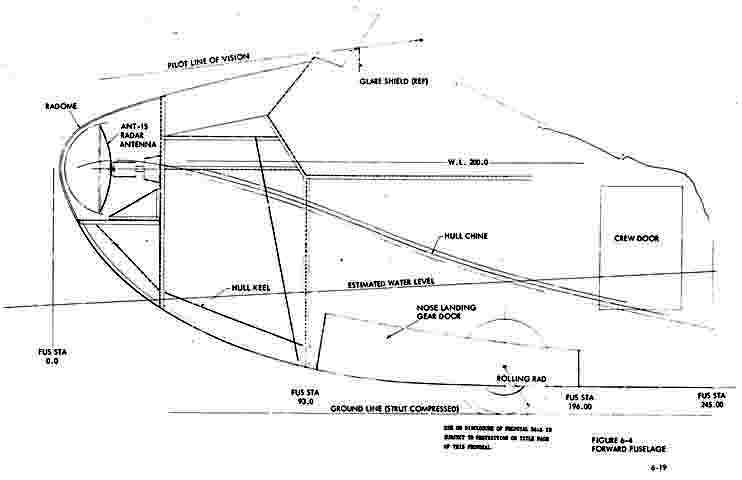

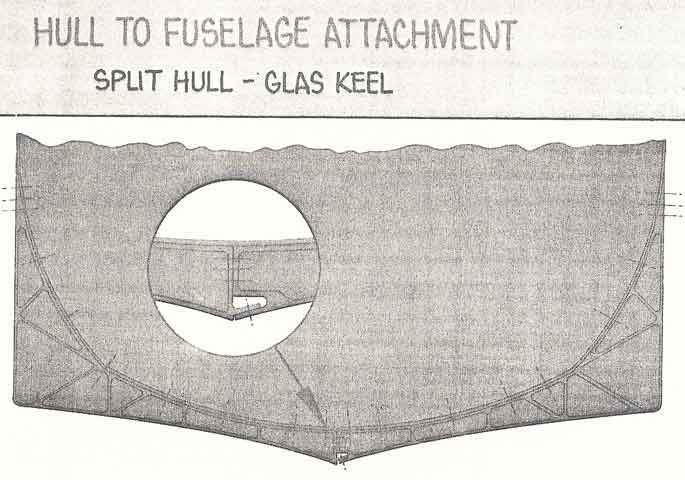
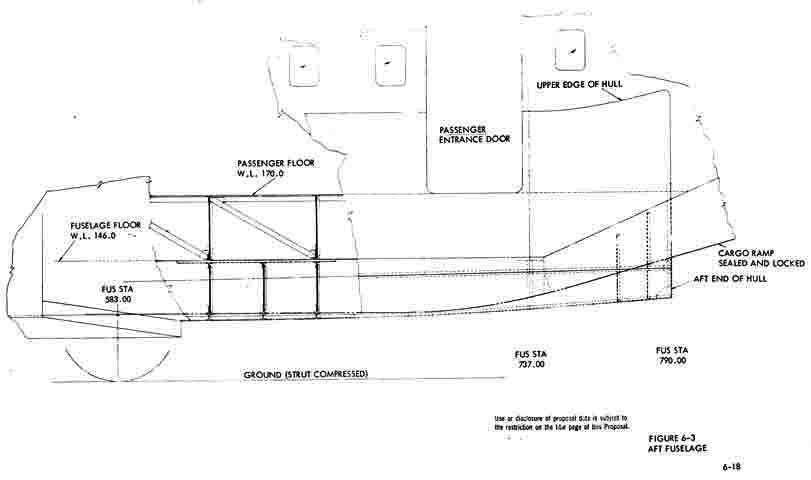
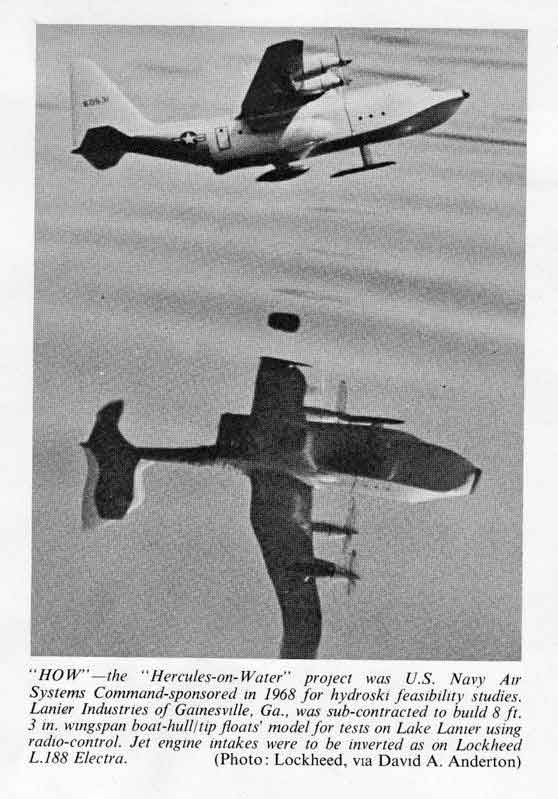



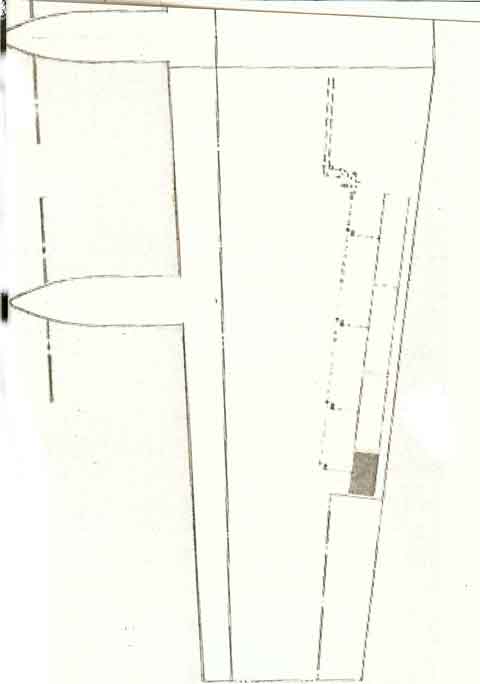

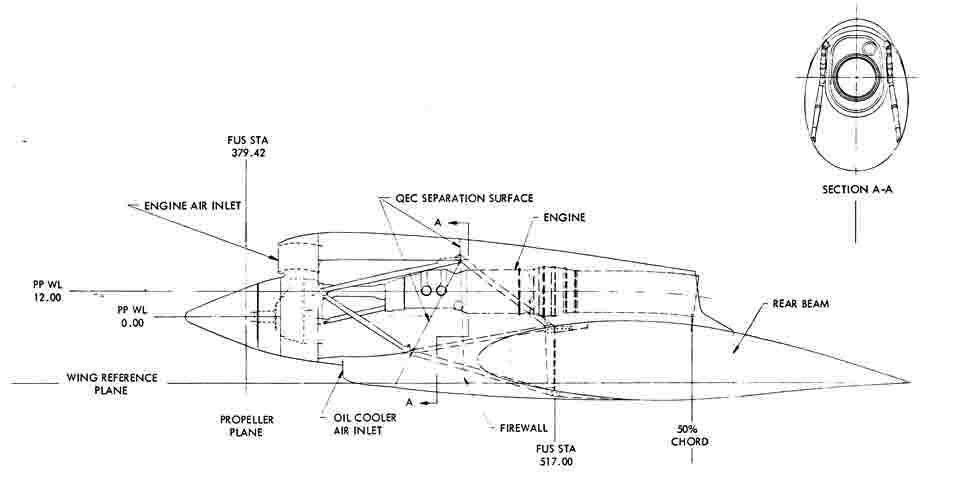
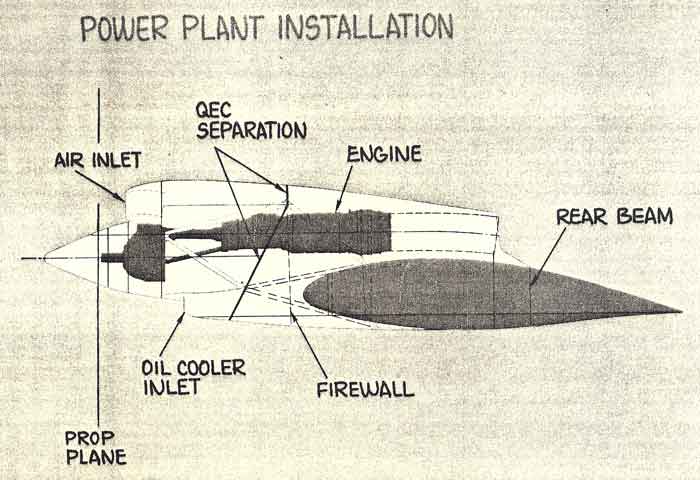

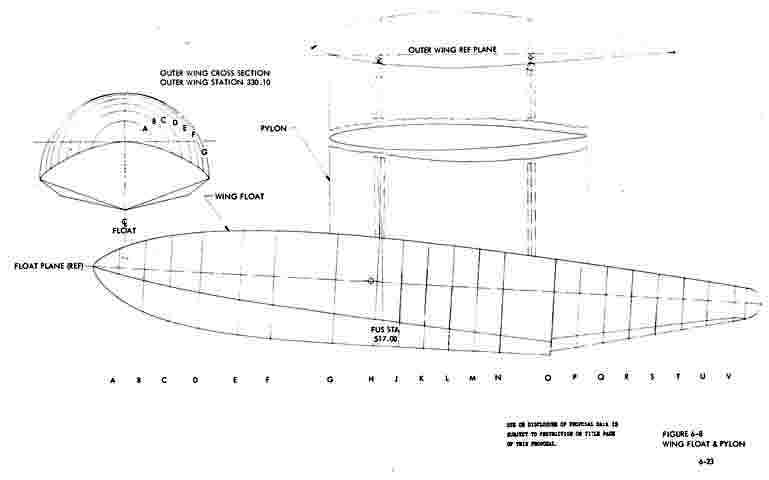

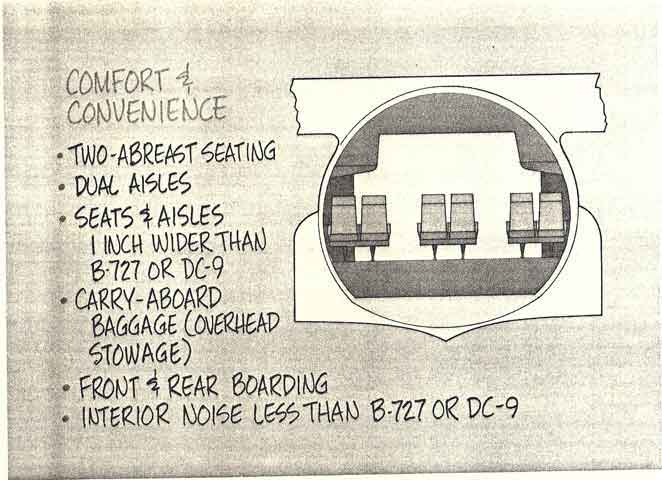
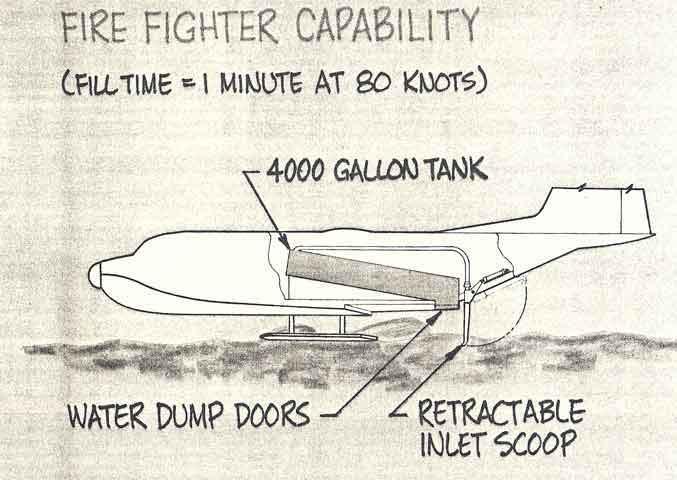
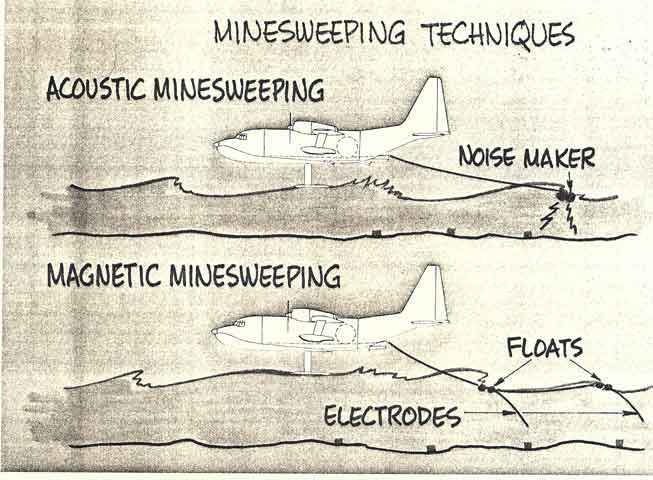

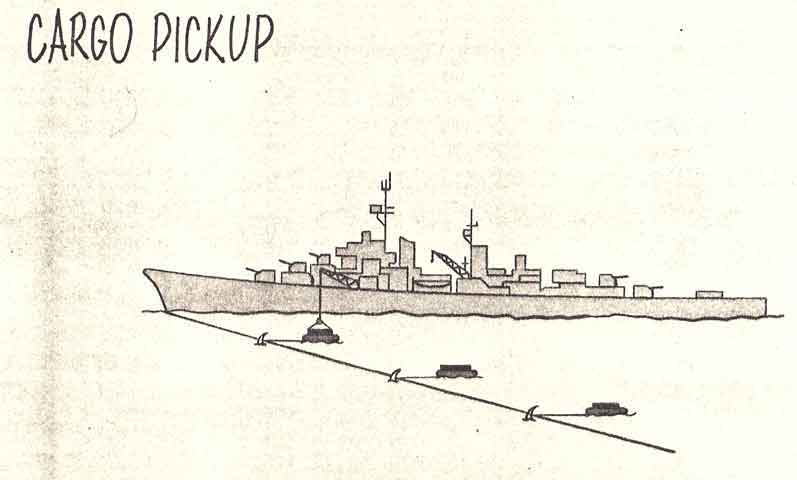
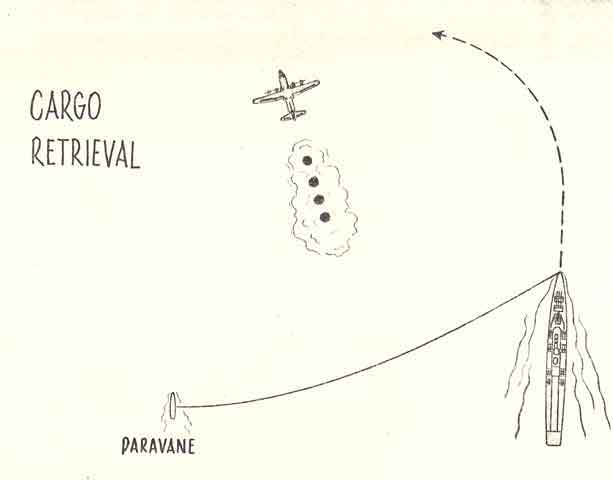
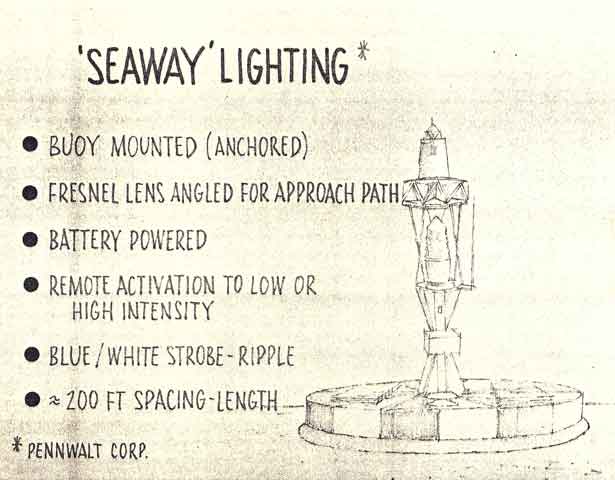
Looks like a scene from the 1965 James Bond movie, Thunderball, doesn't it?


Thanks be to BlacktailFA for cracking the case open and showing us "how" Lockheed can make the C-130 into a seaplane transport!
What's AMAZING is this isn't a conventional boat hull amphibian that gets "stuck" on the water during take-offs and landings--it has HYDROSKIS so it can get unstuck or even better stay only partially connected to the water for dragging mine-sweeping gear...WHY do we need to use fuel-hungry, hard-to-maintain, costly helicopters which need ships to counter mines when efficient fixed-wing aircraft can do the job far faster and better?
Floats
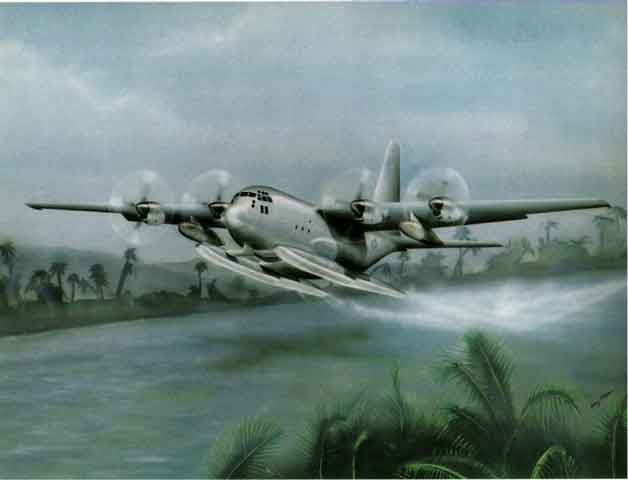
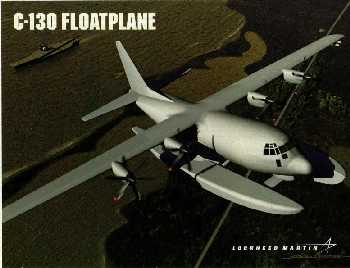
(Click on picture for full-size image)
Another plus is the Combat Talon III if its engines are inverted to avoid sea spray it could land on water to launch/recover U.S. Army Special Forces and Navy SEALs in small boats inserting from over-the-horizon. Not only can the Combat Talon III skim the water and deliver the boat teams closer to the shore before the earth curves and enemy radar can detect them, it can land and recover SEALs if after a parachute "rubber duck" things go wrong as they did during Operation URGENT FURY off the shore in Grenada. An Air Cushion Combat Talon III would have less drag then a pontoon equipped C-130, thus being able to fly faster and farther.
If water pontoons are used the engines don't have to be inverted to stop sea spray but flight performance would be degraded...but still worth doing! The Stroukoff Pantobase water & land ski system would work without flight performance loss but would probably need the engines inverted since the Combat Talon III would sit lower in the water. What happened? USSOCOM wanted Herk seaplanes in 1998....why don't we have them today?
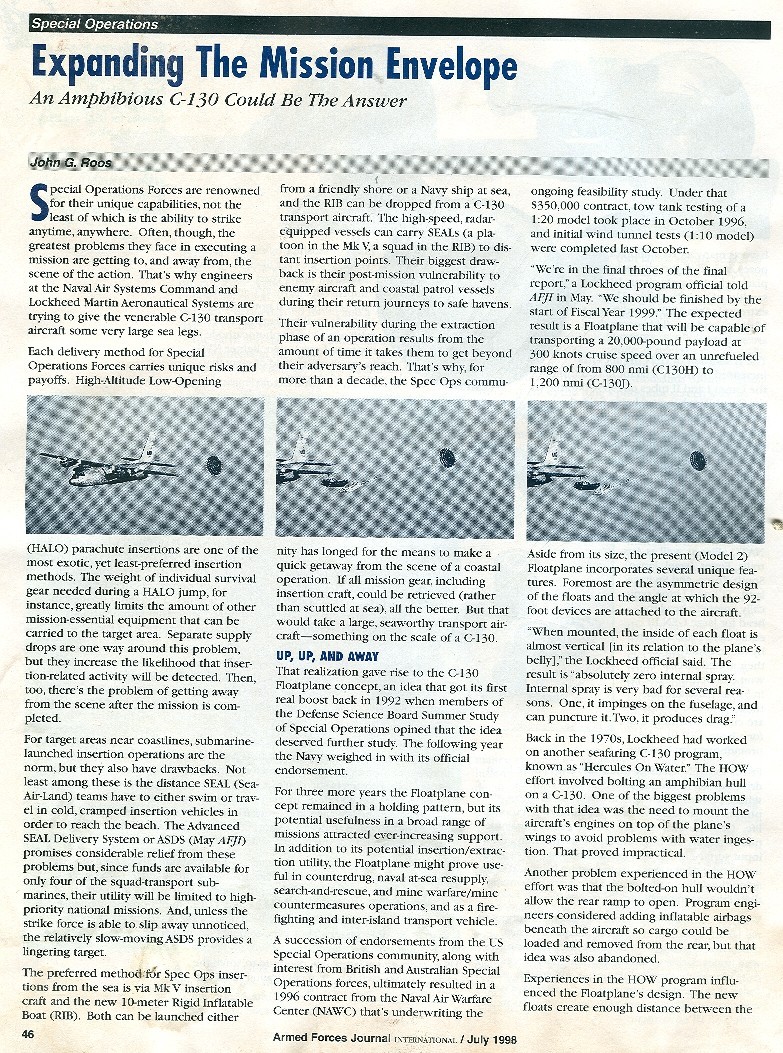

Special Operations
Expanding The Mission Envelope
An Amphibious C-130 Could Be The Answer
John G. Roos
Special Operations Forces are renowned for their unique capabilities, not the least of which is the ability to strike anytime, anywhere. Often, though, the greatest problems they face in executing a mission are getting to, and away from, the scene of the action. That's why engineers at the Naval Air Systems Command and Lockheed Martin Aeronautical Systems are trying to give the venerable C-130 transport aircraft some very large sea legs.
Each delivery method for Special Operations Forces carries unique risks and payoffs. High-Altitude Low-Opening from a friendly shore or a Navy ship at sea, and the RIB can be dropped from a C-130 transport aircraft.
(HALO) parachute insertions are one of the most exotic, yet least-preferred insertion methods. The weight of individual survival gear needed during a HALO jump, for instance, greatly limits the amount of other mission-essential equipment that can be carried to the target area. Separate supply drops are one way around this problem, but they increase the likelihood that insertion-related activity will be detected. Then, too, there's the problem of getting away from the scene after the mission is completed.
For target areas near coastlines, submarine-launched insertion operations are the norm, but they also have drawbacks. Not least among these is the distance SEAL (Sea Air-Land) teams have to either swim or travel in cold, cramped insertion vehicles in order to reach the beach. The Advanced SEAL Delivery System or ASDS (May AFJI) promises considerable relief from these problems but, since funds are available for only four of the squad-transport submarines, their utility will be limited to high priority national missions. And, unless the strike force is able to slip away unnoticed, the relatively slow-moving ASDS provides a lingering target.
The preferred method for Spec Ops insertions from the sea is via Mk. V insertion craft and the new 10-meter Rigid Inflatable Boat (RIB). Both can be launched either The high-speed, radar-equipped vessels can carry SEALs (a platoon in the Mk. V, a squad in the RIB) to distant insertion points. Their biggest drawback is their post-mission vulnerability to enemy aircraft and coastal patrol vessels during their return journeys to safe havens.
Their vulnerability during the extraction phase of an operation results from the amount of time it takes them to get beyond their adversary's reach. That's why, for more than a decade, the Spec Ops community has longed for the means to make a quick getaway from the scene of a coastal operation. If all mission gear, including insertion craft, could be retrieved (rather than scuttled at sea), all the better. But that would take a large, seaworthy transport aircraft-something on the scale of a C-130.
UP, UP, AND AWAY
That realization gave rise to the C-130 Floatplane concept, an idea that got its first real boost back in 1992 when members of the Defense Science Board Summer Study of Special Operations opined that the idea deserved further study. The following year the Navy weighed in with its official endorsement.
For three more years the Floatplane concept remained in a holding pattern, but its potential usefulness in a broad range of missions attracted ever-increasing support.
In addition to its potential insertion/extraction utility, the Floatplane might prove useful in counterdrug, naval at-sea resupply, search-and-rescue, and mine warfare/mine' countermeasures operations, and as a firefighting and inter-island transport vehicle.
A succession of endorsements from the U.S. Special Operations community, along with interest from British and Australian Special Operations forces, ultimately resulted in a 1996 contract from the Naval Air Warfare Center (NAWC) that's underwriting the ongoing feasibility study. Under that $350,000 contract, tow tank testing of a 1:20 model took place in October 1996, and initial wind tunnel tests (1:10 model) were completed last October.
"We're in the final throes of the final report," a Lockheed program official told AFJI in May. "We should be finished by the start of Fiscal Year 1999." The expected result is a Floatplane that will be capable-of transporting a 20,000-pound payload at 300 knots cruise speed over an unrefueled range of from 800 nmi (C-130H) to 1,200 nmi (C-130J).
Aside from its size, the present (Model 2) Floatplane incorporates several unique features. Foremost are the asymmetric design of the floats and the angle at which the 92-foot devices are attached to the aircraft.
"When mounted, the inside of each float is almost vertical [in its relation to the plane's belly];" the Lockheed official said. The result is "absolutely zero internal spray internal spray is very bad for several reasons. One, it impinges on the fuselage, and can puncture it. Two, it produces drag."
Back in the 1970s, Lockheed had worked on another seafaring C-130 program, known as "Hercules On Water." The HOW effort involved bolting an amphibian hull on a C-130. One of the biggest problems with that idea was the need to mount the aircraft's engines on top of the plane's wings to avoid problems with water ingestion. That proved impractical.
Another problem experienced in the HOW effort was that the bolted-on hull wouldn't allow the rear ramp to open. Program engineers considered adding inflatable airbags beneath the aircraft so cargo could be loaded and removed from the rear, but that idea was also abandoned.
Experiences in the HOW program influenced the Floatplane's design. The new floats create enough distance between the
Page 46 Armed Forces Journal INTERNATI0NAL July 1998


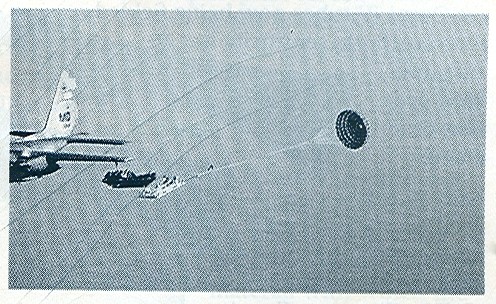

The new, 10-meter Rigid Inflatable Boat, now dropped from a C-130 transport (Photos), might someday touch down in the ocean in a Floatplane.
water's surface and the engines to avoid water ingestion, and the five- to six-foot draft they create allows straight-line loading and unloading of cargo up to 10 feet high through the rear ramp. Further, the official explained, "we're not encumbered by the floats. We can still drop our cargo from the rear of the plane while it's airborne, then land on water and retrieve the people and all of their equipment."
Tests show that the Floatplane's present configuration would allow it to operate in Sea State 3 conditions, he added.
Because it's a true amphibian, the Floatplane can back up to a beach or dock to take on, or off-load, cargo. It can also operate from land when outfitted for water operations, thanks to integral wheels in the floats. The floats themselves can be fitted on any C-130 in about a day, by mounting their struts in place of the aircraft's standard struts.
Not insignificantly, each float's size and composition would accommodate an 80-foot fiber-optic phased-array radar system.
The relatively low cost of acquiring the capability to temporarily convert a C-130 (including J models) to the floatplane configuration is likely to create widespread interest in the program. Non-recurring (one-time) program costs, principally for system integration validation, are expected to run about $25 million. The actual cost of the floats, struts, and other unique hardware probably will run between $5 million to $7 million per aircraft.
When Lockheed Martin and NAWC officials wrap up their Floatplane feasibility study in a few months, Special Operations Forces might be a stroke closer to acquiring a versatile, seafaring airplane. Its addition to their inventory would significantly expand the envelope of potential SOF missions, giving them a means to conduct operations they would have to pass up today.
Page 47 Armed Forces Journal INTERNATI0NAL July 1998
Imagine if a MC-130J Combat Talon III with ACLS, water floats or Pantobase skis landed and off-loaded a SF team in an ocean-swim capable M113A3 AmphiGavin! None of the pitfalls of playing around with air-inflated rubber boats and fickle gas-powered outboard motors that beset the Grenada invasion in 1983!
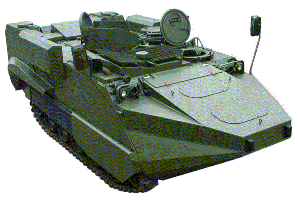
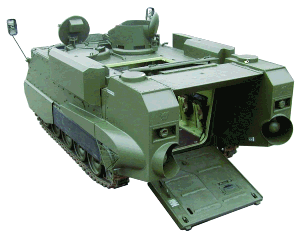
Details of the M113A3 AmphiGavin:
 youtube.com/watch?v=1hbUusptJbs
youtube.com/watch?v=1hbUusptJbs
If, for some reason the Combat Talon IIIs cannot land even if their adverse weather optics cannot see through dust/fog/darkness they would have improved Fulton Surface-to-Air (STAR) II recovery systems that could be dropped to a TEAM below. The author contacted its legendary inventor, Mr. Robert Fulton and he reported that his system able to recover up to 6 men at a time by balloon "snatch" by the Combat Talon-type aircraft and then reel in, is "ready to go". During the Cold War, successful missions were run by use of the Fulton STAR to recover agents in inhospitable areas where "helicopters couldn't land". The inability for helicopters to land takes place far more often than the public realizes as the recent food drops to Afghan earthquake survivors prove.
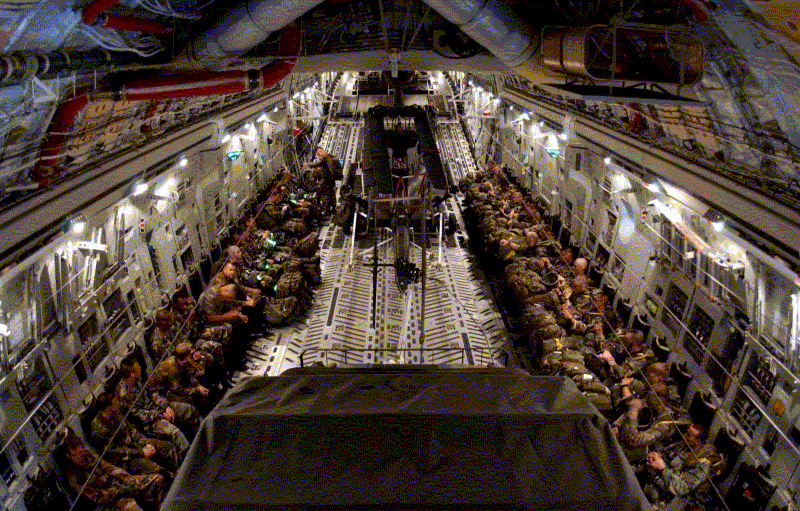
HELICOPTERS ARE STILL IMPORTANT!
Combat Talons and C-17 Globemaster IIIs can and should deliver primarily Army attack/transport helicopters to the fight whenever they cannot self-deploy. Little Birds or OH-58D Kiowa Warriors a pair at a time from C-130 type aircraft or in droves in the C-17 are possible ways to get "hip-pocket" close air support for missions. The leading outfit would be the Army's elite 160th Special Operations Aviation Regiment "Night Stalkers". U.S. Army Air Defense Artillery Avenger HMMWVs can be fitted with 2.75" Hydra-70mm rockets like SOF attack helicopters to act as a "ground spectre" for the Airborne/SOF force to do its mission, overcoming any ground resistance even in buildings. The plentiful M113A3 Gavin family of vehicles offer armored tracked vehicle fire support and shock action mobility. Then of course, there is the AC-130 "Spectre" itself, but in a close fight a ground fire support platform is the way to win.
We need the maximum amount of options to win, not just rely on tired formulas that are predictable.
Stagnant Hercules Design: ESTOL & Larger Fuselage Needed
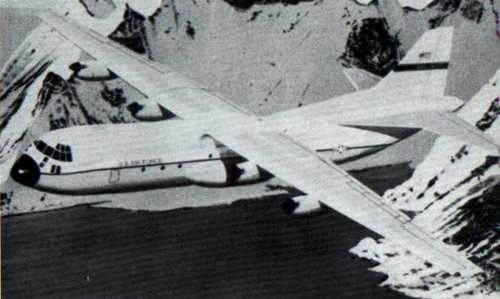
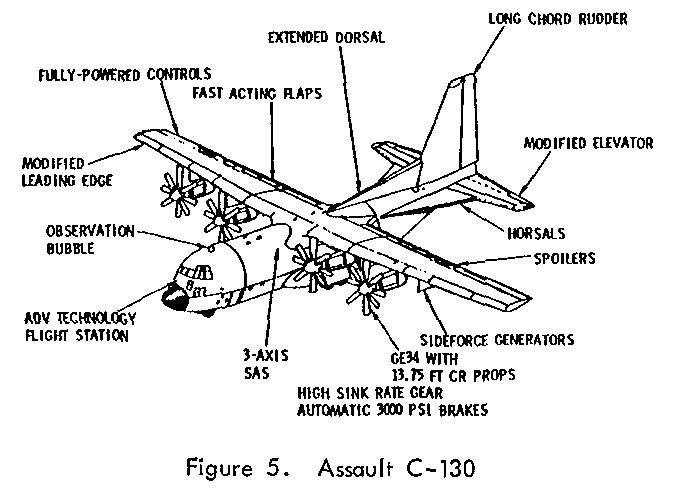
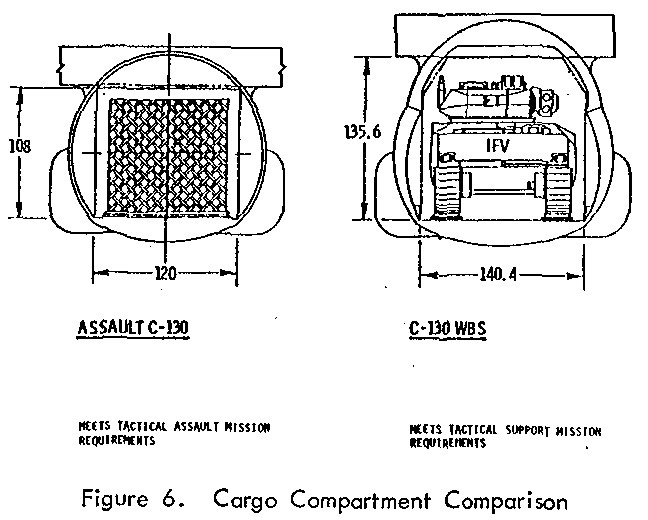
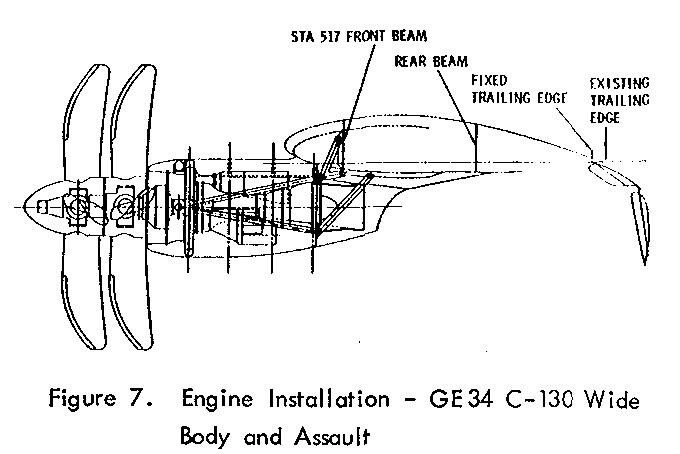
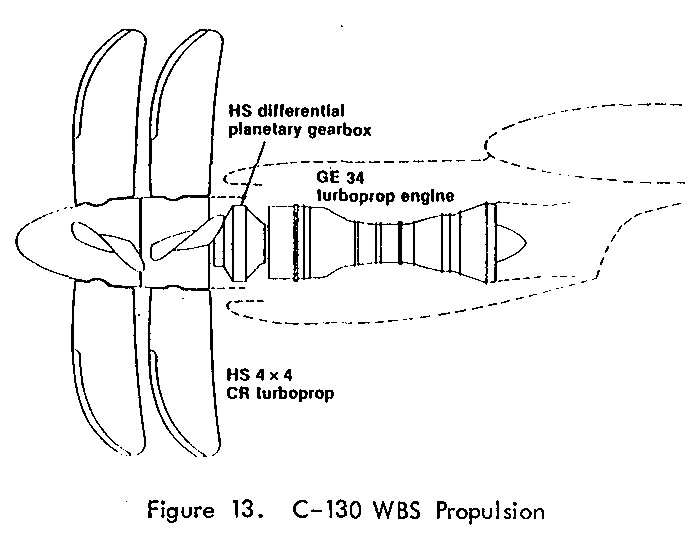
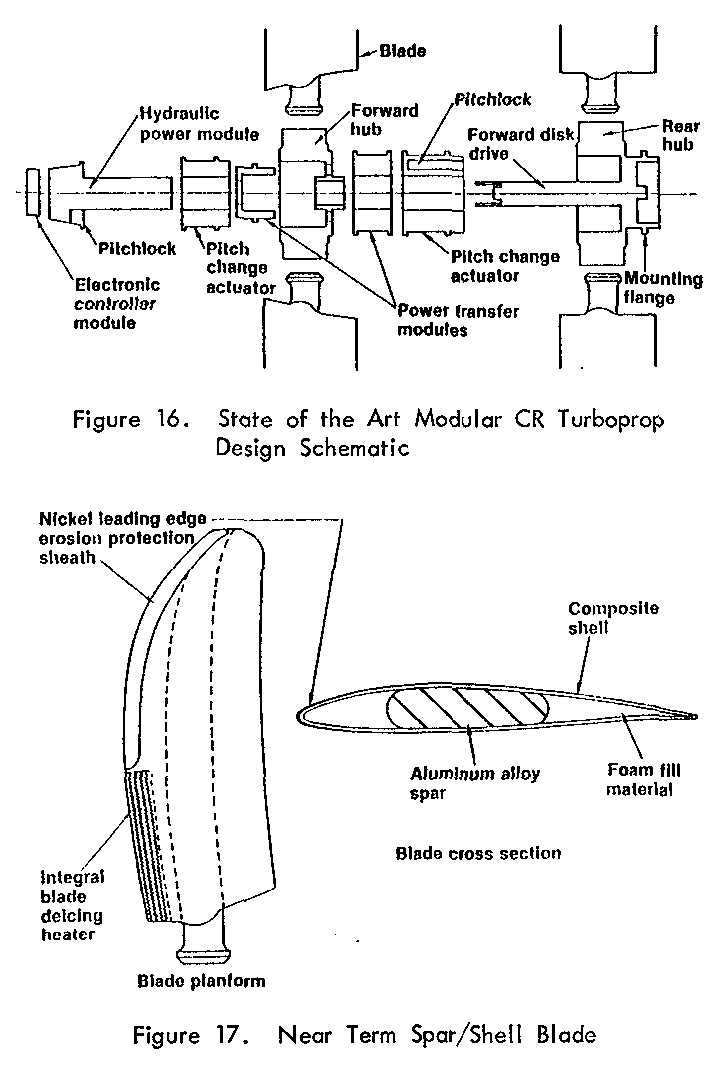
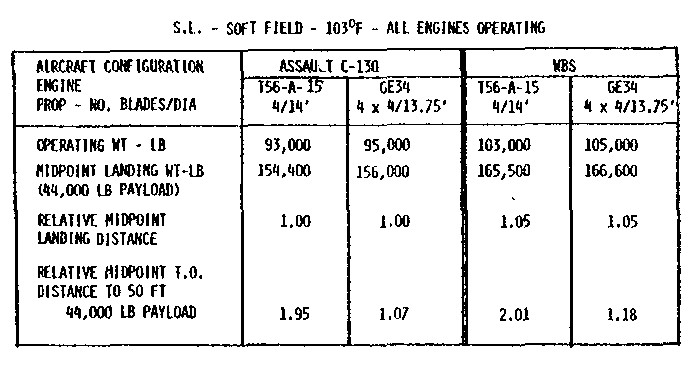
Wider-Body STOL C-130 with Contraprops
AIAA-84-2506
Near-Term Application of Modern Propulsion Technology to a Tactical Transport
D. M. Ryle Jr., Lockheed-Georgia Co., Marietta, GA;
F. W. Perkins, United Technologies Corp., Winsor Locks, CT;
and J. L. Eddy, General Electric Co., Cincinnati, OH
EXCERPT:
"Emerging requirements for new tactical transport aircraft [...] new battlefield scenarios. Two types of aircraft are visualized: the tactical assault and tactical support airlifters. Two C-130 derivatives [...] that are capable of providing a low-cost solution to these requirements. These aircraft incorporate modern propulsion technology to enhance field length and payload-range. [...]GE34 engines and the Hamilton Standard counter-rotating propellers."
With respect to the Assault C-130, the C-130 WBS cargo compartment is higher, wider, and longer. It is 135.6 inches (3.44m) high. 140.4 inches (3.57m) wide, and the cargo floor has been lengthened by 180 inches (4.5 m) to increase the number of standard pallets from five to seven. With this size, it can accommodate-with Standard clearances-such vehicles as the [Bradley] Infantry Fighting Vehicle, self-propelled howitzers, 5-ton truck and troops alongside, and various shop vans.
HTTB STOL C-130: Try Again, L-M Don't Quit
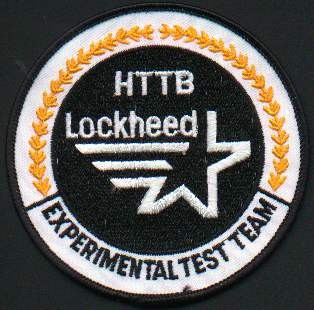
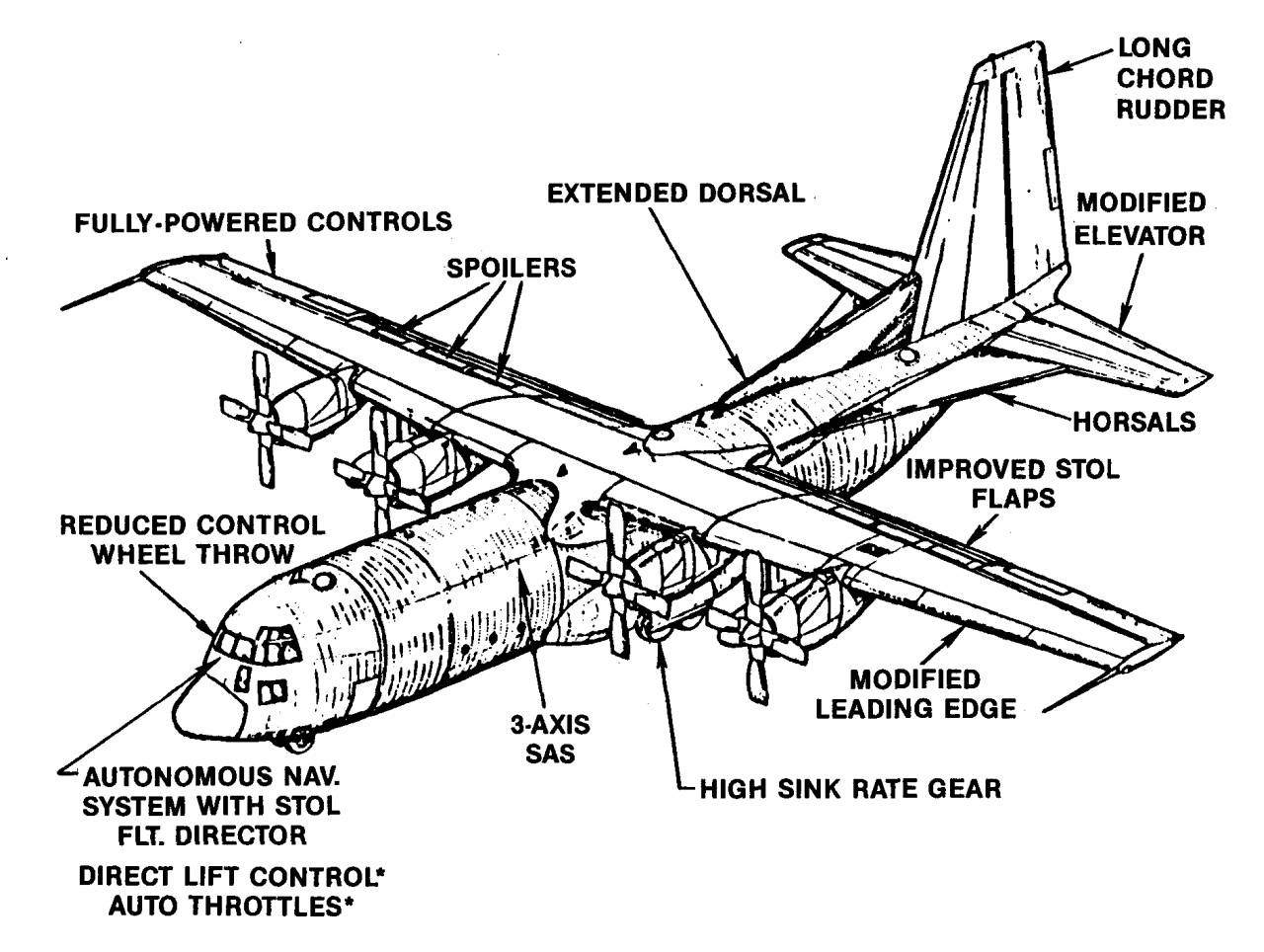
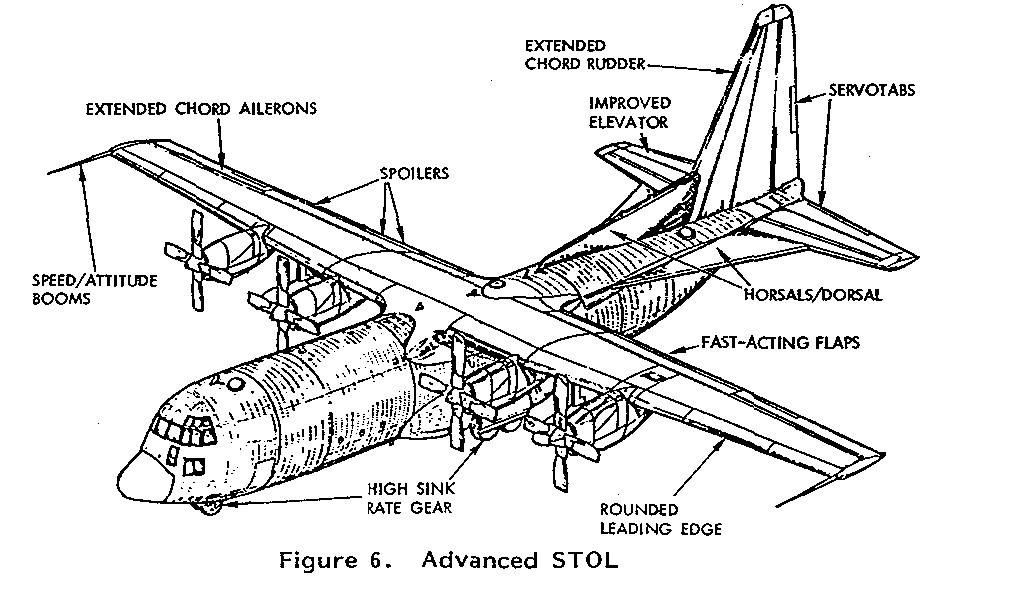
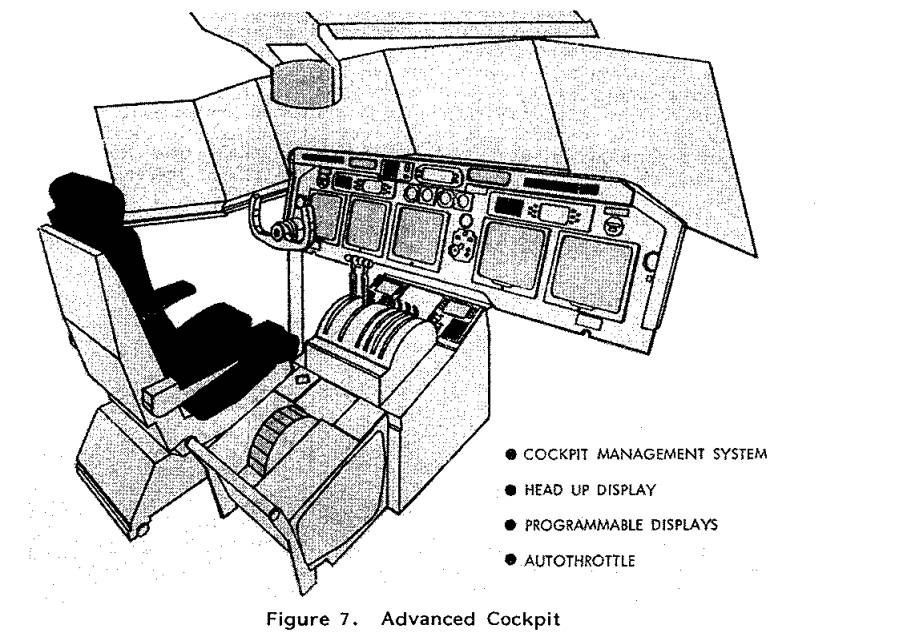
As a result of the Data gathered from the Credible Sport program, in February 1984 the High Technology Test Bed (HTTB) Program was initiated at Lockheed-Georgia. In June 1984 a L-100-20 N130X was modified as the HTTB. Some of the engineering and experience gained from the Credible Sport Phase 1,2 programs were incorporated into the design of the HTTB; i.e. enlarged ailerons Horsal (Horsals) fins, a dorsal fin and double slotted-flaps, and STOL telemetry and avionics instrumentation. Program involved adding major enhancements to an L382E-20 aircraft to develop Advanced Short-Takeoff-Landing (STOL), Survivability, Advanced Cockpit, and Electronics and NavCom Avionics technologies for future tactical cargo aircraft.?
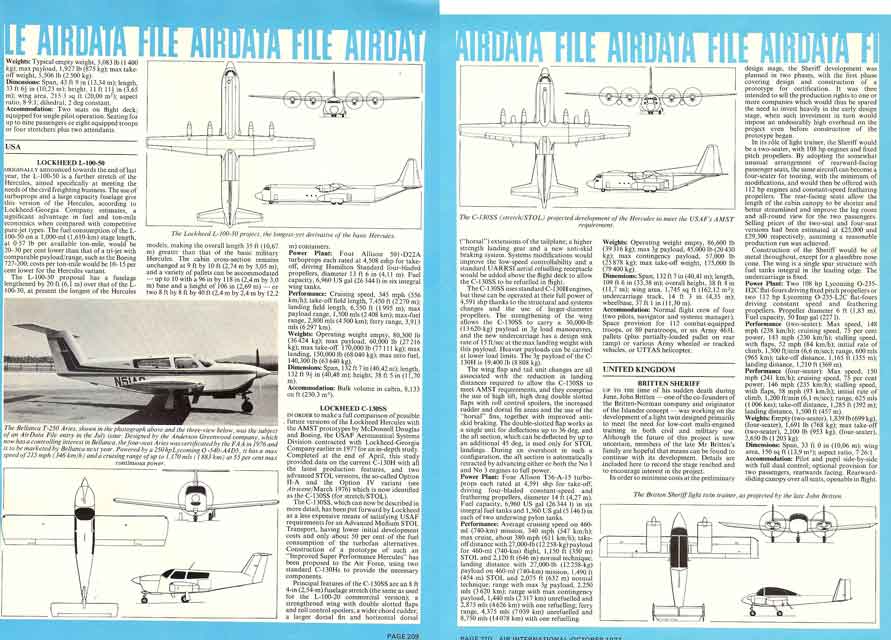
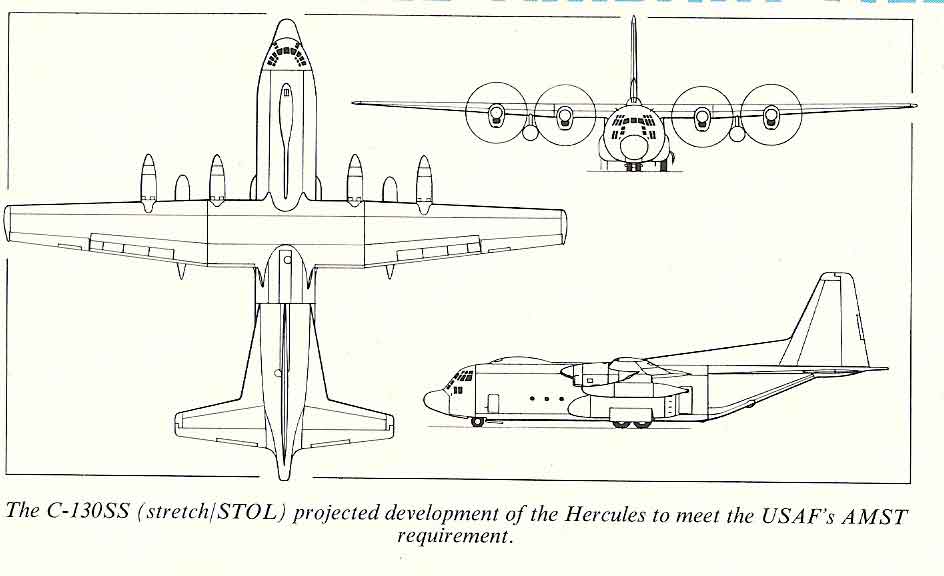
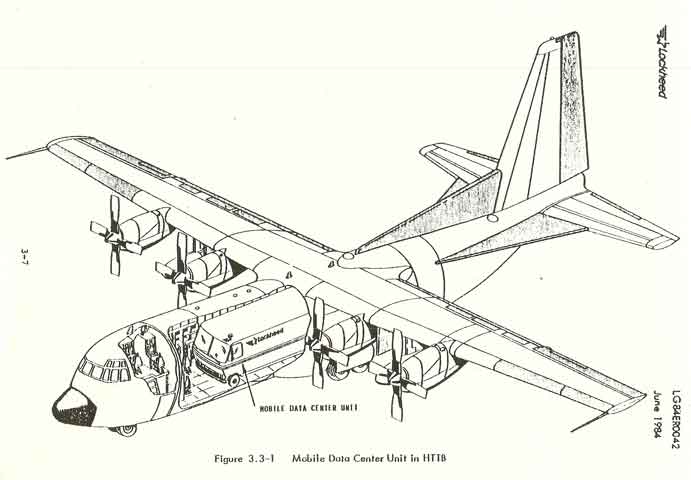
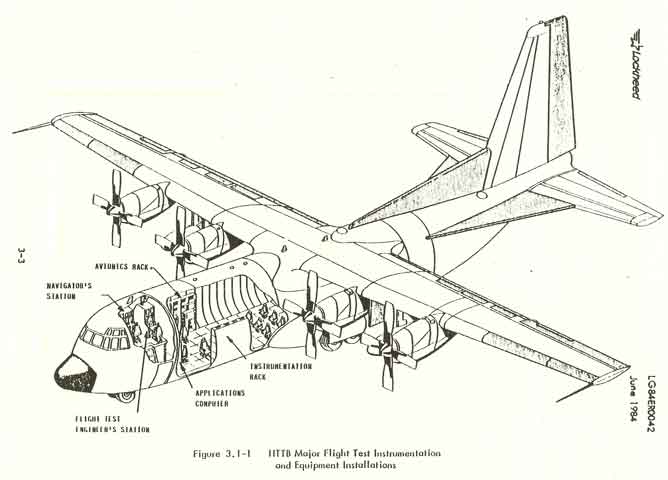
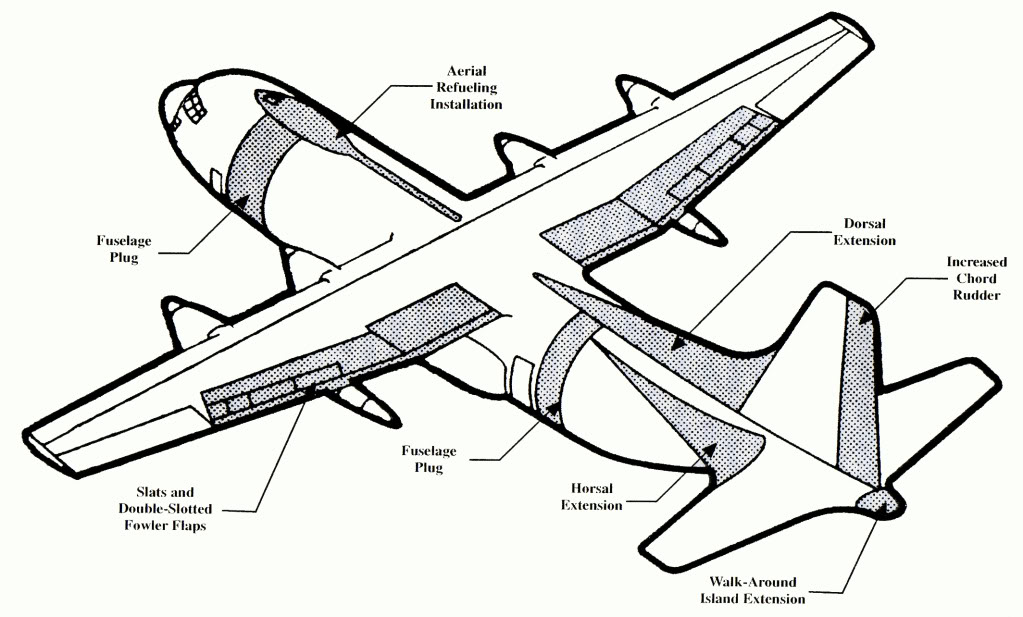
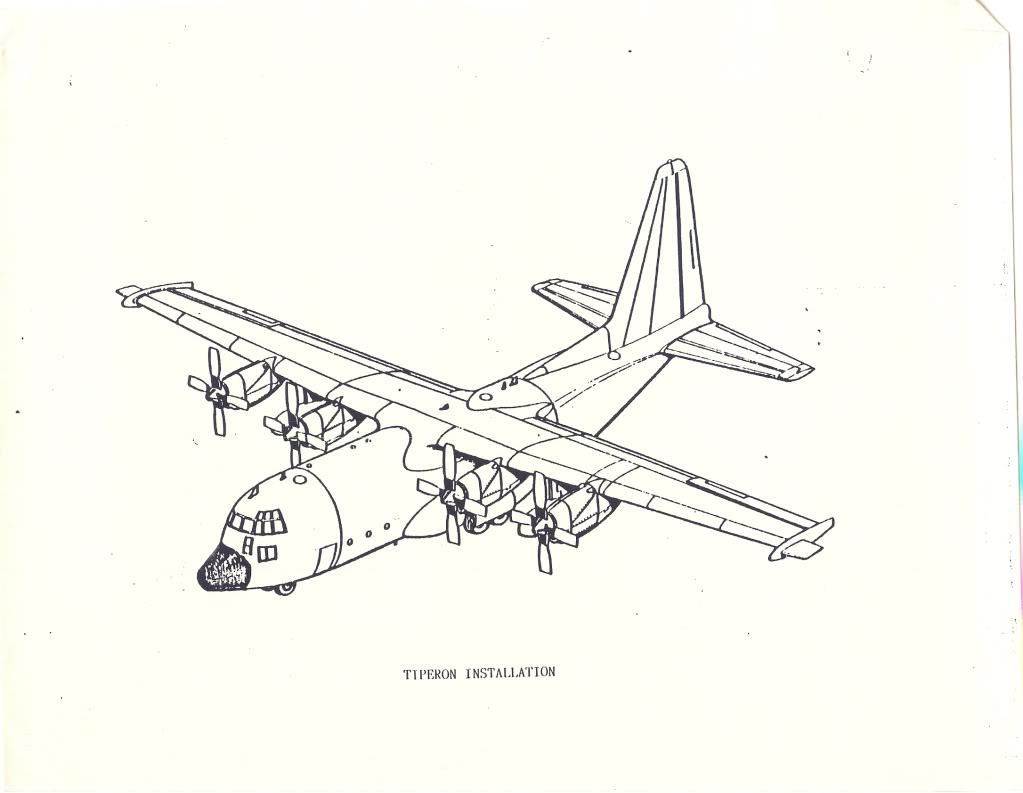
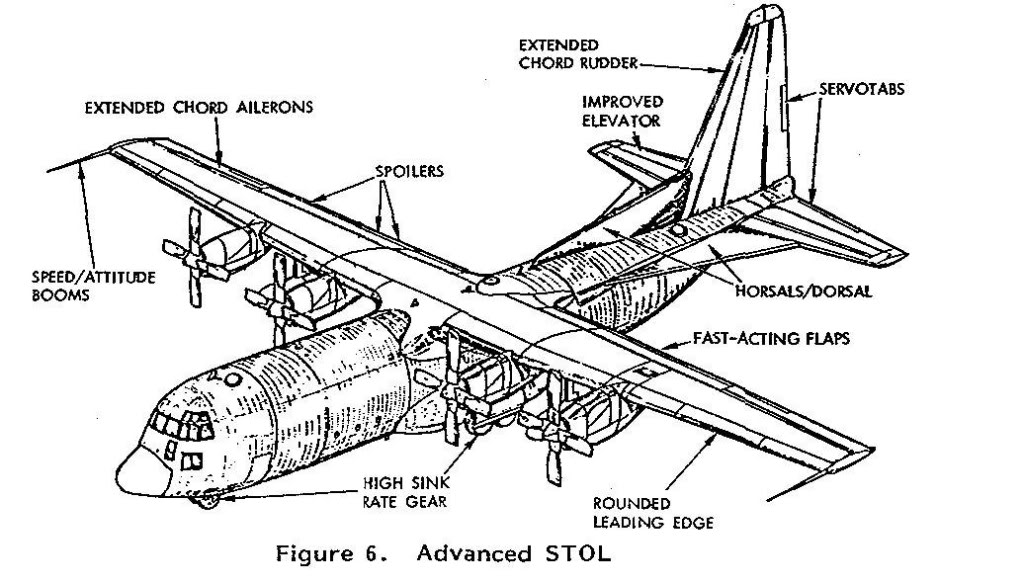
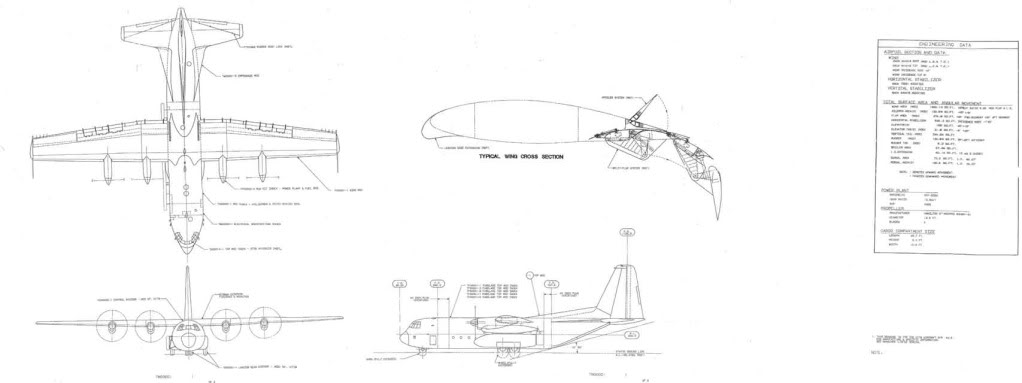
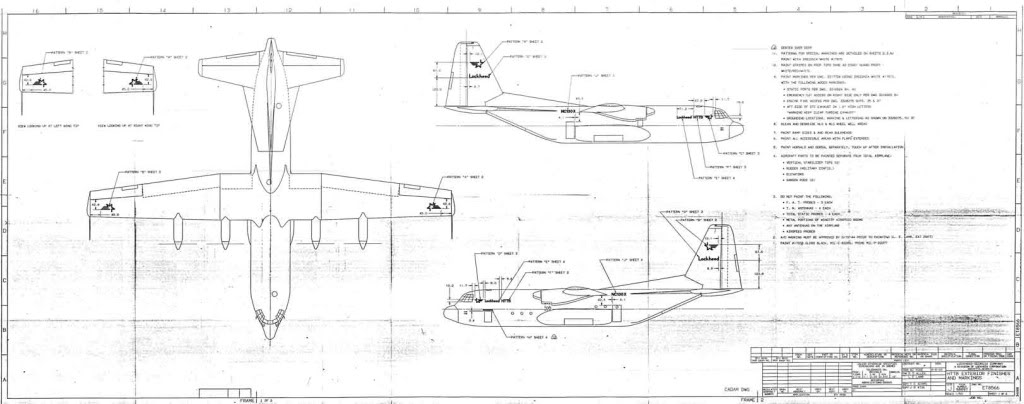



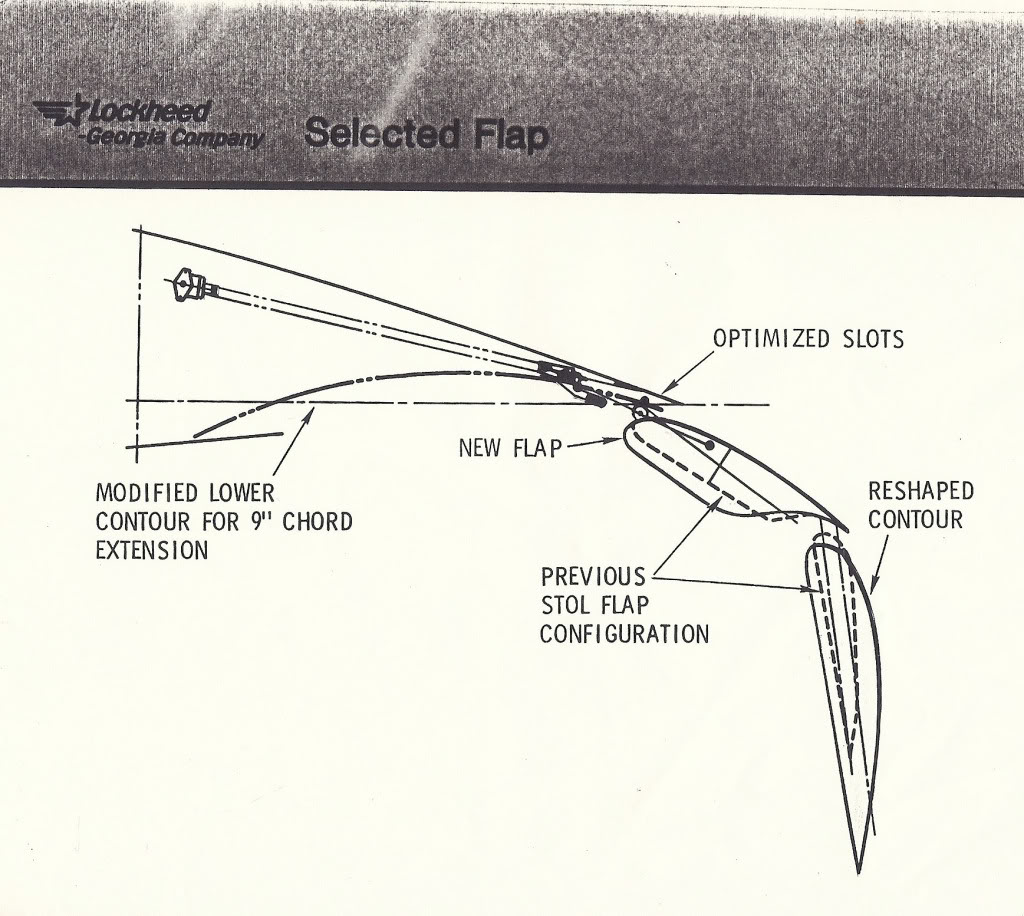
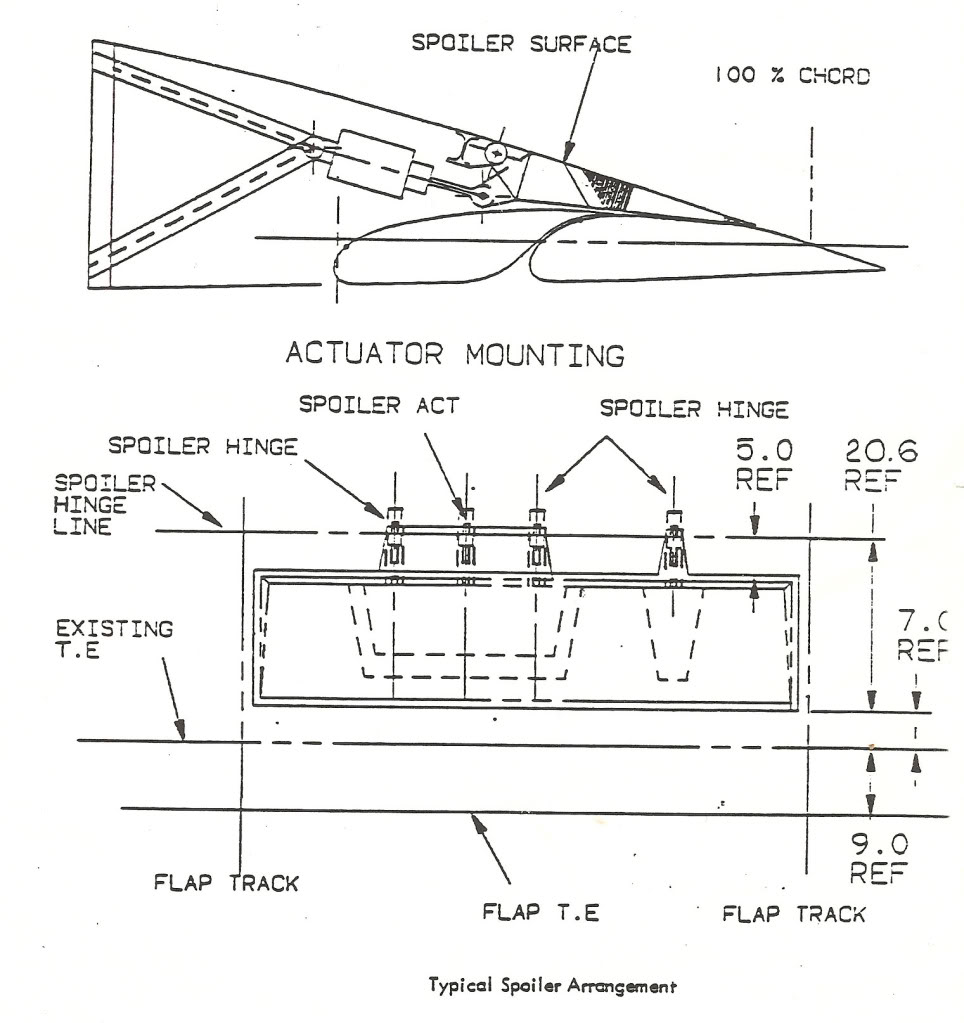


"Proposed roles for future tactical airlift drive requirements for research and development in the areas of advanced Short Takeoff and Landing (STOL), Electronic Systems, Survivability, and Advanced Cockpit capabilities. A common scenario may involve deep penetration into enemy territory with no air of ground support. The transport may be required to land on bomb damaged runways, highways, or dirt roads. Landing dispersion requirements may not exceed 1,500 feet with a 50 foot obstacle at the runway threshold. The aircraft may have to take on cargo in this area and get airborne again with the same runway requirement. Lockheed Aeronautical Systems Company began the High Technology Test Bed (HTTB), an Independent Research and Development (IRAD) program, in 1984 to address technologies required for these future tactical transports. The program utilizes a commercial, stretched C-130 transport as the technology focal point. This Flying Laboratory is an ideal platform for systems development. The aircraft is highly modified to perform the STOL mission and is fully instrumented with a real time data acquisition system. The HTTB undergoes modification spans followed by flight spans to evaluate systems performance."
On February 3, 1993 the HTTB Crashed at Dobbins AFB GA. During a high speed ground test run, it lifted off, veered left and crashed.
RESULT: L-M has given up.
WHAT'S NEEDED: L-M to take the $BILLIONS we pay them to get back on the horse and get us an improved ESTOL Herk.
CONCLUSION: BUILD THE COMBAT TALON III NOW!
Its clear the V-22 in AFSOC guise as the CV-22 is an "albatross" putting the entire future of Air Force Special Operations at risk. The proven C-130J should be upgraded into an Extremely Short Take-Off and Landing (ESTOL) platform for a Combat Talon III and possibly an AC-130V Spectre III. Another option would be an AC-17 gunship.
Armed escort should could from a small force of AFSOC owned and operated OA-10B Warthog IIs.
A penetration compound helicopter with Piasecki Vectored Thrust Ducted Propeller (VTDP) "Ring-Tails" should be purchased to be a MH-type "Pave Low V" using a CH/HH-47, CH-53X, S-92 or EH-101 as the baseline helicopter to do CSAR and extraction missions in concert with Combat Talon IIIs.
The above aircraft fleet will provide a bright future for AFSOC for many years to come.
In contrast, trying to make a single inferior V-22 aircraft type do the job of two optimized aircraft is a recipe for another set of Desert One-type fireballs in the desert from post-crash fire explosions.
UPDATE 2003: Air bases and fixed runways: invitation to disaster
So far we have made a compelling case for AFSOC to develop an ESTOL capable MC-130J Combat Talon III with special land anywhere gear. However, the entire USAF transport force is addicted to airlanding on smooth runways and air bases for their their air-filled rubber tires to roll. This means the Army Airborne will have to parachute in, fight and die seizing an airfield to subsidize their laziness. Deja Maleme airfield on Crete in 1941 over again! An Army Aviator writes:
USAF is not willing to go into Indian country with these precious commodities either. Strat air is always a critical asset and they are reluctant to use it for "high adventure." They are getting better though. They are now talking about landing C-17 at unimproved fields, although they won't define what this means (no O'Club). In fairness it is not all USAF. TRANSCOM really owns the aircraft and they are worse than the USAF."
"To be honest the biggest concern I have is that the enemy will realize what the OPFOR team has been doing for the last year to the air landing efforts. 'Cause the NTC OPFOR guys realize that the most likely place to score success against the U.S. is at the single weak point (airfield). A single bread truck with a 23mm x 2 triple A hidden in the back, in urban shanty town on the approach end of the runway, smeared a C-130 across the poor folks town. Got a triple benny: killed Americans, shot down Americans, burned the poor people out of their homes at the Americans expense. Next day they shot a BM-21 MRL in the hills at the fuel farm. They never fight us for the airfield directly, but they made it tough to use it. Bottom-line is that the bad guys can make it real hard to get onto the runway
C-17 SkyCrane delivers Gavin's KIWI Pods/BATTLEBOXes
 youtube.com/watch?v=XKeCVYTiIWg&feature=related
youtube.com/watch?v=XKeCVYTiIWg&feature=related
If AFSOC can develop ESTOL capabilities, then these devices could be fitted to the rest of the USAF's C-130s and C-17s to enable them to land on places OTHER THAN PREDICTABLE RUNWAYS. This would enable Army Airborne planners to select many potential, unpredictable locations to seize an assault landing zone, avoiding enemy air and ground defenses. Then---if commanders want they can take an airfield by ground assault using the assembled Airborne Air-Mechanized forces. Legendary war historian and combat veteran Ralph Zumbro writes:
Back in 1944, the Japanese in New Guinea were
building a remote airstrip and as soon as it was
aircraft capable, the engineers, who had NO infantry
security saw several dozen transport aircraft coming
in and put out the welcome mat. The aircraft were
DC-3s full of American infantry.
We can simply be creative, use any level piece of
land to bring in an AirMech TF to seize the larger
airfield with a quick overland march. Where is the
problem."
"A couple of years ago, at the NTC, I had a short
conversation with Donn Starry, on the subject of
Air-Mech. The general said. 'Offset your airhead, it's
vulnerable.' So, we have C-130s that can put upgraded
M-113 combat systems on country roads...Airhead offset
done, no problem.
Clearly, the time has come for the USAF to start landing and operating away from paved runways and comfy air bases.
Will they accept this challenge, or will a lot of brave Americans have to die to force them?
UPDATE 2008: NON-LINEAR MANEUVER BRIGADE PROPOSAL
1st TSG (A) proposal to USSOCOM to get special air/ground maneuver capabilities to prevail on 4GW non-linear battlefields.
MC-130 Combat Talon III GyroCopter for V/TOL SeaBasing & Air-Mech-Strike

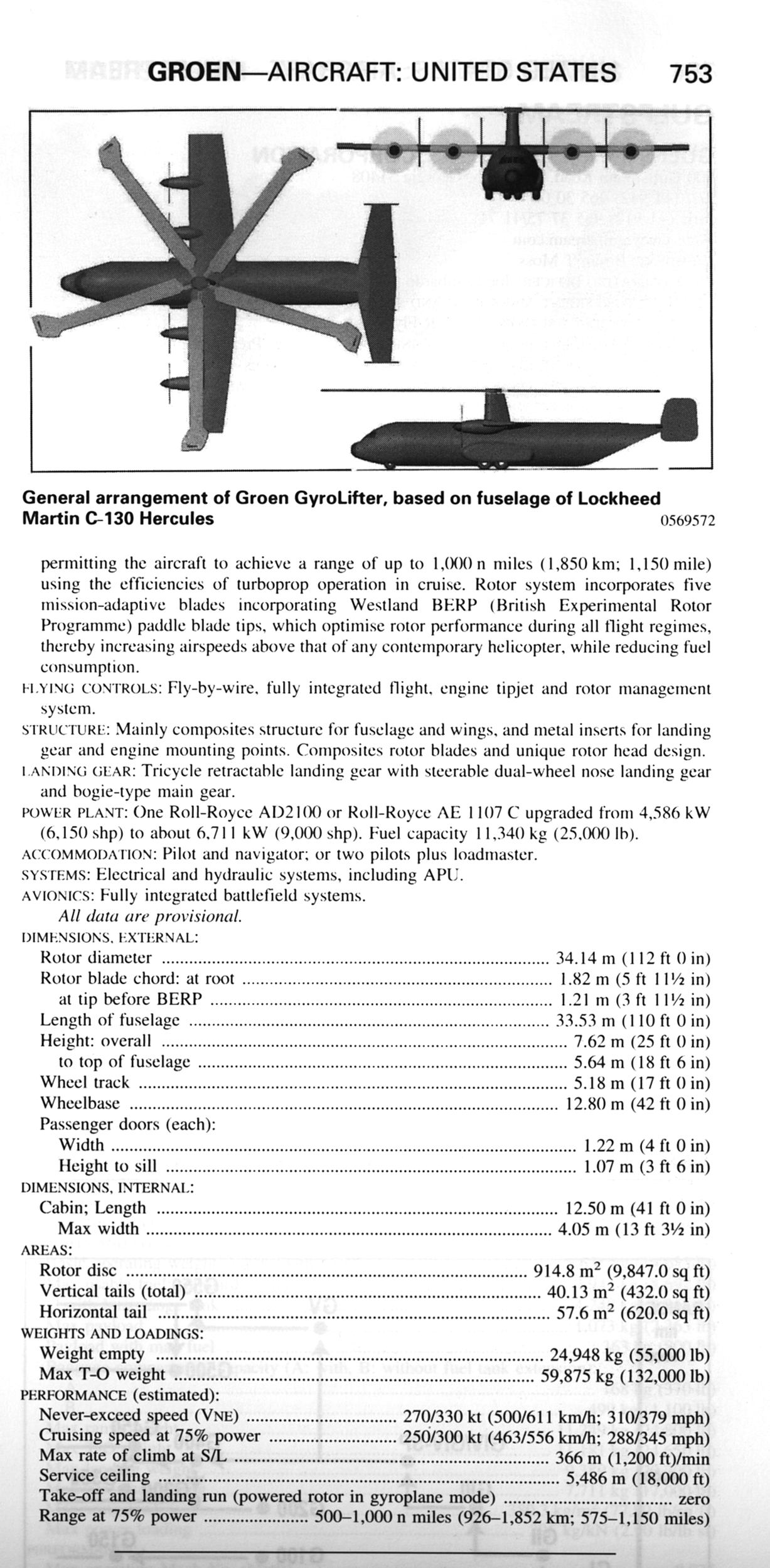


LINKS
Groen Brothers Aviation
www.groenbros.com/tech/crnt_tech.htm
Giant Heavy-Lifting Gyroplanes: June 2004 Cover Story...
www.popularmechanics.com/science/ aviation/2004/6/giant_gyros/print.phtml
DoD's SeaBasing and the 1st TSG (A)'s NLMB concepts need a 10-20 ton cargo transport that can operate from ships and deliver troops to operate ground combat vehicles to the cargo ships that carry them. One way to fully develop the C-130 would be to give it good-enough V/TOL capabilities without the mechanical headaches of being a powered helicopter using the gyrocopter technologies proven by the Fairey RotoDyne. V/TOL would simplify landing in water alongside cargo ships to watertighting the fuselage and having wing pontoons for stability perhaps with Pantobase skis. SpecOps, C/SAR and ASW missions also become new possibilities for a C-130 Gyrodyne seaplane.
Scott Miller writes:
"I'd like to expand on that a little on the C-130 Gyrodyne (GD) concept to demonstrate just how good this system would be to have. The C-130 Gyrodyne would use all the fundamental systems of the existing C-130 but would also possess a large rotor above the wing to provide for V/TOL as well as limited hovering capability. The tail would also be modified to accommodate for the large rotor. In terms of fuselage dimensions, the C-130 offers greater internal capacity in a package similar in overall length to the current CH-53E but with a much larger rotor and wingspan.The C-130J flies at 400 mph...critics of the C-130GD might say adding rotors for V/TOL would cut that speed in half.
Says who?
There is nothing stopping us from REMOVING THE ROTORS from the C-130GD with the only drag penalty being the rotor mast and extra tails and flying the C-130 as a regular fixed-wing airplane when crossing great distances like oceans at a 350+ mph speeds and 2,000 mile ranges. The rotors themselves can be stowed on top of the fuselage during fixed-wing flight. Add in-flight refueling capability and your range is indefinite. Once the C-130GD (- rotors) lands, it can then be refitted with its rotors for V/TOL tactical operations to be a C-130GD+ again.
Should we decide to fully develop this aircraft, we will be able to define a true Air Assault Company and Airborne Artillery Battery that will reside in each battalion of up to four BCTs or Airborne/Air Assault Groups depending on your force structure preference.
The Air Assault Company would feature 14 x C-130GDs in total. Three aircraft will each carry one platoon of leg infantry trained in both airborne and air assault roles. These will be conventionally armed infantrymen with the C-130GD serving as primary transport and support system. The heavy weapons platoon will consist of 6 x C-130GDs with four carrying IFVLs with 25mm autocannon turrets and/or Buford AGS light tanks with 105-120mm main guns and two carrying M113 Gavin MTVL armed with 106mm RR and infantry dismount squads. Two C-130GD will carry XM1108 Tracked Support Vehicles (TSVs) to meet tactical resupply needs. One C-130GD carries the HQ element while two additional GD provide logistics support. The Airborne Artillery Battalion replaces a conventional FA battalion with 18 AC-130GDs formed in 6-ship batteries. With this structure, each BCT/AAAG would require 74 x C-130GDs. With a proposed fleet of 400 of these versatile aircraft, an additional 104 aircraft will be available to support training, Special Operations, and logistics missions for the remainder of the Army.
The use of gyrodynes makes these units both strategically and tactically mobile. No airfields or runways are required - these units can pick-up and go anywhere at any time. A limited hovering capability gives the unit a traditional air assault capability in addition to being able to parachute in. These units also form a complete combined arms team, featuring a large quantity of conventional infantry, high-powered direct-fire systems, and airborne indirect fire systems. This unit can be fought in a variety of manners.
In a conventional force on force conflict, this unit can be used in two roles. First it would serve as the lead element of deployment. When the conflict originates, these units can be deployed very rapidly in advance of the larger force that will ultimately be deployed. With Air Force expeditionary units clearing the skies, these elements can operate effectively against most types of potential enemies due to its very high level of tactical speed and mobility. As the main force enters the theater, these units can transition to heading off enemy incursions, encircling the enemy with its V/TOL mobility, or providing security for the larger force including conducting search and rescue operations.
This force is also quite capable in a forced-entry role in that it can insert either through parachute drop or a combination of air assault and LVAD to rapidly get a light tracked armored force on the ground with effective weaponry and fire support. Against more capable adversaries, this approach can be used to seize airheads or seaports for insertion of follow-on forces. Against lesser opponents, this unit along with it's respective ABN-AASLTG or BCT would likely be sufficient for completion of the operation.
In Low-Intensity Conflicts, these airborne units can truly take advantage of the capabilities of the gyrodynes. In particular, the capabilities of the GDs allow for keeping some elements of the unit in a constant loitering position while the armored vehicles remain prepared to fly out when needed. In the proposed configuration of four battalions per BCT/ABN-AASLTG with one AAC per battalion and three 6-gunship Airborne Artillery Batteries, two platoons of infantry and two gunships can remain in constant loiter just about indefinitely as elements would rotate every four hours with the remaining 20 hours of the day as downtime. The armored elements would remain on stand-by. With this approach, units can physically engage the enemy in under an hour, anywhere within 200 miles of their base of operations with full combined arms force. The remaining units of the BCT/ABN-AASLTG can engage in traditional operations such as patrolling and security freeing the AACs and AABs to engage targets of opportunity and to respond to any actionable intelligence.
In peacekeeping and humanitarian operations, the AAC/AAB serves as a heavy security element protecting the remainder of the BCT/ABN-AASLTG that is free to use its substantial manpower resources to carry out the primary mission on the ground. The available C-130GDs can deliver large quantities of aid over very long range using its V/TOL capabilities to avoid the need for an available airport. The aircraft can also pick up materials from ships at sea and deliver the supplies hundreds of miles without refueling.
Currently, there are over 1000 x C-130s in service or storage that are available to support this effort. In addition, there are 1000s of M113 Gavins available for outfitting the ground elements. These assets and units should be used as an interim capability until better alternatives become available in the future. Obviously, a C-130GD is not an ideal long-term solution to meeting these needs as it is quite large and very heavy, in addition to being expensive, for serving in this role. The GD models should be built as remanufactured C-130s (all aircraft rebuilt to a common format) while the MTVL and TSV variants are constructed from existing M113 Gavins. This allows for the units to become reality at the lowest possible costs and in the fastest timeframe. With the amount of money we spend on defense every year, there is no reason whatsoever that we couldn't have this project completed in under two years. If the powers that be view this as violating the KWA, fine - turn these into joint units with the Air Force manning the aircraft. This unit isn't going to beat China in a conventional conflict but if we are serious about taking out the Bin Ladens and Zarqawis of the world, this is the level of capability that is going to be required to get the job done."
NEXT HERCULES?
What will the next Herk be like?
www.w54.biz/showthread.php?308-STOL-Aircraft/page2
Slipping Through the Net
SOCOM Seeks New Airlifter To Penetrate Advanced Defenses
By JOHN REED
Published: 14 June 2010Despite U.S. Special Operations Command's push to replace its decades-old aircraft fleet with new versions of old designs, clandestine operations likely will require a new airframe to perform covert infiltrations in the face of 21st century air defenses.
To this end, top special operations officials are starting to flesh out what such a craft will look like. While the current fleet of special ops airframes is derived from venerable troop transport planes and helicopters designed in the mid- to late 20th century, such as the C-130 Hercules and CH-47 Chinook, a custom-designed aircraft built for delivering troops on clandestine missions may become necessary, said Michael Vickers, U.S. assistant secretary of defense for special operations, said earlier this year.
The reason, he said, is the rise in advanced air defense systems being developed and sold by Russia and China to nations throughout the world. These systems are capable of defeating all but the latest in stealth technology.
The Pentagon's 2006 Quadrennial Defense Review (QDR) emphasized expanding the number of special operations ground troops, and the 2010 QDR called for a corresponding buildup in special ops airlifters. However, the 2006 document only focused on replacing the decades-old MC-130E and P fleet of airlifters with the new J-model MC-130 to fly under enemy radar and deliver special operations troops to clandestine location.
While these planes feature terrain-following radar and advanced countermeasures, they have a fundamentally unstealthy design dating to the 1950s. The Pentagon will likely look "pretty hard" at this issue in the 2014 QDR, according to Vickers, who acknowledged that such an aircraft would be expensive.
One expert, however, said the command will have a difficult time securing the massive funding needed to develop a special ops-specific stealth airlifter.
SOCOM "is purchasing smaller aircraft to fly low and stealthy, and unless they get a whole lot of development cash for an all-new airplane, that's probably the way to go," said Richard Aboulafia, an analyst with Teal Group, Fairfax, Va. "In terms of actually buying some super-secret, penetrating, stealth transport, that's where the budget just runs out."

The command historically has relied on existing technology, both military and civilian, and investing in high-tech modifications to customize it for demanding missions, rather than pouring millions or billions of dollars into developing special ops-specific aircraft.
SOCOM has "never been able to fund their own SOCOM-specific airplane," Aboulafia said. "The idea of starting with something that would be extremely expensive to develop, that's unlikely."
Aboulafia pointed out that in the past few years, Air Force Special Operations Command (AFSOC), the U.S. Air Force's contribution to SOCOM, has begun investing heavily in small single- and twin-engine planes, sometimes painted in civilian livery such as the Pilatus PC-12. These aircraft are being purchased to deliver special operations troops around the world without drawing the attention that the four-engine C-130 would garner.
In many cases, these aircraft, some of which are based on old Soviet designs such as the Polish-built M28 Skytruck, can be parked on foreign airport ramps without giving away the U.S. presence, according to AFSOC officials. The command has even contemplated buying twin-engine de Havilland Canada Dash-8 turboprops to haul troops around the world. http://en.wikipedia.org/wiki/Bombardier_Dash_8
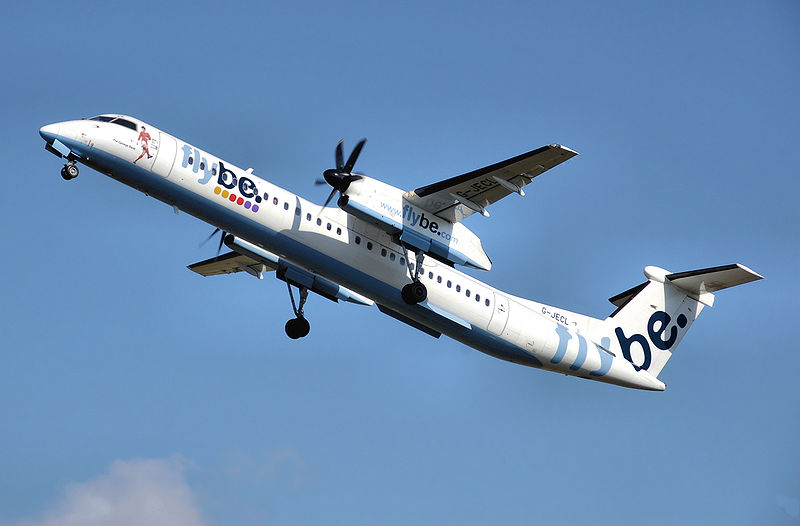
"Following an incident at
Copenhagen Airport, October 27, 2007, Scandinavian Airlines' executive board decided to permanently remove its entire Q-400 fleet from service. In a press release on October 28, 2007, the company's president said: "Confidence in the Q400 has diminished considerably and our customers are becoming increasingly doubtful about flying in this type of aircraft. Accordingly, with the Board of Directors' approval, I have decided to immediately remove Dash 8 Q400 aircraft from service."The [NON-STOL] Dash-8 style aircraft could be used to transport special ops troops and gear to a main staging area in far-off regions, while the smaller planes could fly the troops on missions into primitive airstrips or through sensitive airspace under what AFSOC officials have described as a hub-and-spoke system.
Using such small aircraft while developing more advanced tactics to evade radars will likely be the key to overcoming enemy defenses while slipping special operations troops into unfriendly countries.
"In the littoral area, that's why we have SEAL delivery systems; inland, well, you'll just have to find ways to fly below the radar or between gaps in coverage," the analyst said.
One possible alternative would be for the command to partner with the Air Force to develop a new generation of stealthy transport aircraft, similar to the way it did with the V-22 Osprey, used by the U.S. marine corps and AFSOC, Aboulafia suggested.
Still, "I'm not so sure why the Air Force would pay for that," he added.
E-mail:
jreed@defensenews.comAres
A Defense Technology Blog
Patent Lifts Veil on Boeing's Speed Agile

Posted by Graham Warwick at 7/2/2010 9:02 AM CDT
I am researching something on future airlifters and wanted artwork on the stealthy super-STOL tactical transport Boeing wind-tunnel tested under the U.S. Air Force Research Laboratory's Speed Agile program. I asked Boeing if they had a releasable image. No, they said. I asked AFRL. No, said they. So there I was passing the time browsing the U.S. Patent and Trademark Office website and what do I find but this:

Speed Agile involved low- and high-speed wind-tunnel tests of a stealthy airlifter concept that could take off in 1,500ft and cruise at Mach 0.8. Usually STOL aircraft aren't that fast. Boeing's design achieves this "speed agility" using a "propulsive wing" - engines embedded in the wing exhaust through slots at the trailing edge to provide lift as well as thrust.

Source: USPTO
Speed Agile is part of studies into a potential C-130 replacement once called AMC-X, then the Advanced Joint Air Combat System (AJACS), but now morphed into the Air Force/Army Joint Future Heavy Lift. AFRL says Lockheed Martin is now building models of its design for low- and high-speed wind-tunnel testing. Lockheed has previously shown what could be their Speed Agile concept.

The Speed Agile concept has been around for a while and utilizes exhaust from a turbine that provides thrust to also reenergize the airflow over the wing to provide enhanced lift by the wing. In this case positioning the engine above the wing and the exhausts onto the trailing edge of the wing. This is application is perhaps best known in the An-72/74 Cheburashka (NATO: COALER) STOL aircraft.
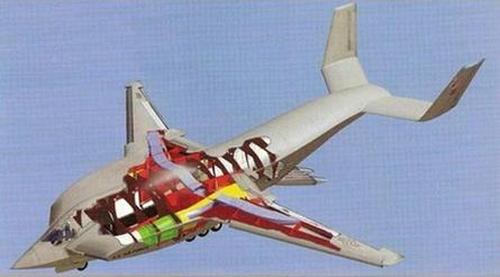
Lockheed-Martin's Stealth Hercules Proposal
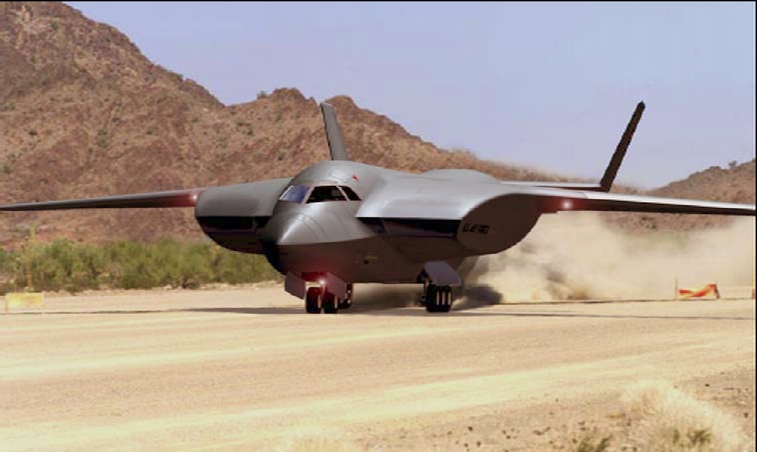
Analysis
These articles are alarming.
It describes an AFSOC that really doesn't want to do it's job of airdropping and STOL landing SOF units in favor of a taxi-service to predictable airfields using non-STOL DASH-8s. If the USAF doesn't want to get its shirts dirty, SOF flying should be done by the U.S. Army with planes like the C-27J that can not only do airdrop and STOL, but can be configured to do ESTOL. Greedy defense contractors will build whatever crap the milicrats tell them to build.
AFSOC should be developing an air-cushion landing gear C-130--a Combat Talon III--not lusting for an unaffordable stealth Hercules or wimping-out and running a commuter airline overseas that at best positions mere foot-sloggers around the battlefield where they can be surrounded and Blackhawk Downed! to death by AK47s (AKMs) and RPGs. The CIA did a better, covert job at this in Vietnam with Air America. And they did it with airdrop and STOL capability to "spoke" villages in the jungle with tiny airstrips. What SOF needs is an ACLS transporter that delivers them in stealth light tanks so they can perform missions with OVERMATCH.
Combat Talon II crew receives Mackay Trophy
by Master Sgt. Merrie Schilter-Lowe
Air Force Special Operations Command Public Affairs
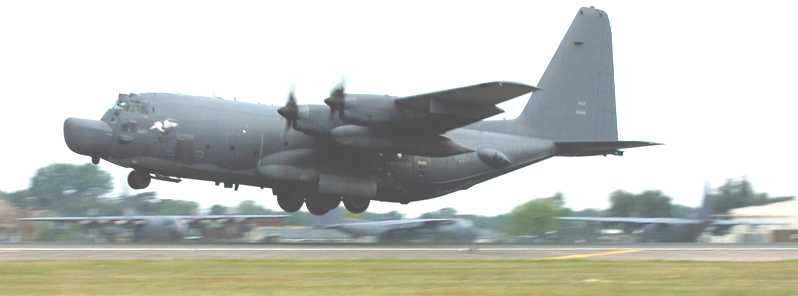
HURLBURT FIELD, Fla. (AFNS) -- An Air Force Special Operations Command
A MC-130H Combat Talon II crew will receive the Mackay Trophy for rescuing 56 people from destruction and civil war in the Republic of the Congo last year.
The crew, assigned to the 352nd Special Operations Group at Royal Air Force Base Mildenhall, England, also delivered 12 Army and Navy special forces personnel to survey and assess the situation in the capital city of Brazzaville after fighting broke out between rival political factions.
The National Aeronautic Association presents the Mackay Trophy annually to the Air Force member, crew or organization that made the most meritorious flight of the year. This is the sixth time that a special operations crew has earned the Mackay Trophy, established by Clarence H. Mackay, a former industrialist, philanthropist and aviation enthusiast.
The Talon II crew's June 1997 mission took more than 21 hours and three in-flight refuelings to retrieve the 30 Americans, 26 foreign nationals and a dog, held by an adolescent boy. The violence eventually destroyed both Brazzaville and the infrastructure of the Congo, said Pentagon officials.
Crew members included Lt. Col. Frank J. Kisner, mission commander; Maj. (Dr.) Robert S. Michaelson, flight surgeon; Capt. John C. Baker, pilot; Capt. Reed Foster, aircraft commander; Capt. Mark J. Ramsey, electronic warfare officer; Capt. Robert P. Toth, navigator; Master Sgt. Gordon H. Scott and Tech. Sgt. Tom L. Baker, loadmasters; Staff Sgt. John H. Hensdill, direct support operator; and Staff Sgt. Jeffrey A. Hoyt, flight engineer. Since the mission, Ramsey has been reassigned to AFSOC headquarters at Hurlburt Field and Hensdill is now at Davis-Monthan Air Force Base, Ariz.
Also aboard the MC-130, but not part of the Talon II crew, were: Capt. Bill Collins, and Senior Airmen Eric Nielsen and Dave Risnear, special tactics team; Capt. Ben Jones, logistics planner; Staff Sgt. John McAlister, dedicated crew chief; Senior Airman Bryan Zdancewicz, turbo-prop specialist; and Airmen 1st Class Ernest Burghardt and Mark Evans, security forces. These individuals contributed much to the mission's success, said Kisner during a telephone interview from Mildenhall.
"Without the professionalism of all involved, this mission would not have succeeded. This was truly a team effort," Kisner said.
"If there's a down side to getting this award, it's the fact that the (non-aircrew members) were left out," said Scott, who is also still at Mildenhall. "The STS guys did as much as we did. They also helped the European survey and assessment team get set up and then made sure we were cleared to depart Brazzaville."
The security forces airmen also did an outstanding job, said Kisner. "They were recalled in the middle of the night and deployed with us to Germany, Brazzaville and Libreville, Gabon. The mission was their introduction to AFSOC and their first ride on an Air Force aircraft."
Kisner said besides their normal duties, the airmen helped man the ADHOC command post at Libreville.
Ramsey, the electronic warfare officer on the mission, also had high praise for the 100th Air Refueling Wing at Mildenhall. "Getting refueled was a long, slow process and those guys stayed with us all the way," he said. Ramsey explained that because the MC-130 was carrying 116 percent of its gross maximum weight, each refueling took more than two hours of precise formation flying.
The mission began June 9 when two MC-130H aircraft from the 7th Special Operations Squadron flew from Mildenhall to Stuttgart Army Airfield in Germany.
As the situation in Brazzaville deteriorated, Special Operations Command Europe prepared to send additional forces to augment the small marine security detachment already at the American Embassy. By June 10, the plan changed. Only one MC-130H would travel to Brazzaville.
The aircraft departed with 30 people, two heavy, high-mobility multiwheel vehicles, fuel and other equipment. The extra weight and slow speed of the Talon II meant refueling had to be done at a descending angle so the MC-130 could keep pace with the KC-135 tankers, said Toth. As navigator, it was Toth's job to calculate how much fuel was needed as well as map out the route.
By the time the MC-130 reached the airport at Brazzaville, the crew had about 20 minutes to off-load the vehicles, ESAT team and their equipment, board the evacuees and depart the area. Hostile gunfire near the control tower delayed the first attempt to land. As time passed, officials in Germany left it up to the crew to decide if they wanted to risk another try. "There was no question in anyone's mind," said Foster, the aircraft commander who performed the actual landing. "There were people down there, some of them Americans, who needed our help. It took maybe a second to make up our minds."
As the MC-130 came around the mountains north of the airfield, French ground forces in charge of securing the control tower diverted the aircraft toward a concrete building at the opposite end of the airfield. As it turned out, the evacuees were laying face down in the building for safety.
One of the female evacuees later told Ramsey, "When I saw you coming around the mountain, I just knew you had to be Americans. It was just everything I could do not to jump up and cheer, 'We're saved!'"
"It really meant a lot to the Americans to be rescued by Americans," said Ramsey.
The MC-130 was only on the ground about 23 minutes. While the ESAT team off-loaded, every available person helped to reconfigure the aircraft to take on passengers. The crew had been told to expect 40 people.
Meanwhile, the French forces formed a human wall around the evacuees and walked them to the Talon II. Toth, who was in the rear helping evacuees get on the aircraft, noticed that about 16 other evacuees were headed back to the building. "I asked where they were going and the guy in charge said, 'You can only take 40 people, there's 40 on the airplane," Toth recalled.
Toth remembers saying, "'No. We're taking everyone. We're not leaving anyone behind.' No one argued."
The crew laid bulletproof mats on the floor for the second group of passengers and made sure they had something to hold on to. "Then we got out as soon as we were cleared," said Toth. Though they had already flown about 15 hours, the crew departed on the two-hour flight to Libreville where State Department officials took charge of the passengers. The Talon II crew spent the next eight days on alert at Libreville. "The hardest part of the mission was waiting," said Foster.
The crew set up a 24-hour command post in case they had to go back to Brazzaville to evacuate the ambassador and the rest of his staff. They were also standing by to re-supply the ESAT team with food and water, if needed.
When the aircraft, whose call sign was Whiskey 05, returned to Brazzaville June 18 to pick up the ESAT team, most of the fighting had been confined to the city. The ambassador and his staff had left by other means, but there was an extra passenger, a woman. "She had been working in the jungle when we picked up the first group," said Toth. "Everyone knew she was missing, but no one knew where to look."
Toth said the woman made her way back to the embassy and stayed with the ESAT team.
For one woman, said Foster, the mission changed the way she viewed the U.S. military. The woman told Foster she and some of her friends had never liked the military.

 Return to U.S. Army Airborne Equipment Shop
Return to U.S. Army Airborne Equipment Shop